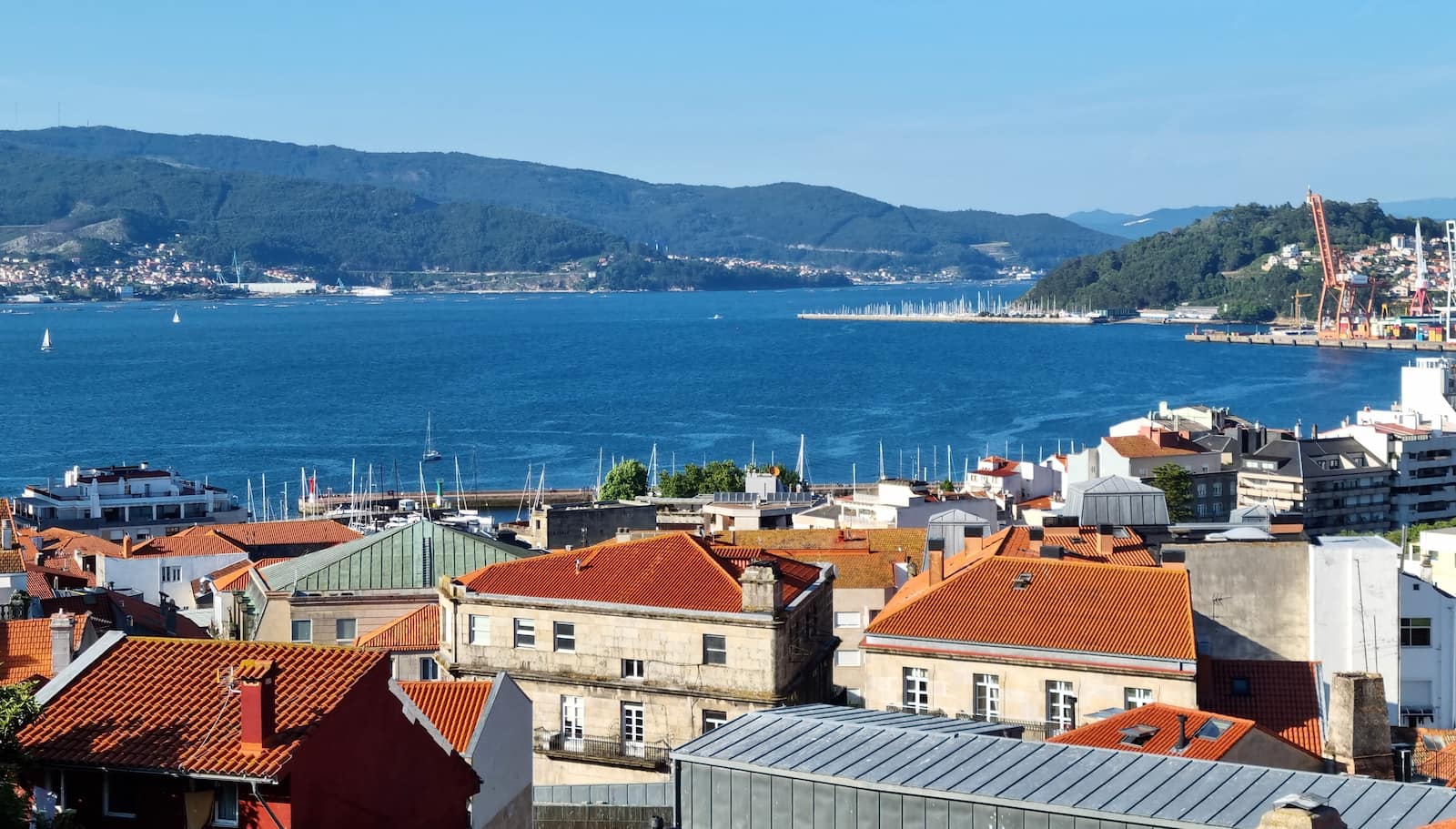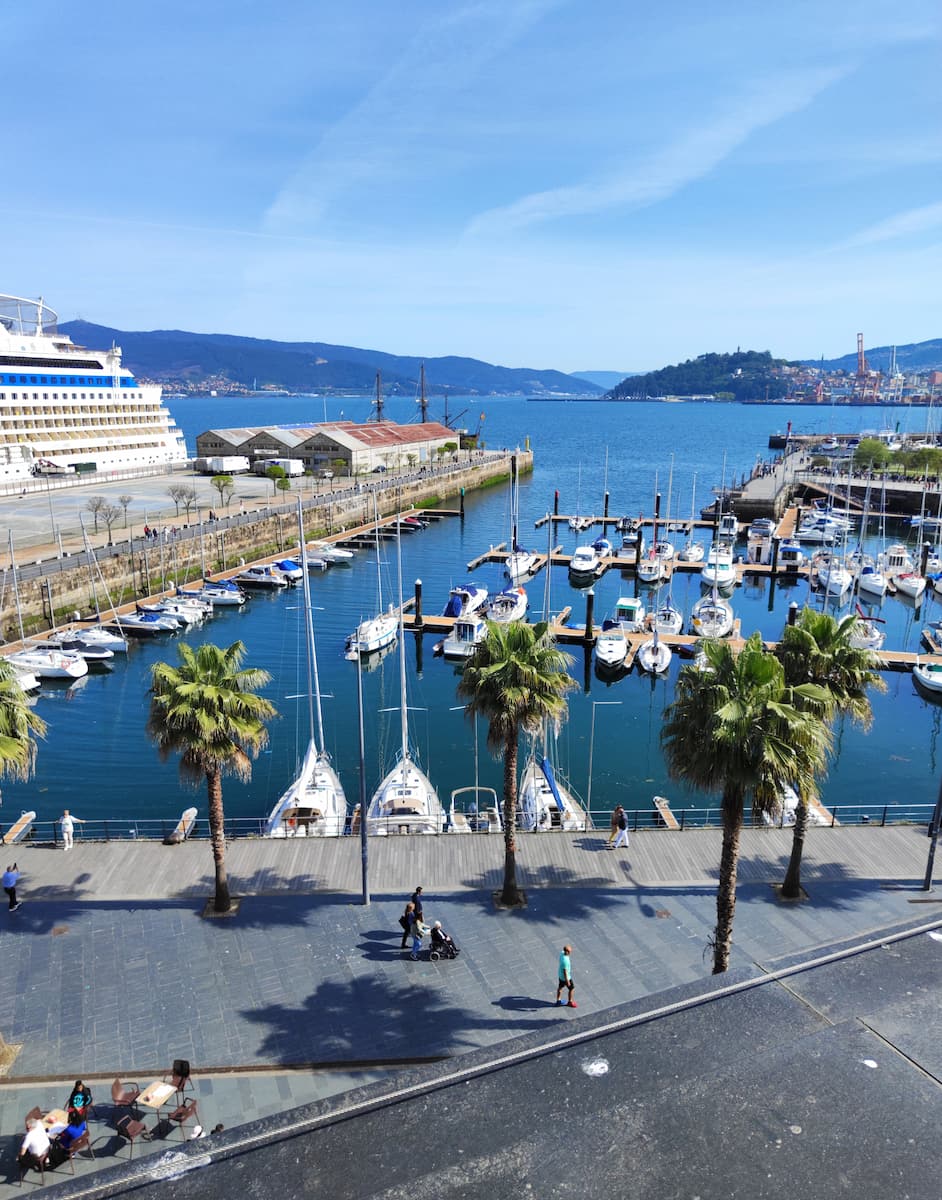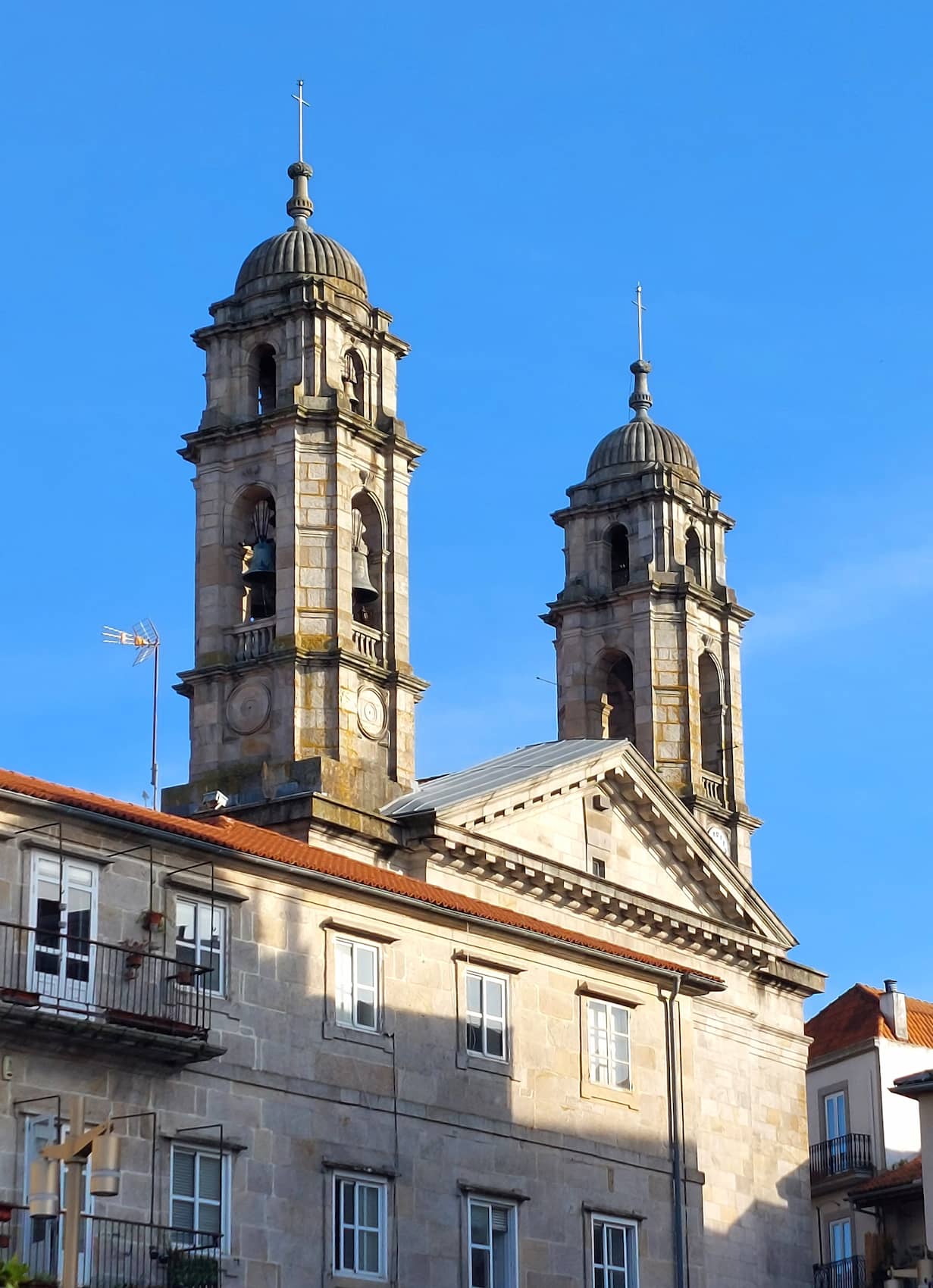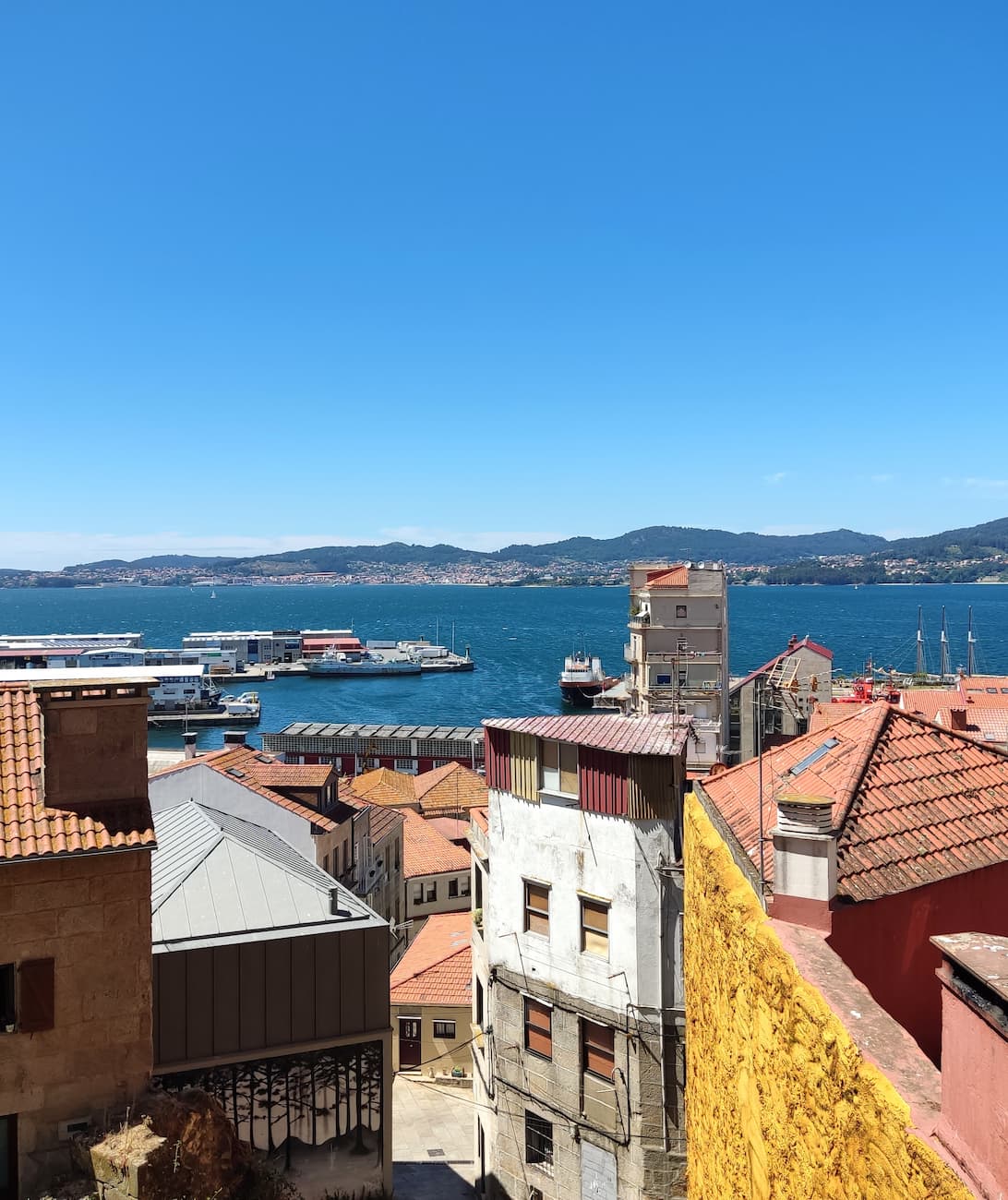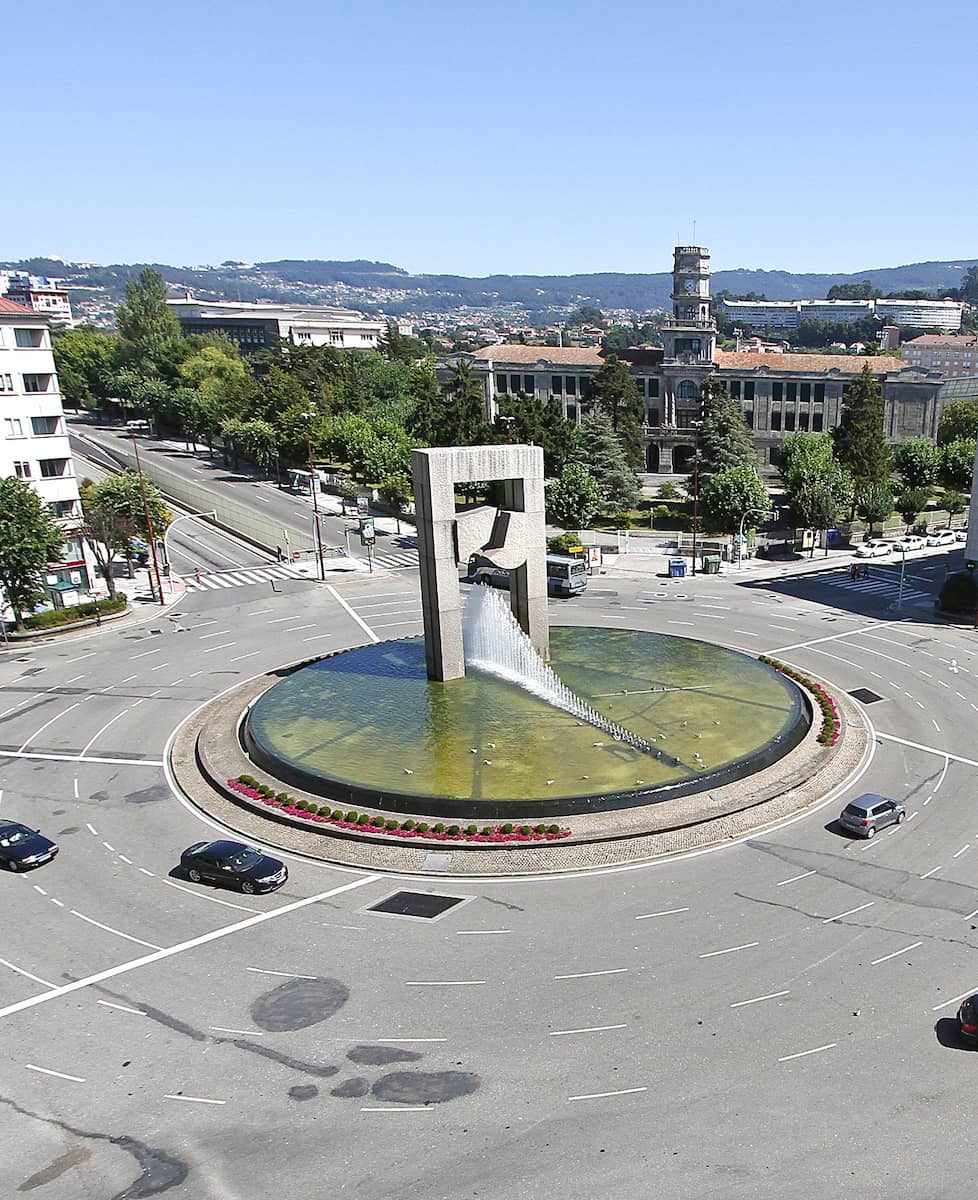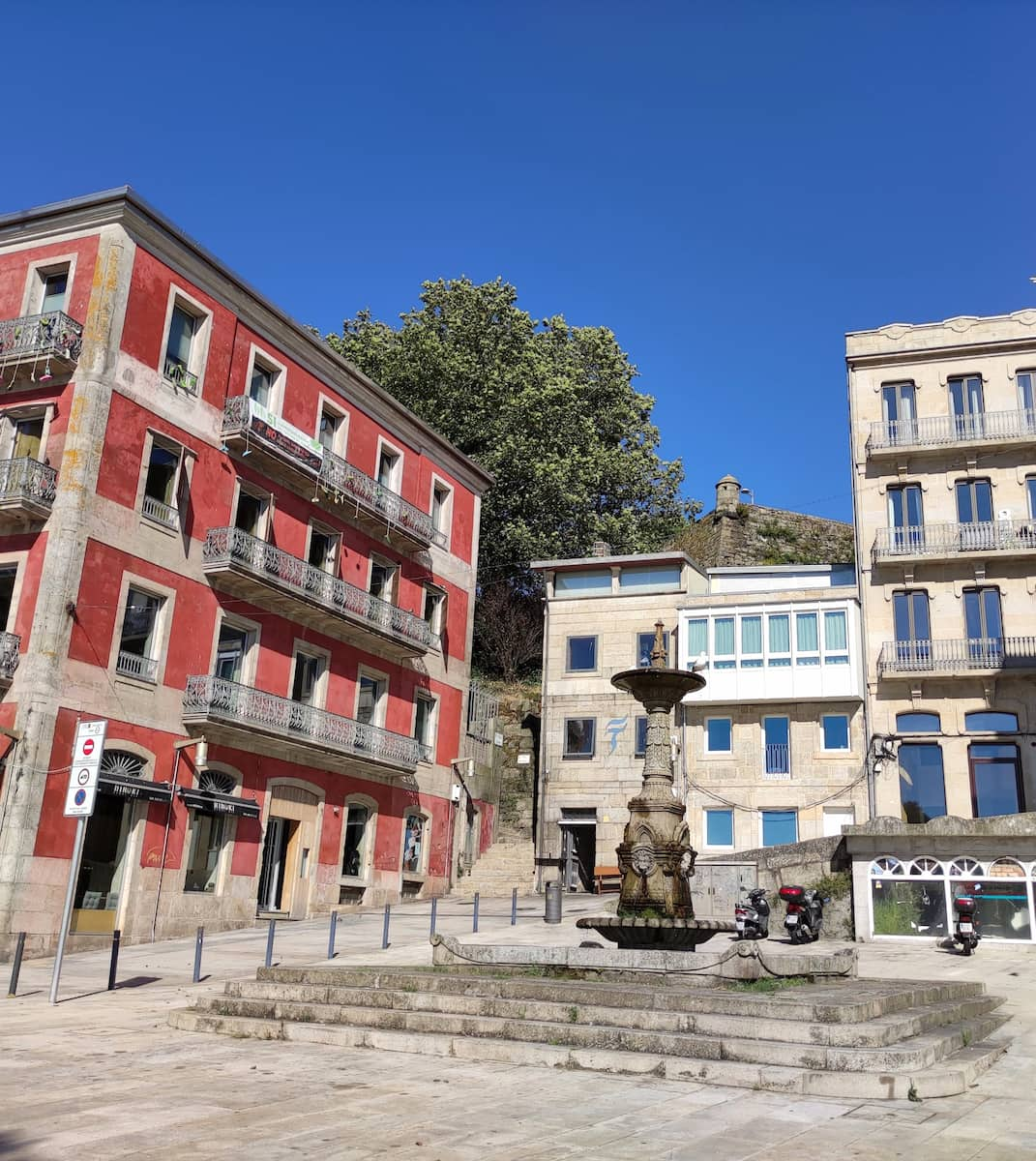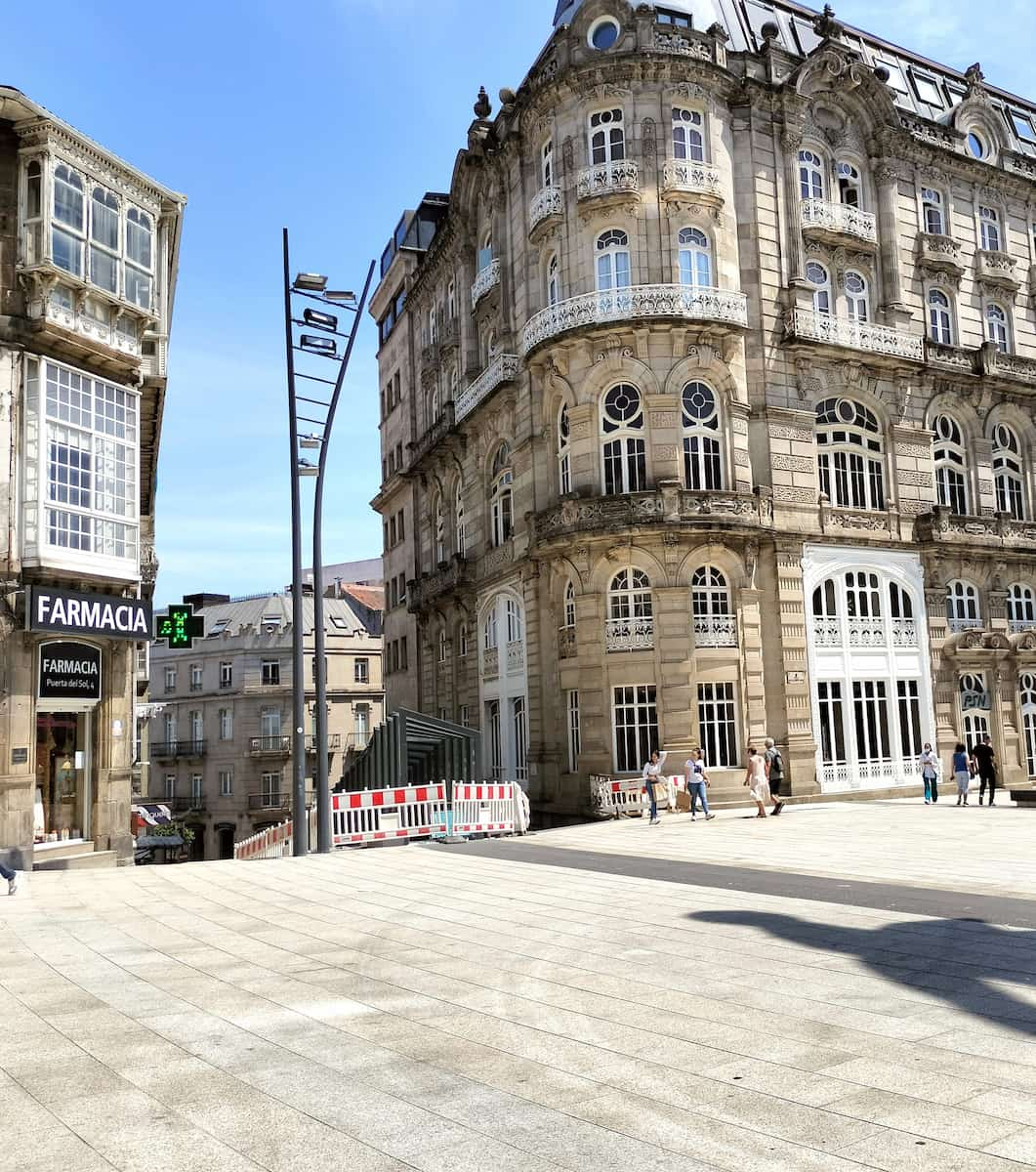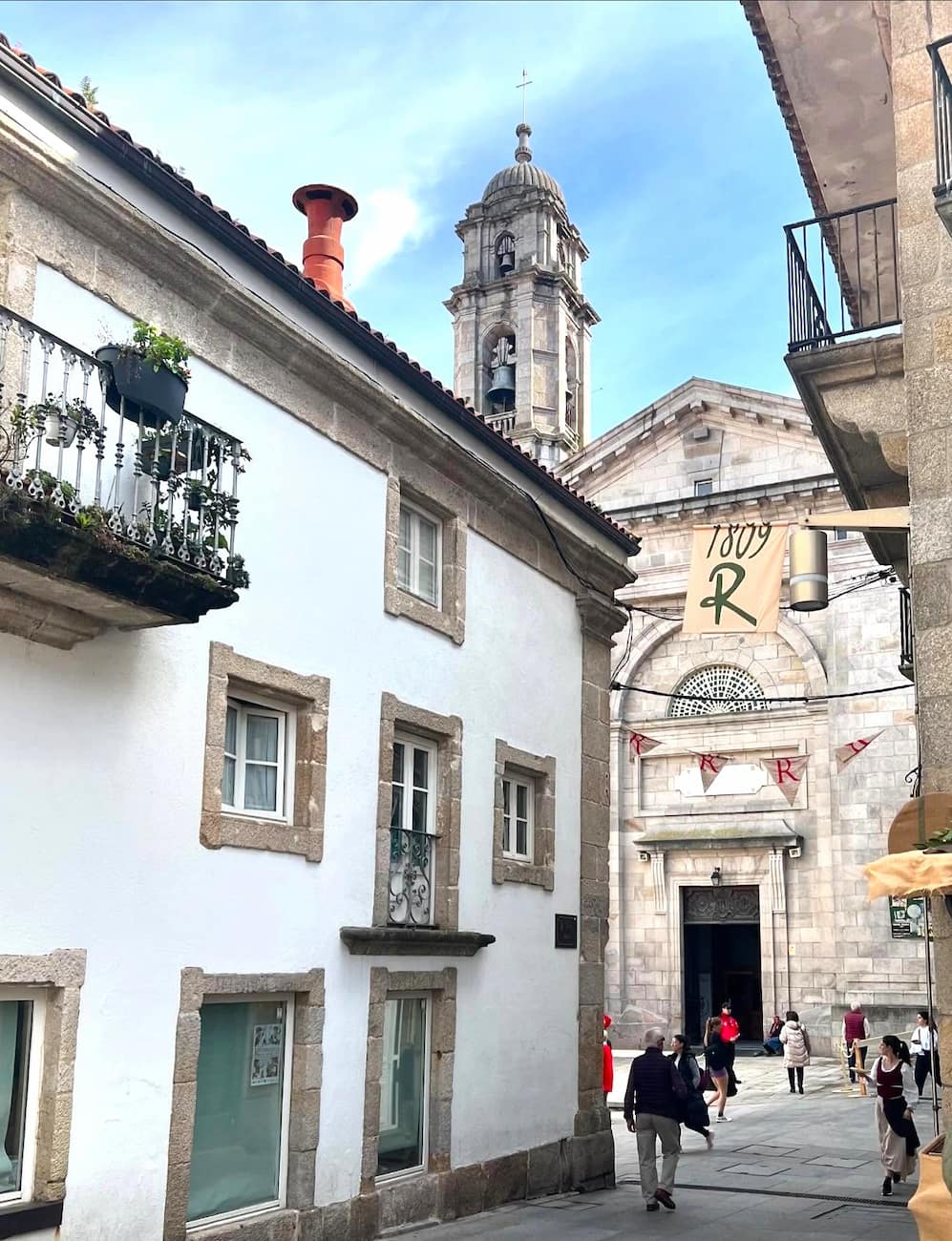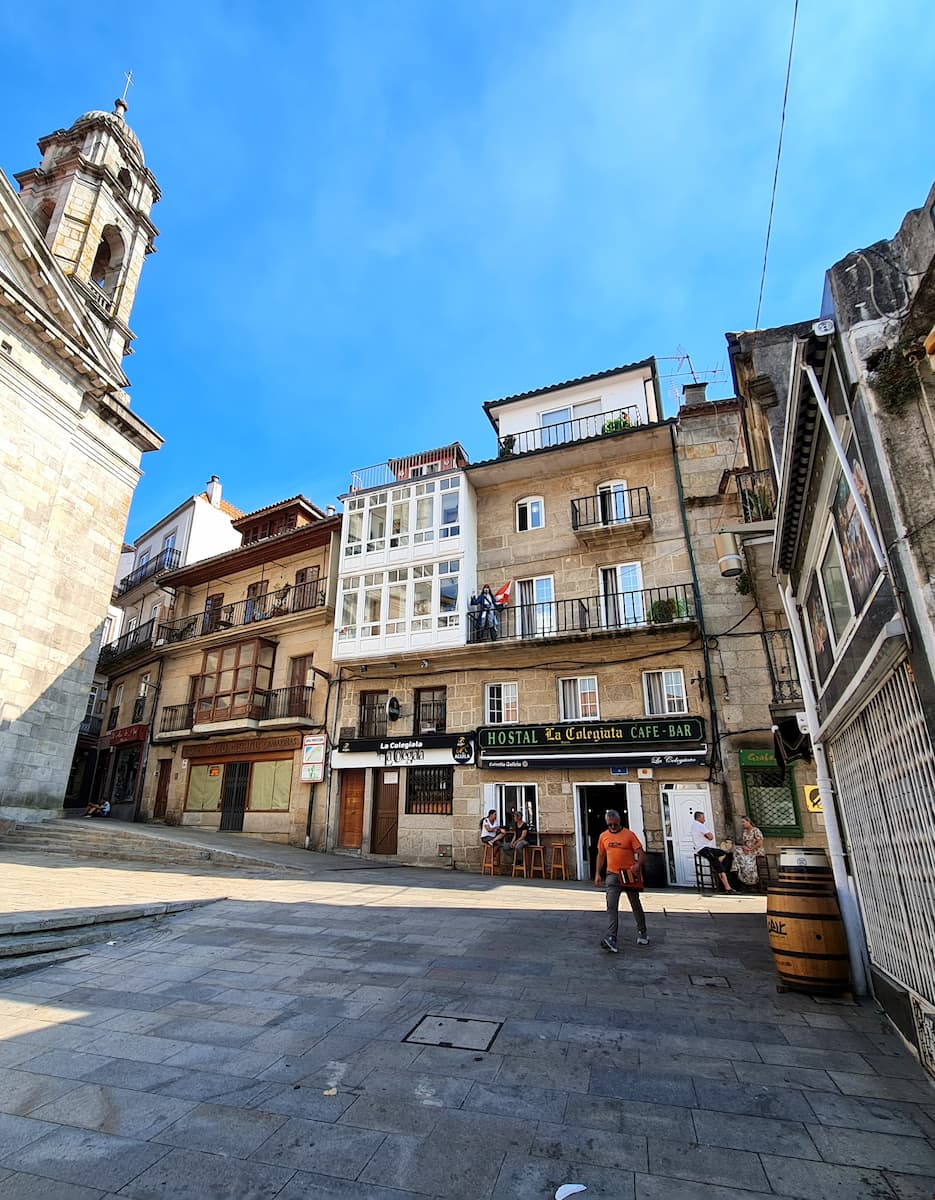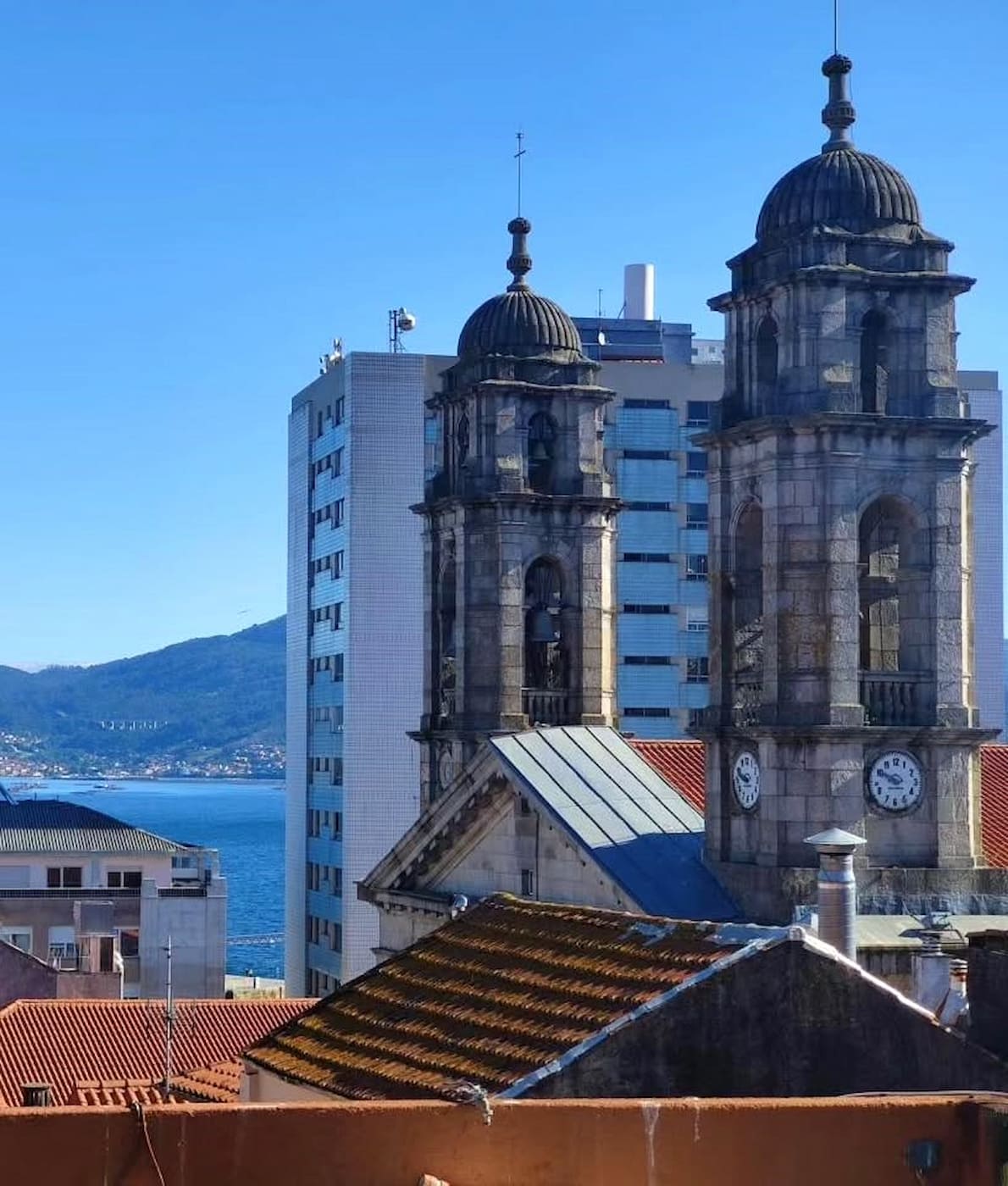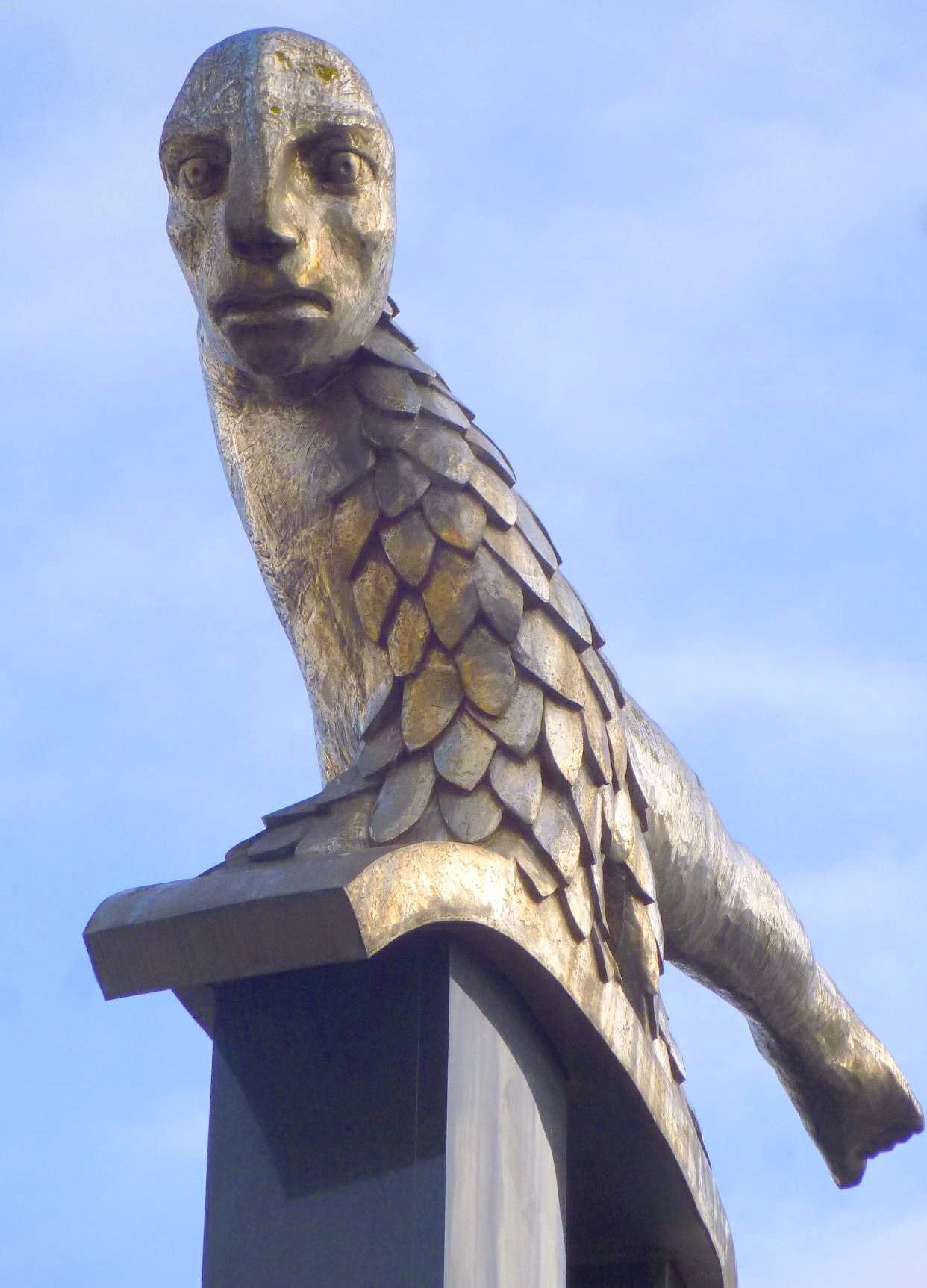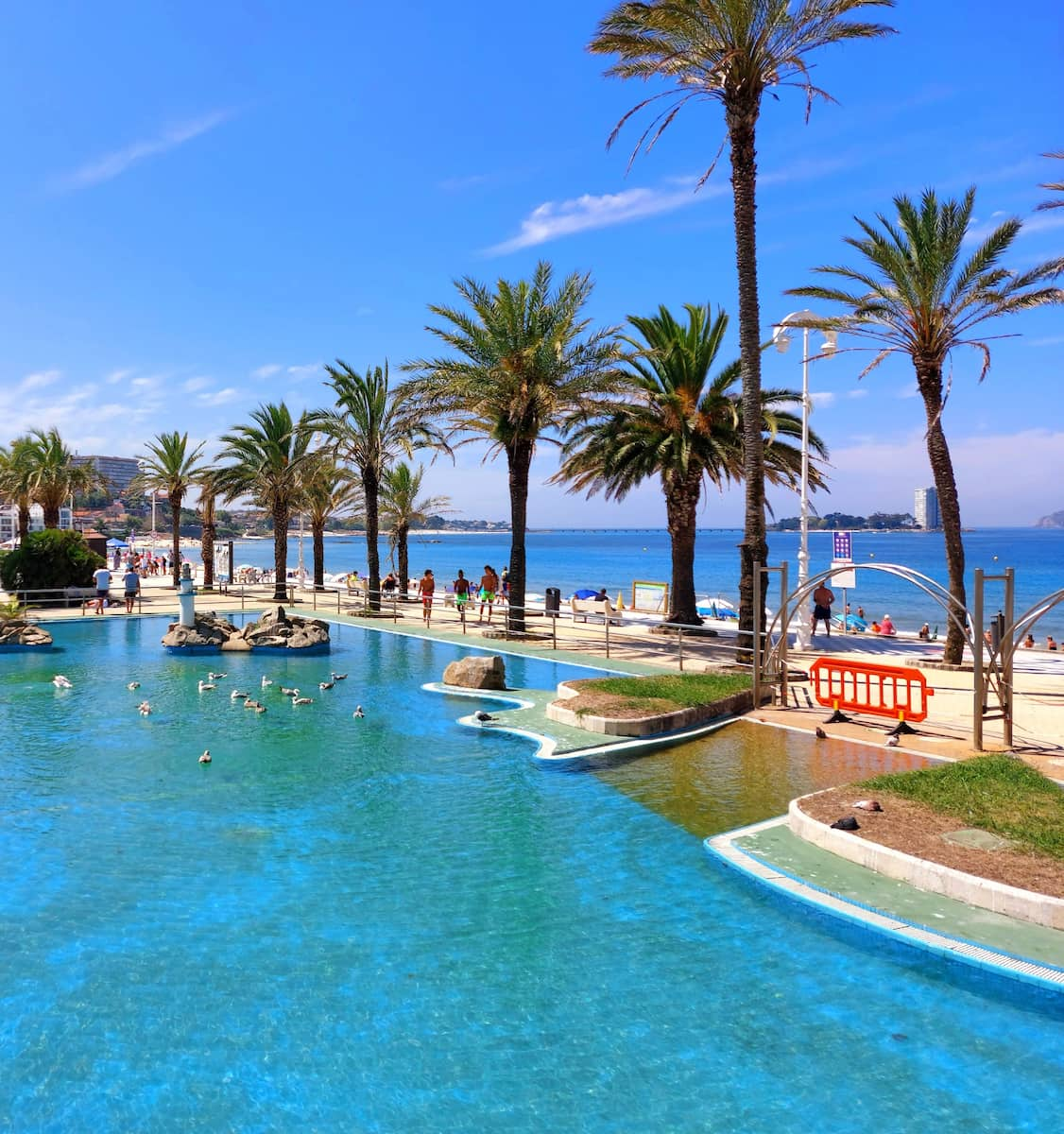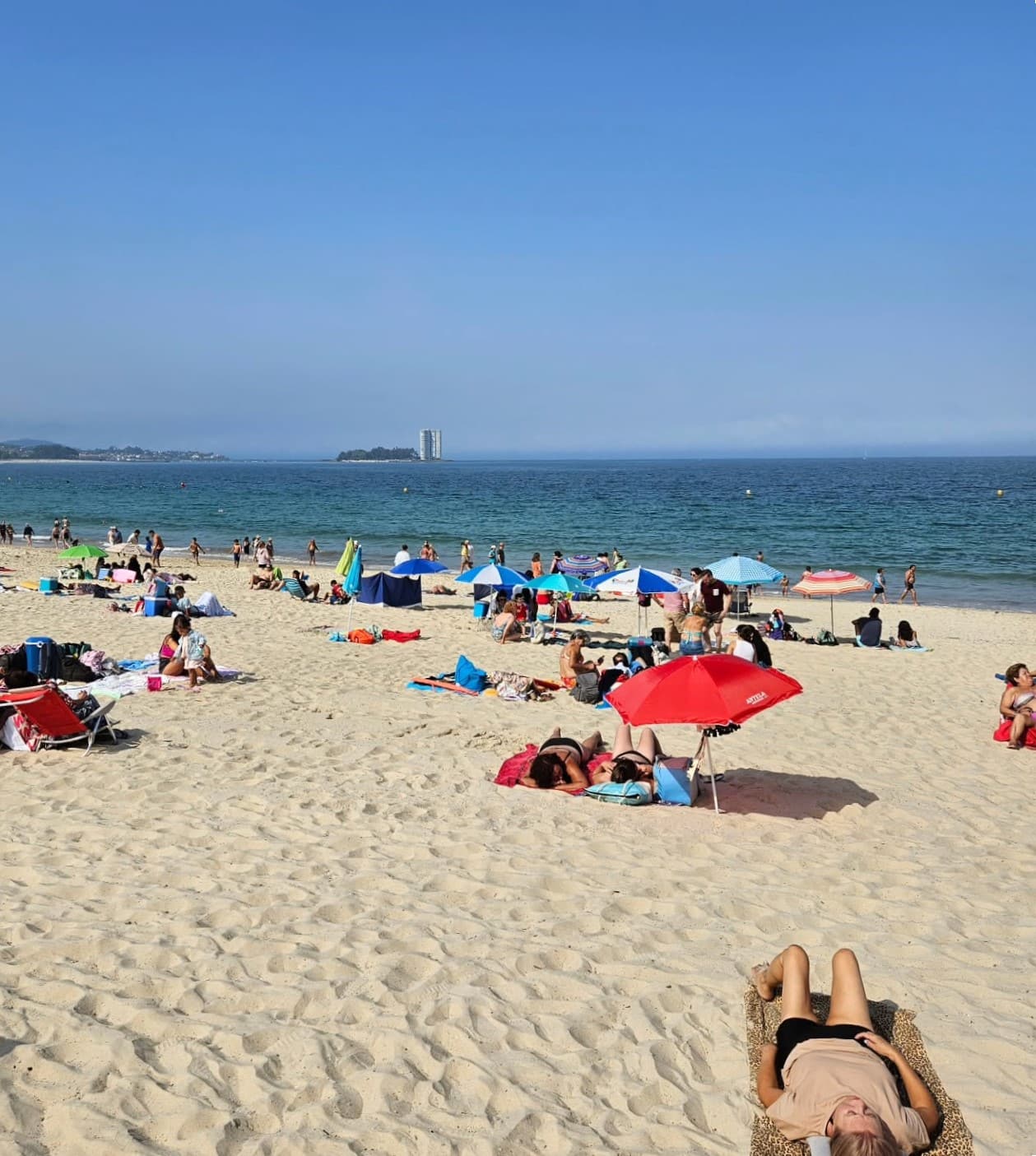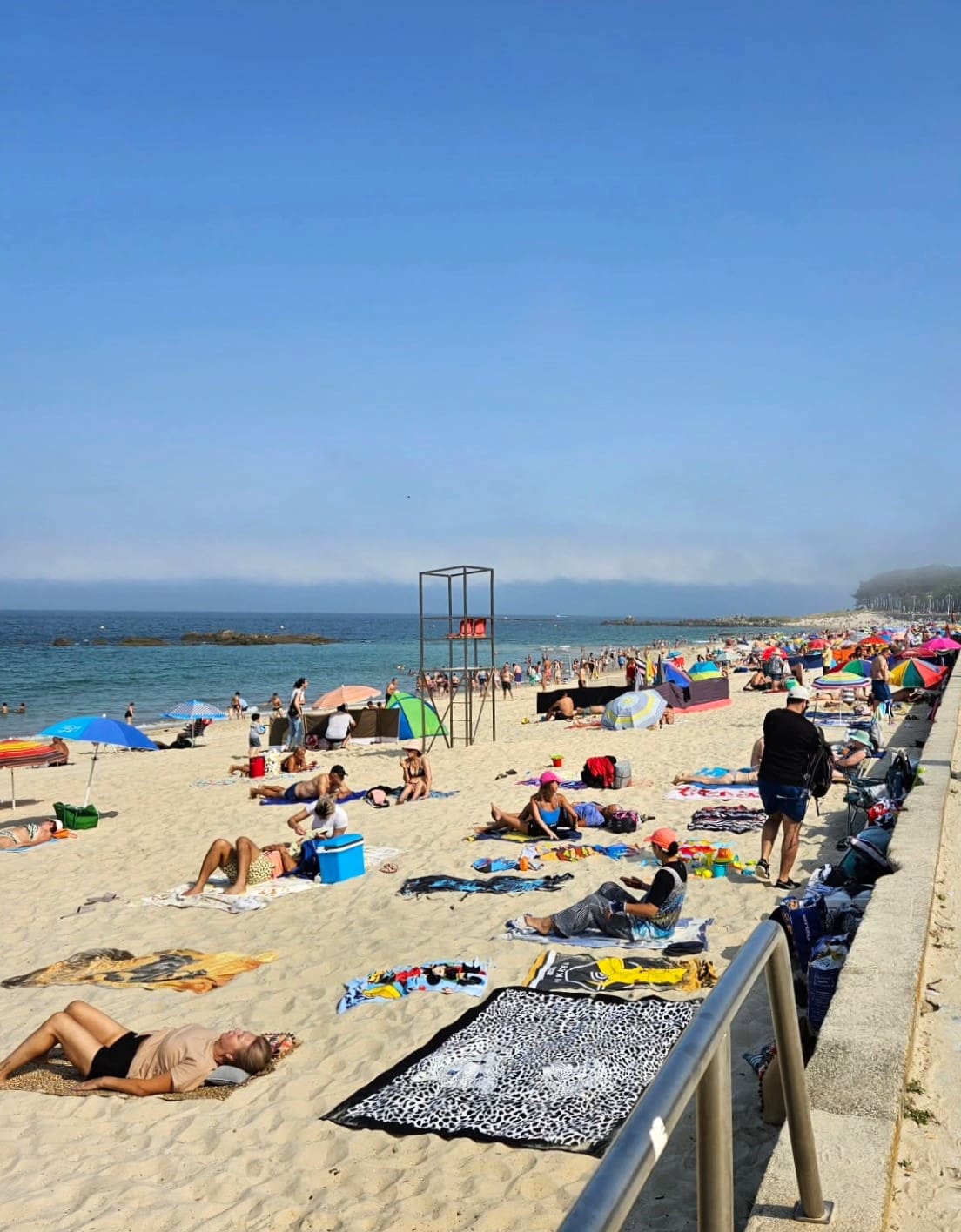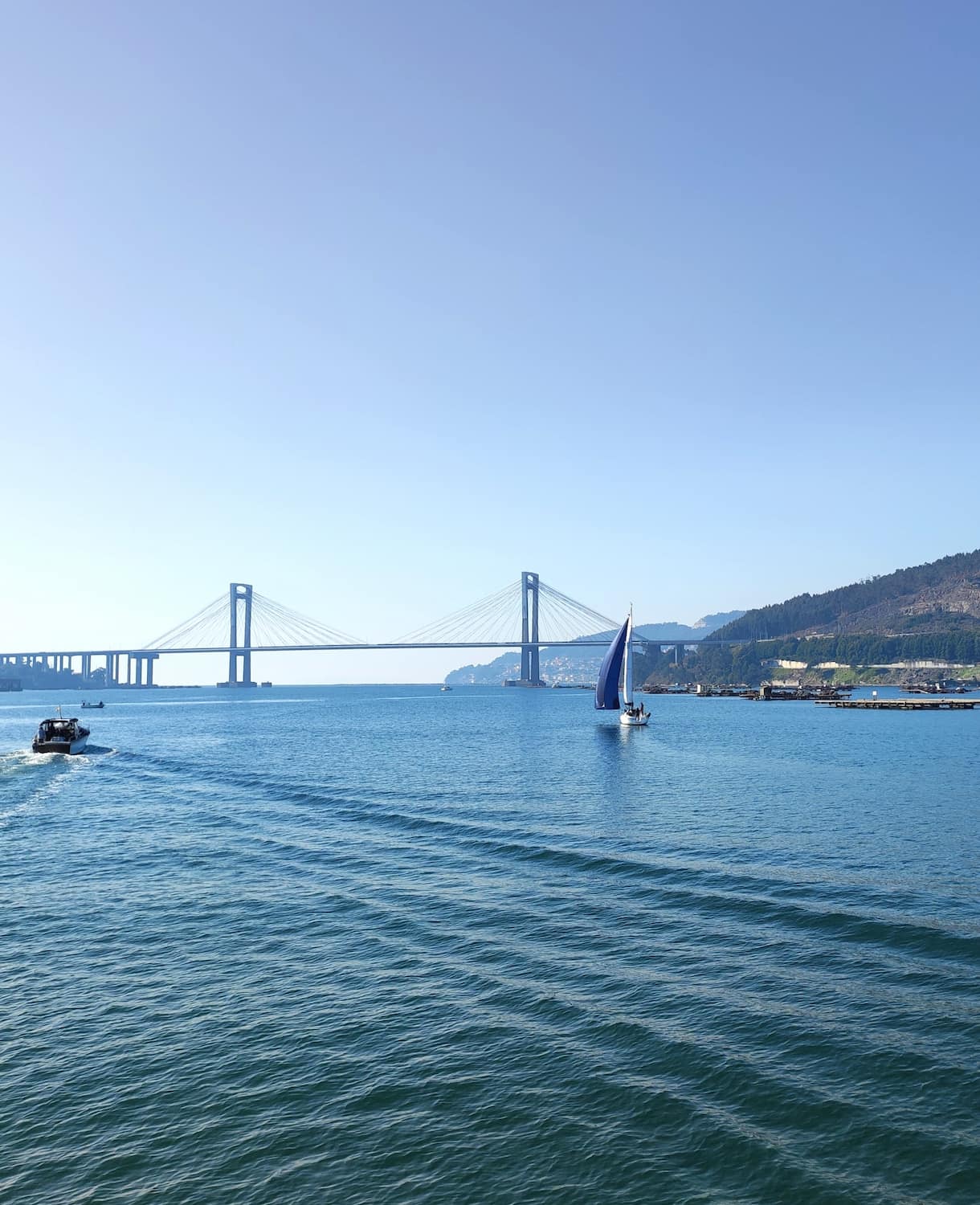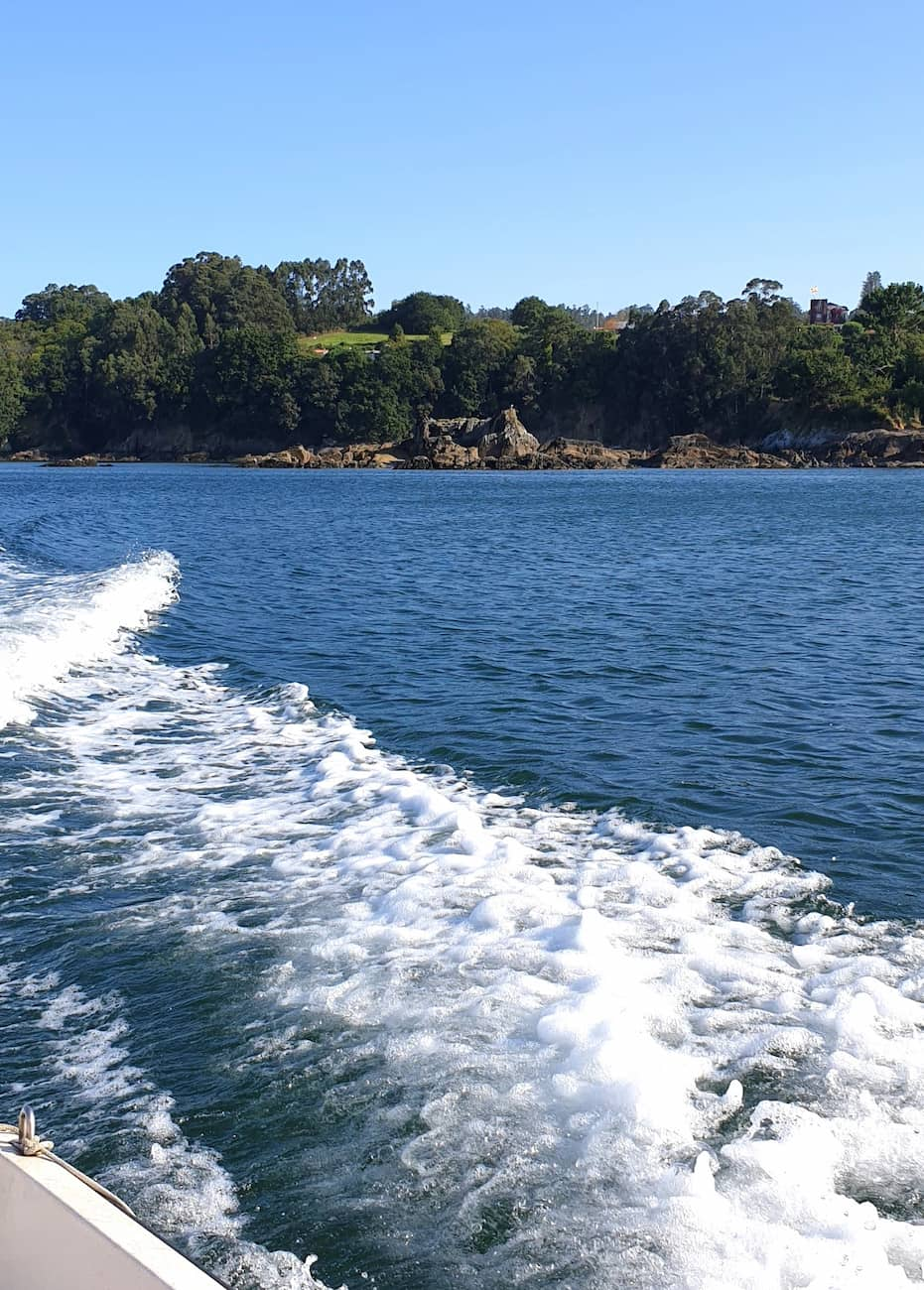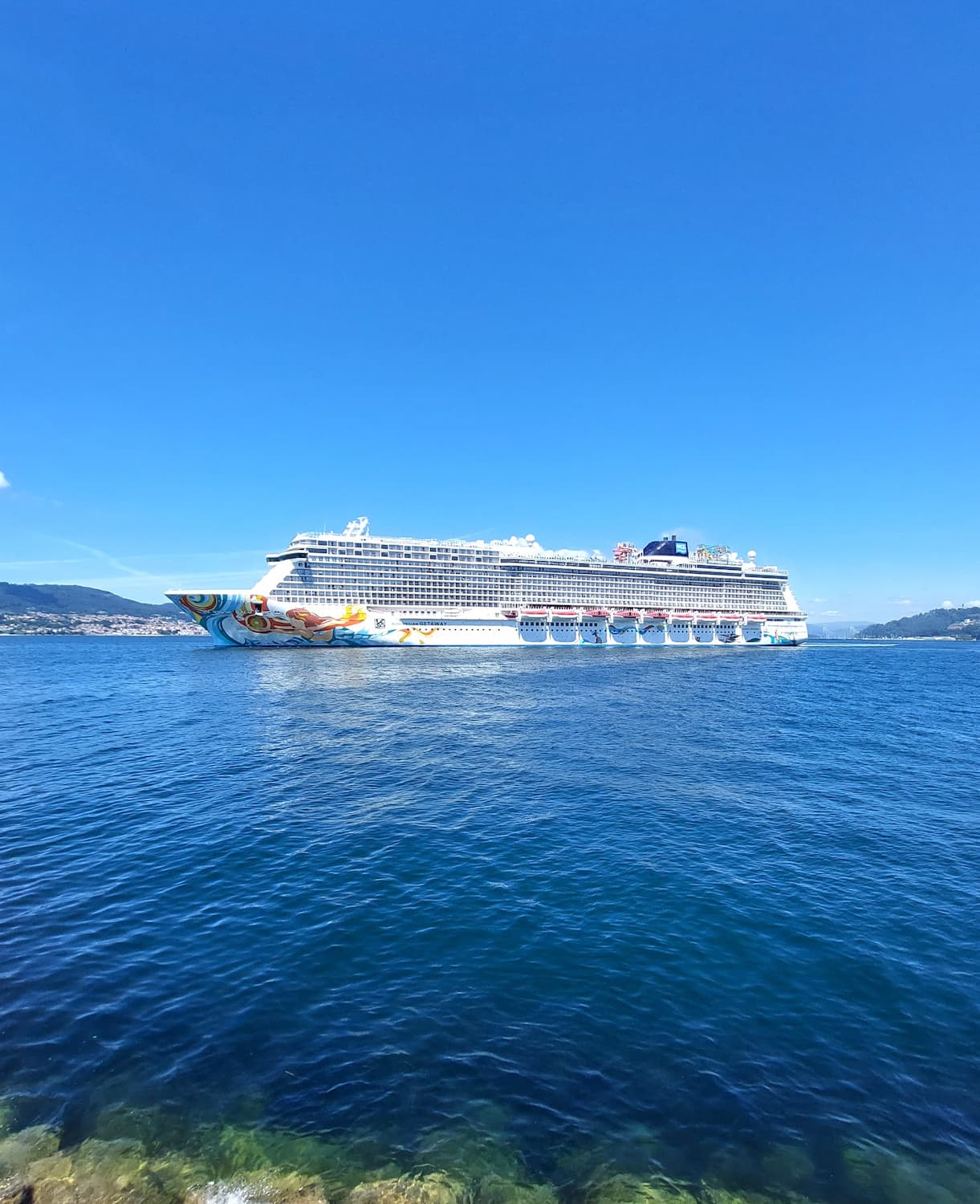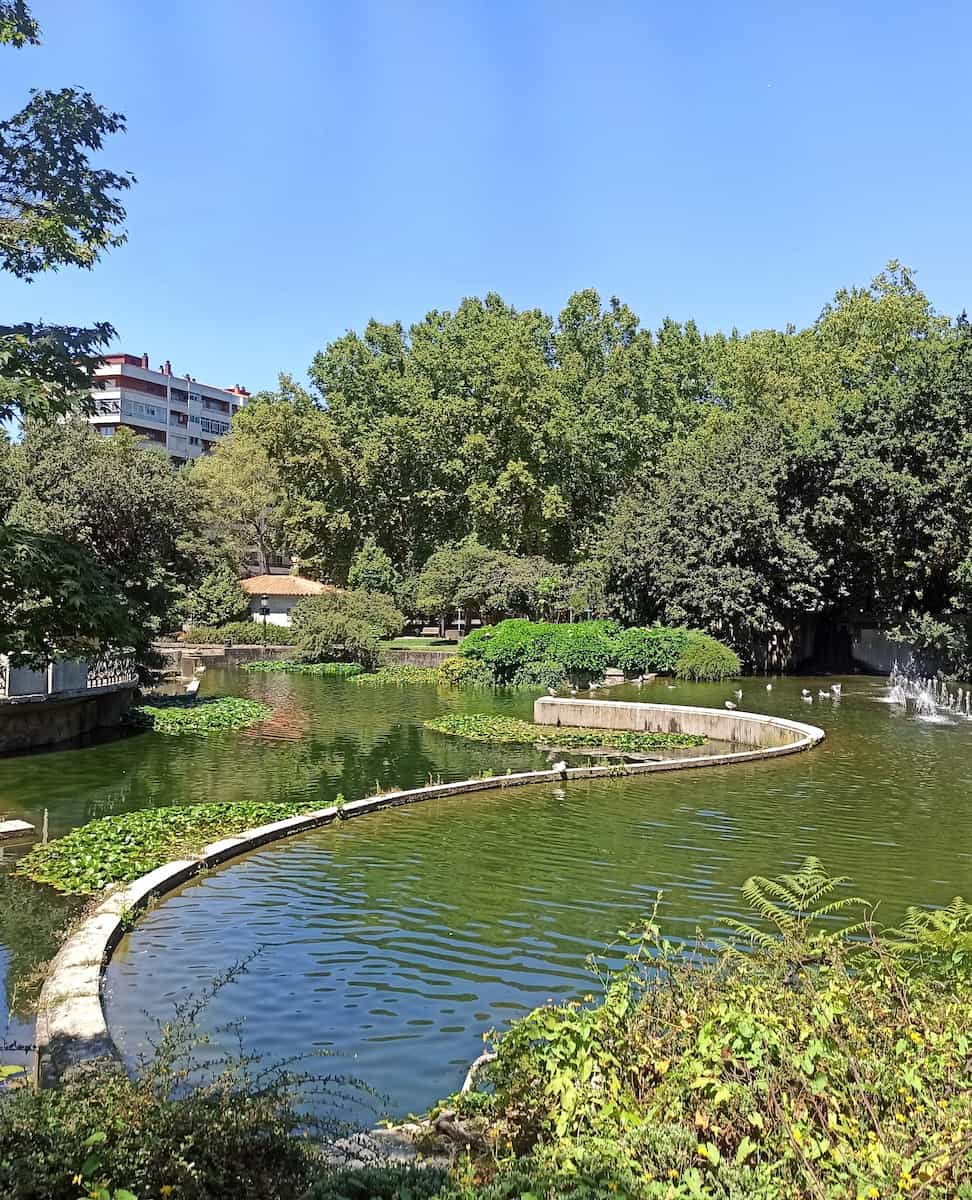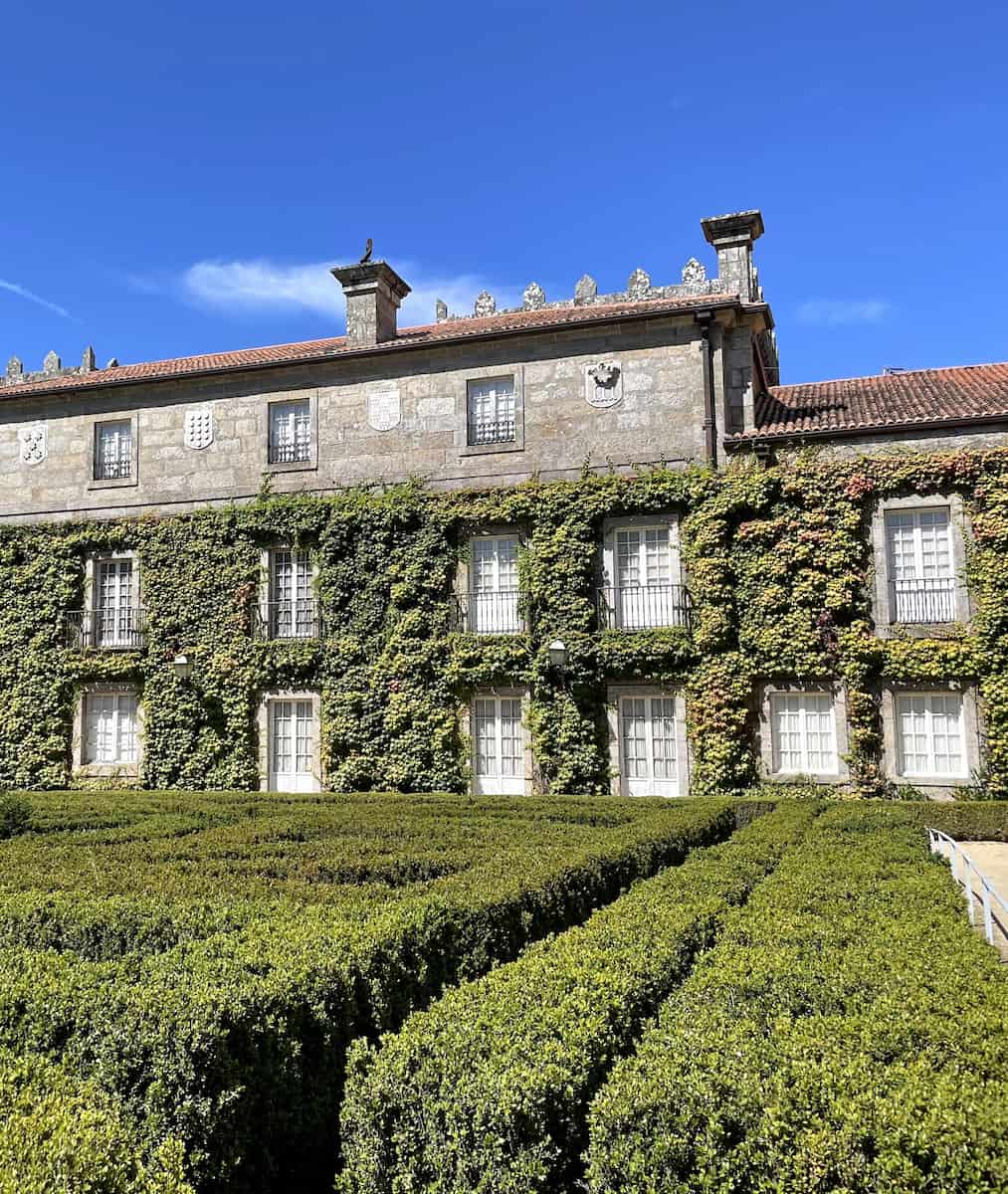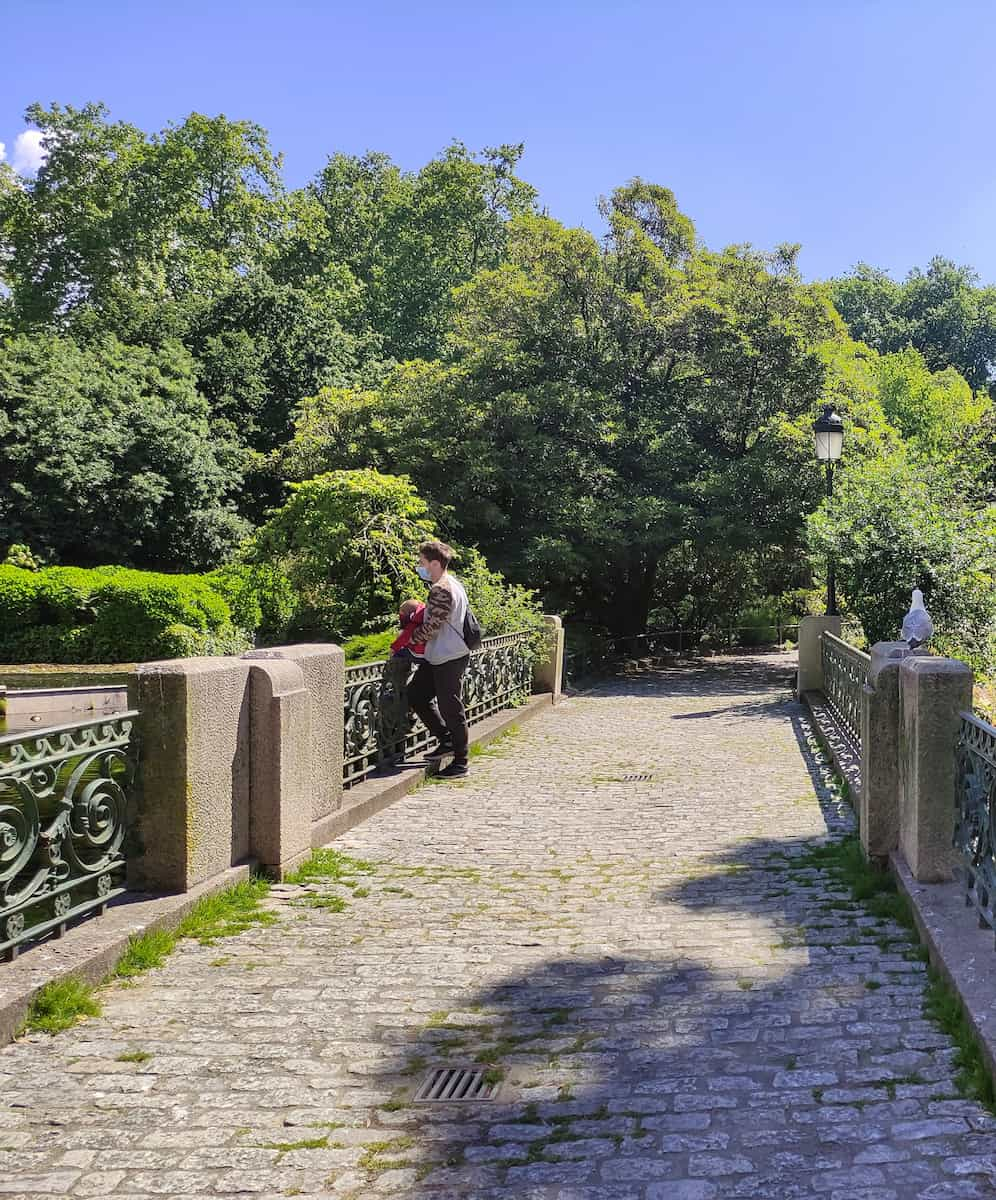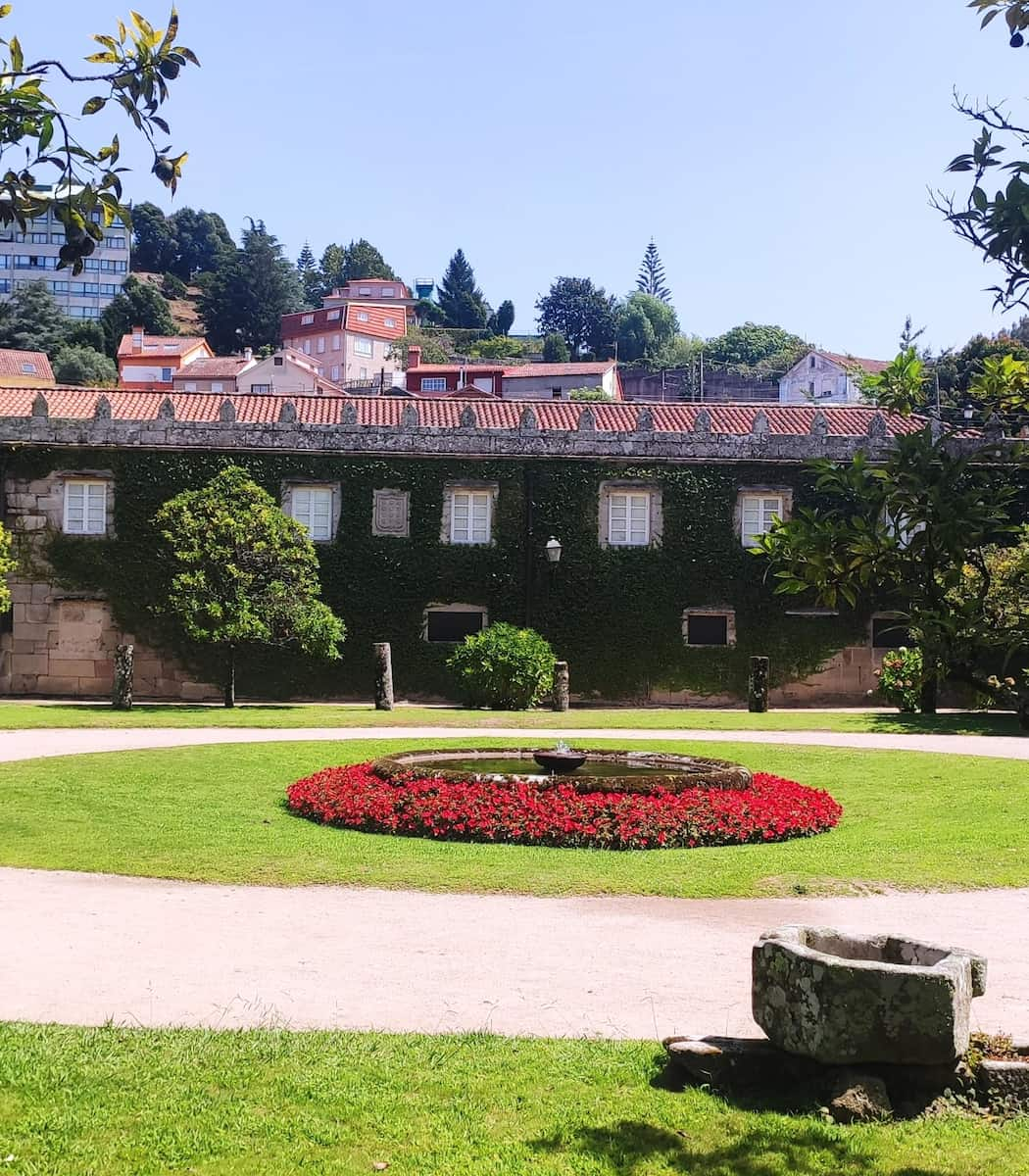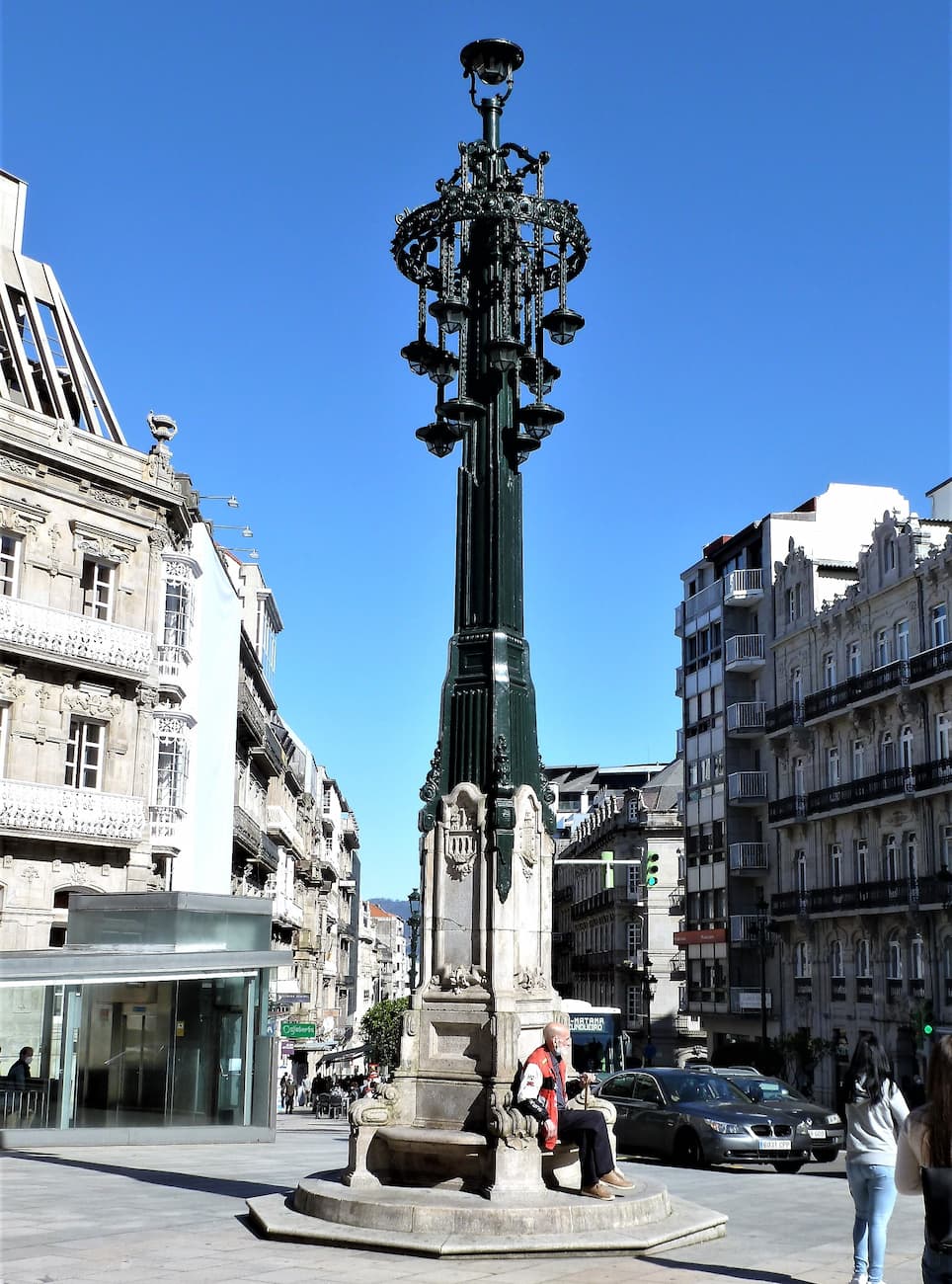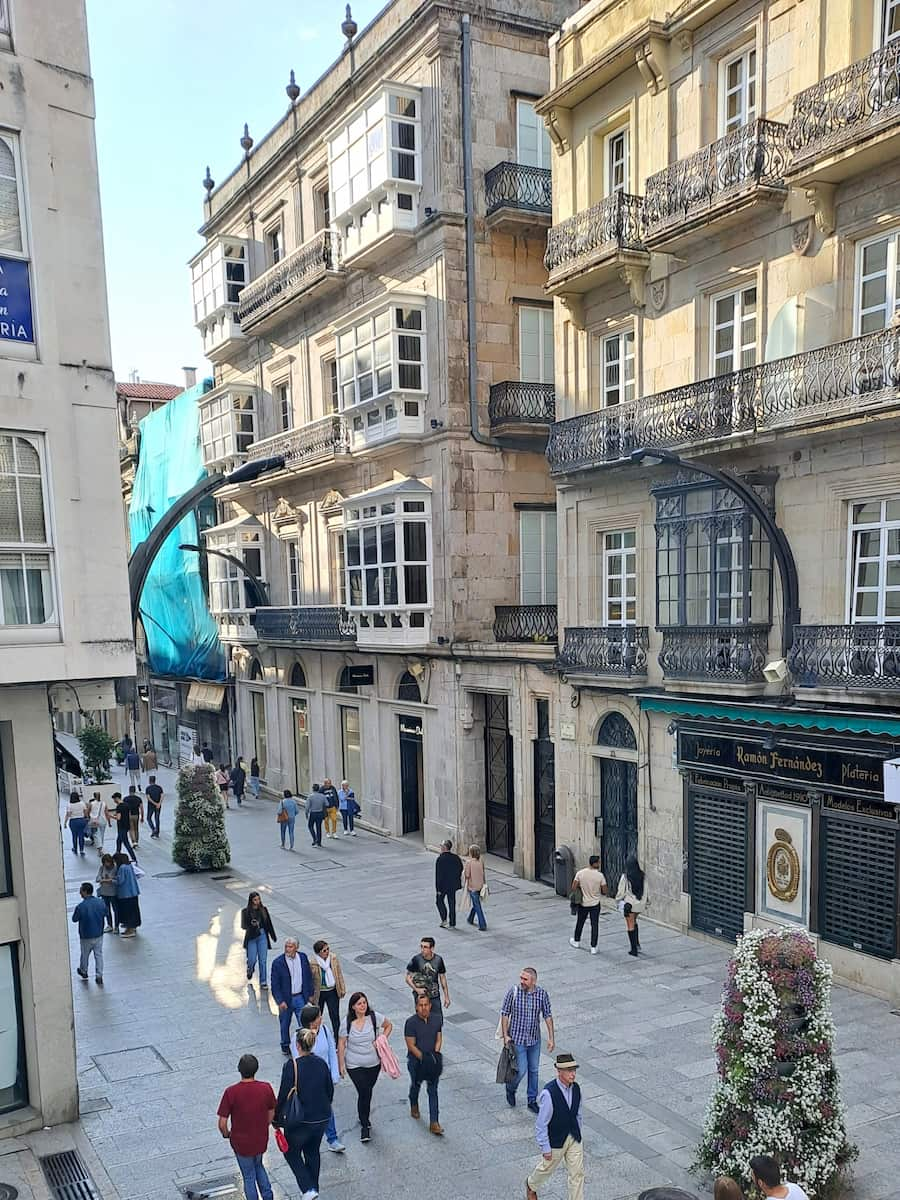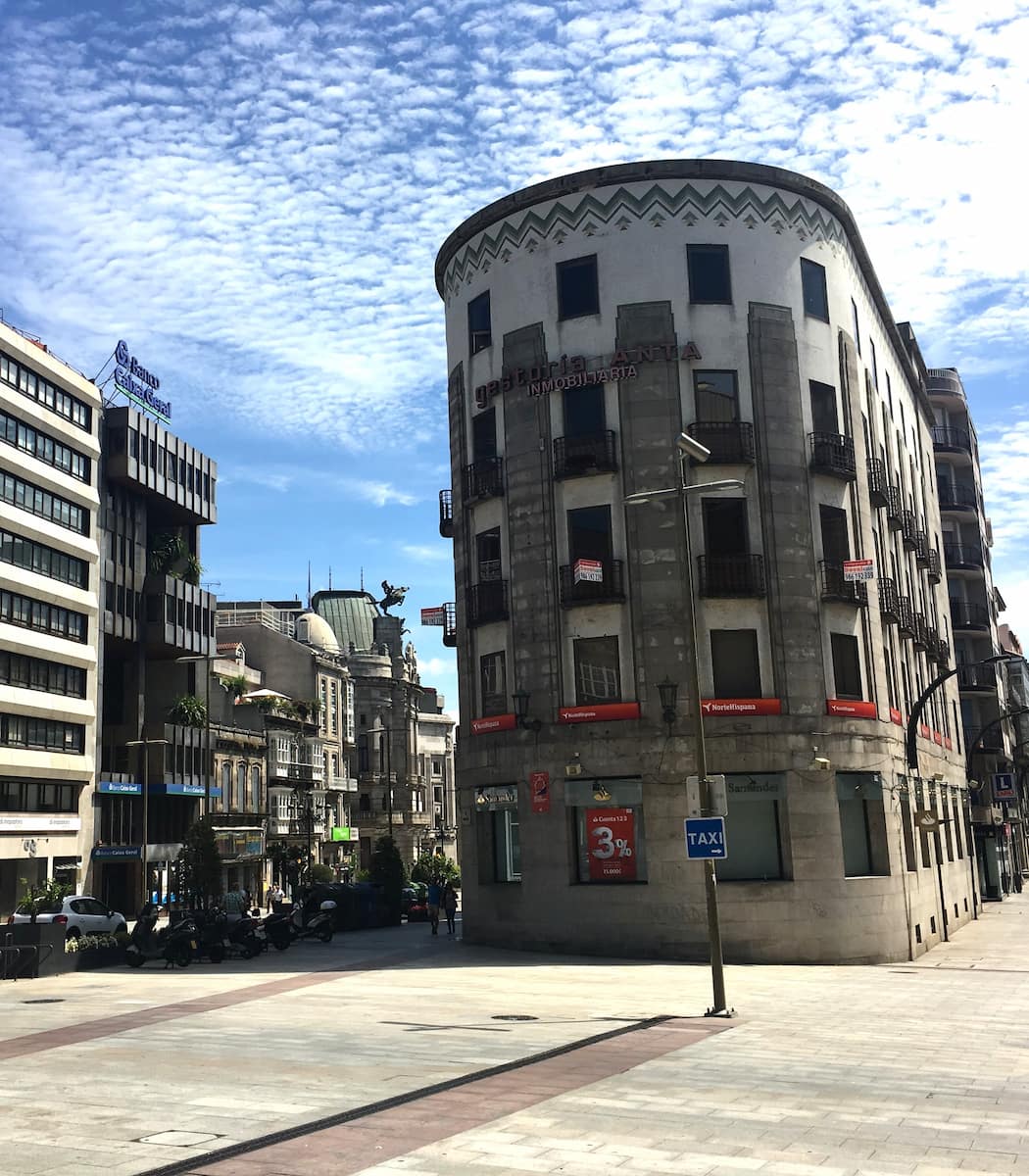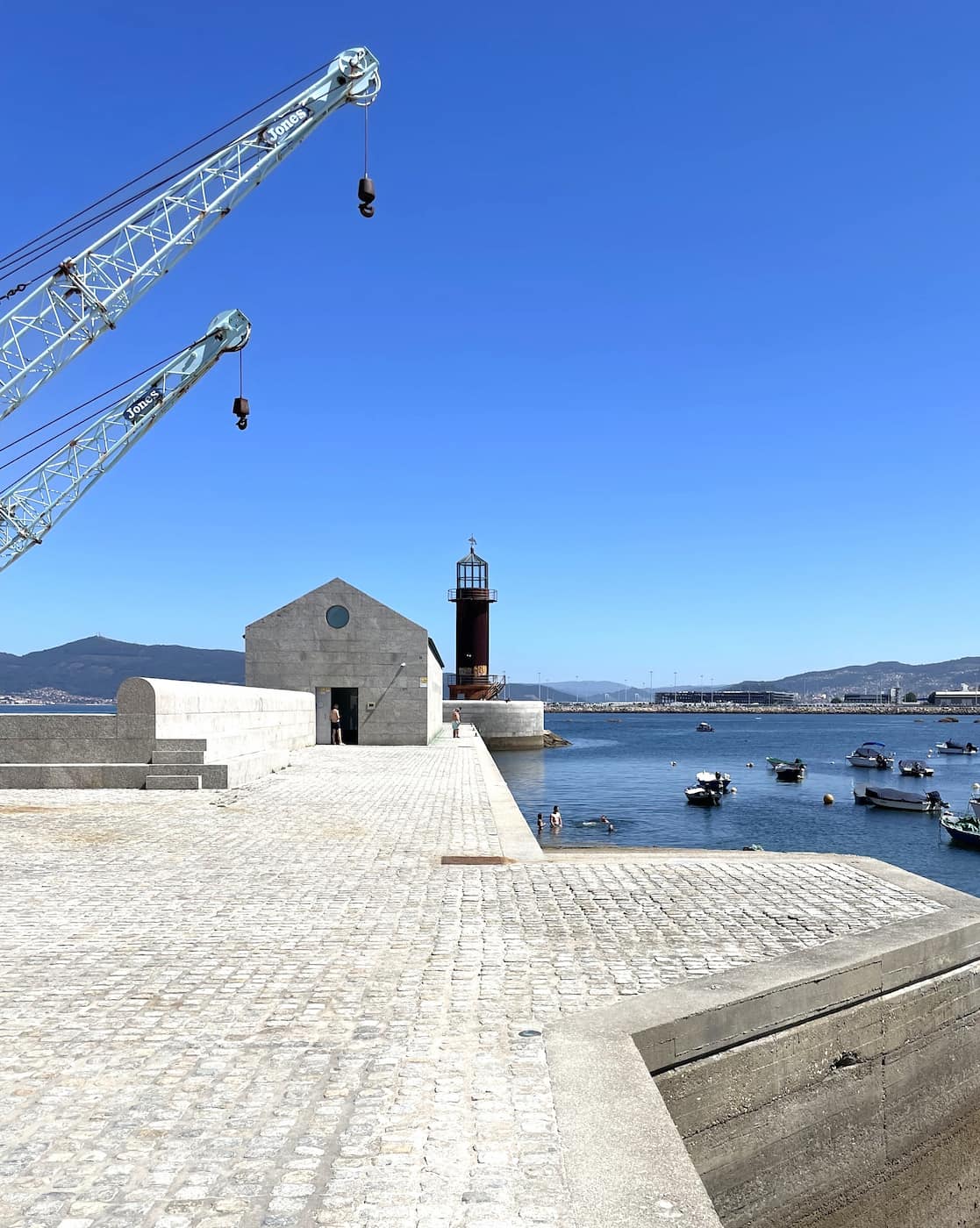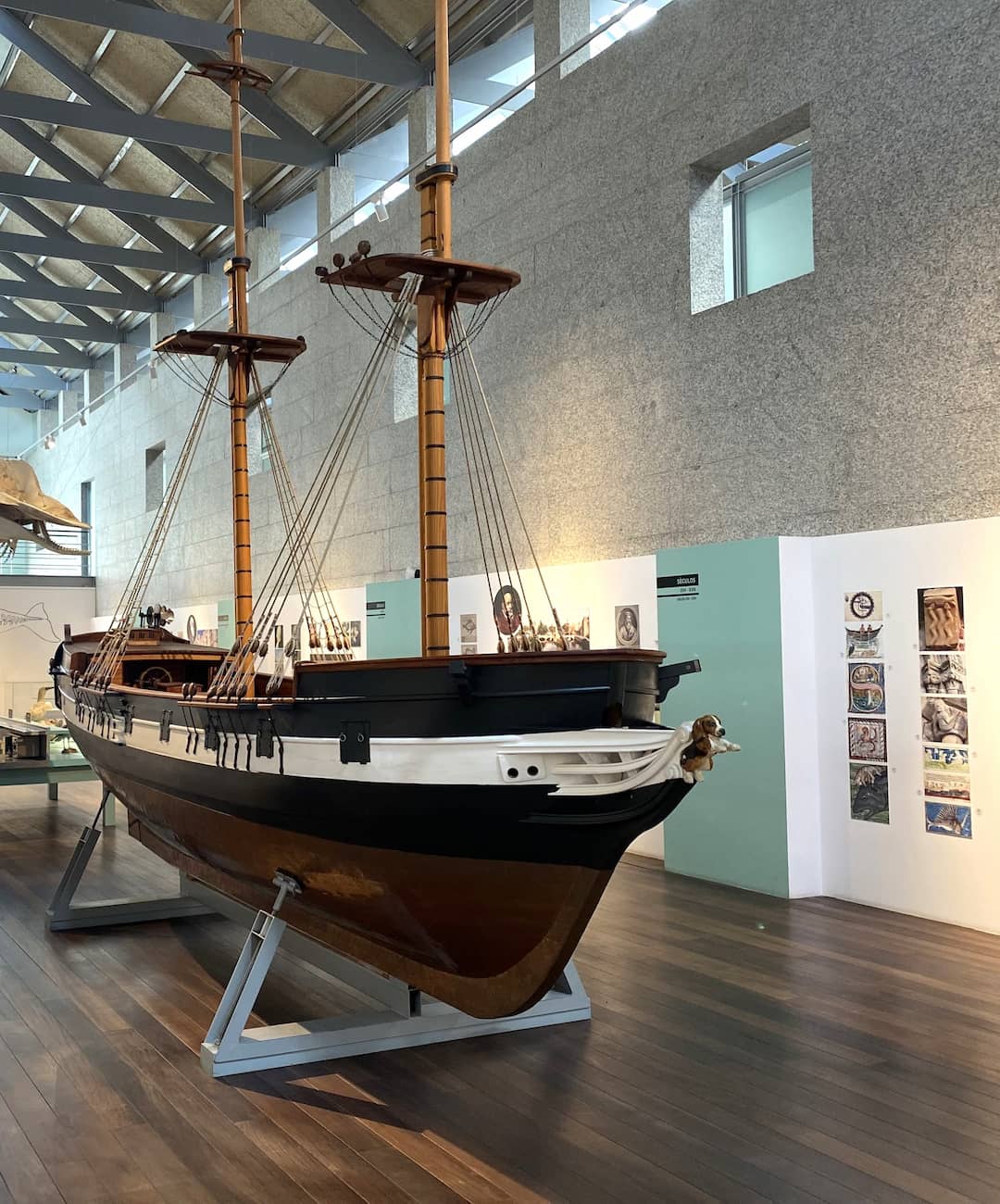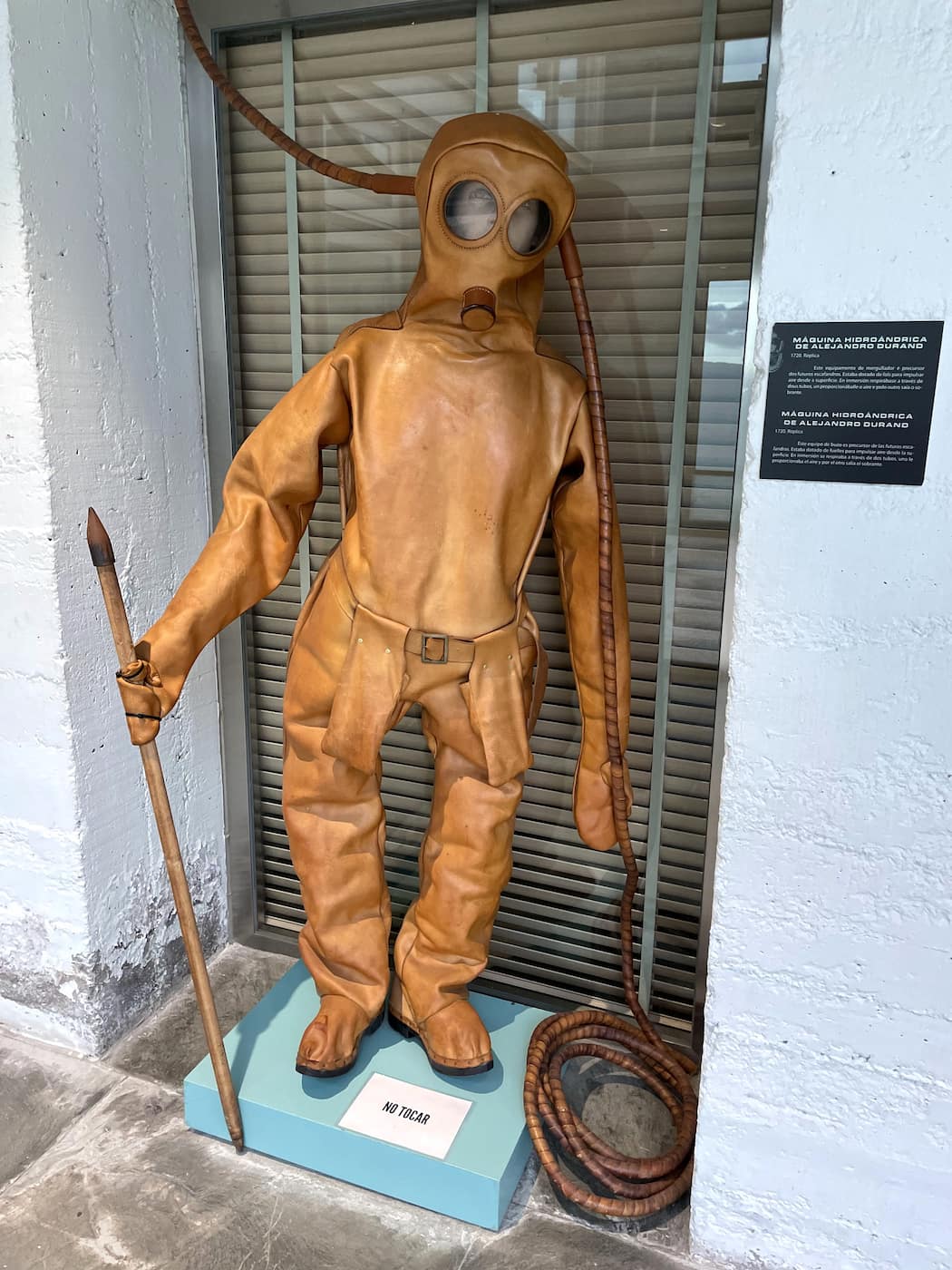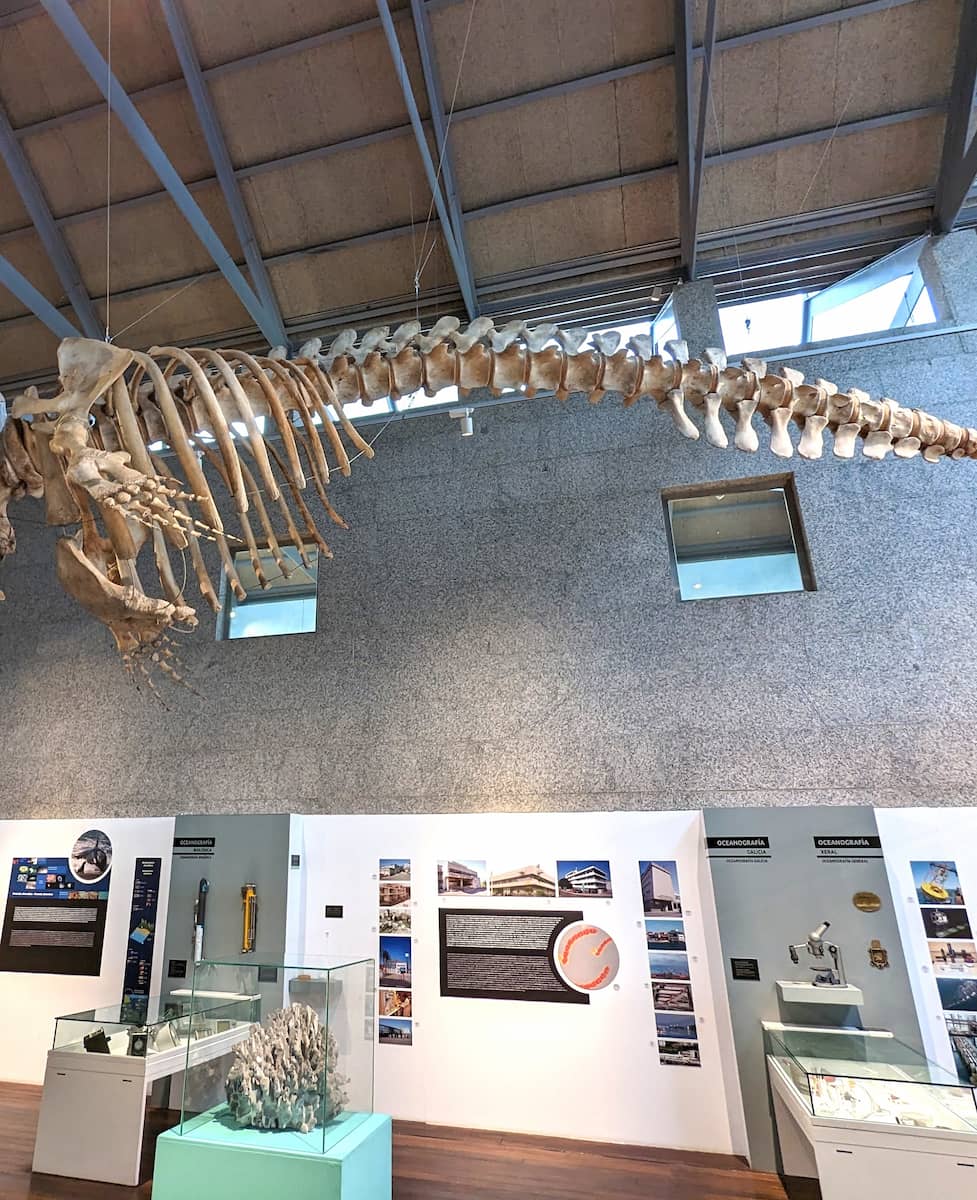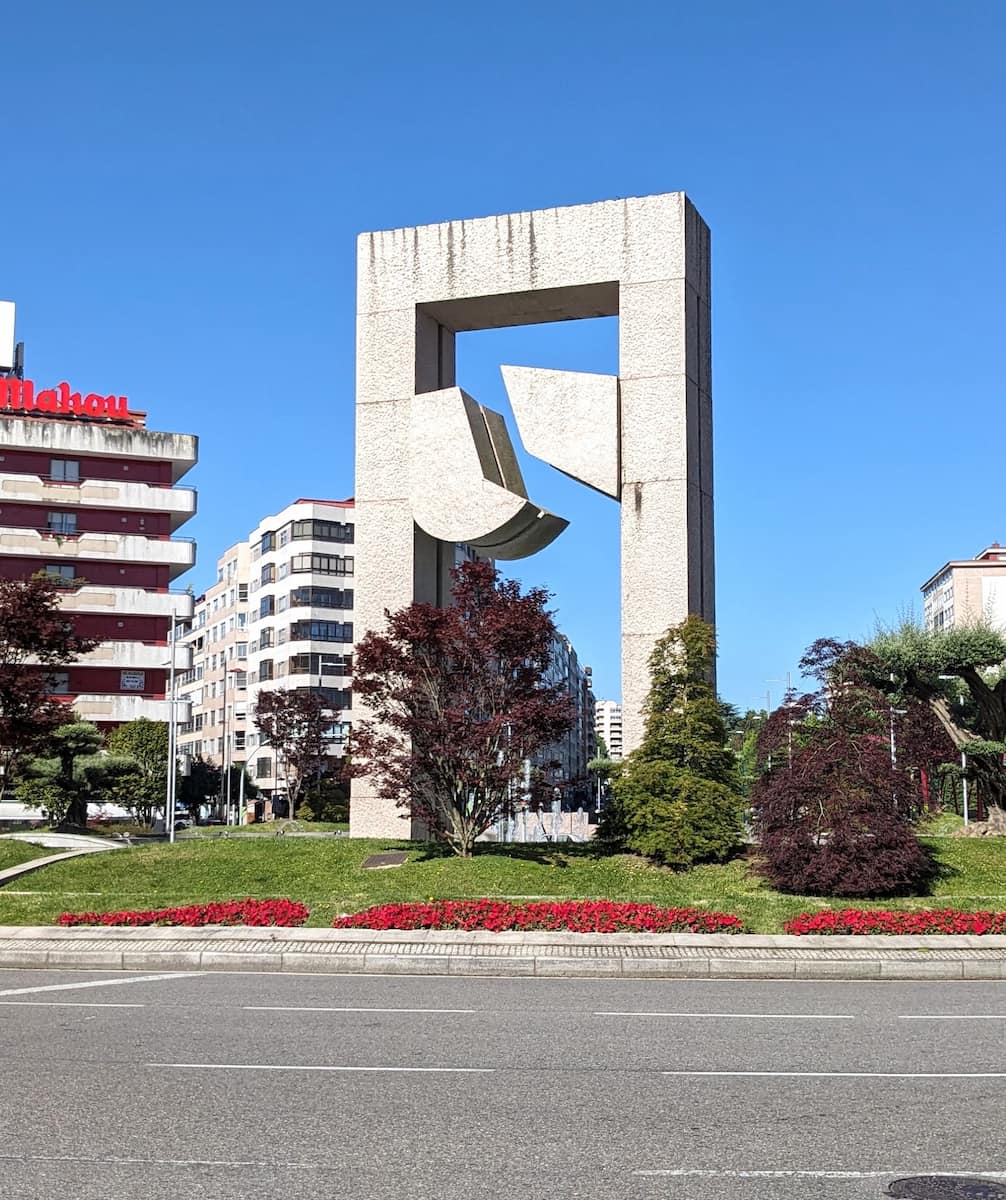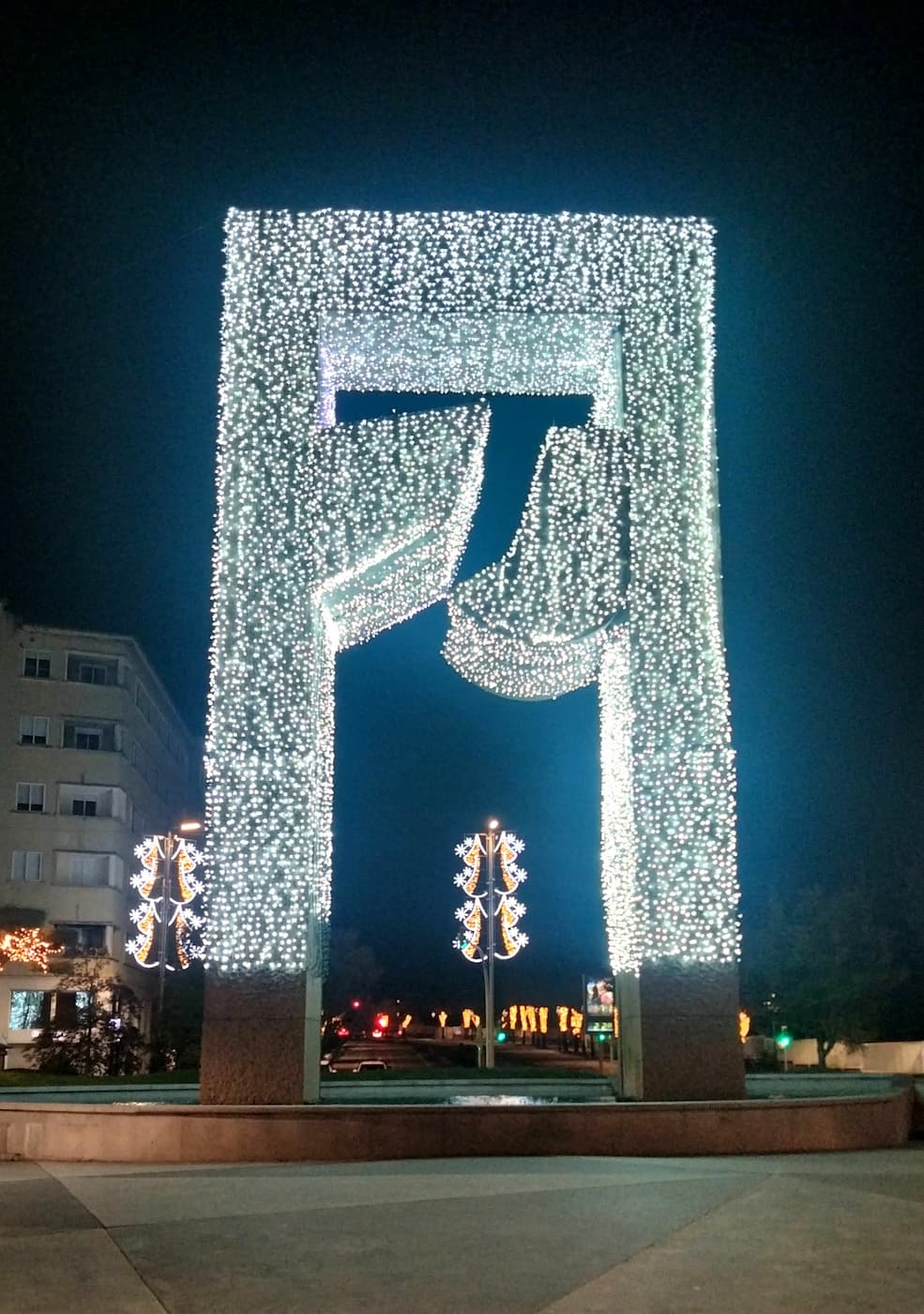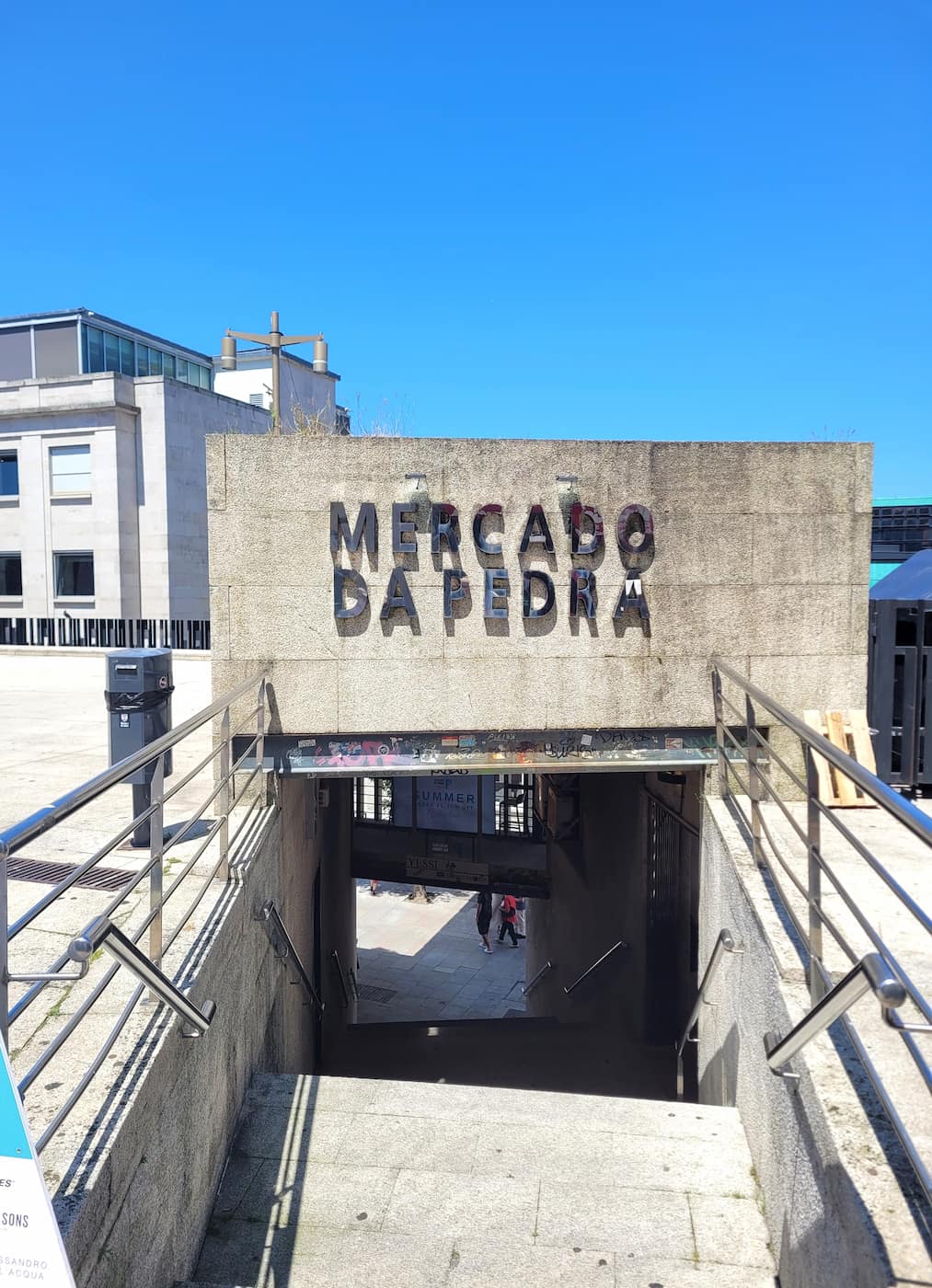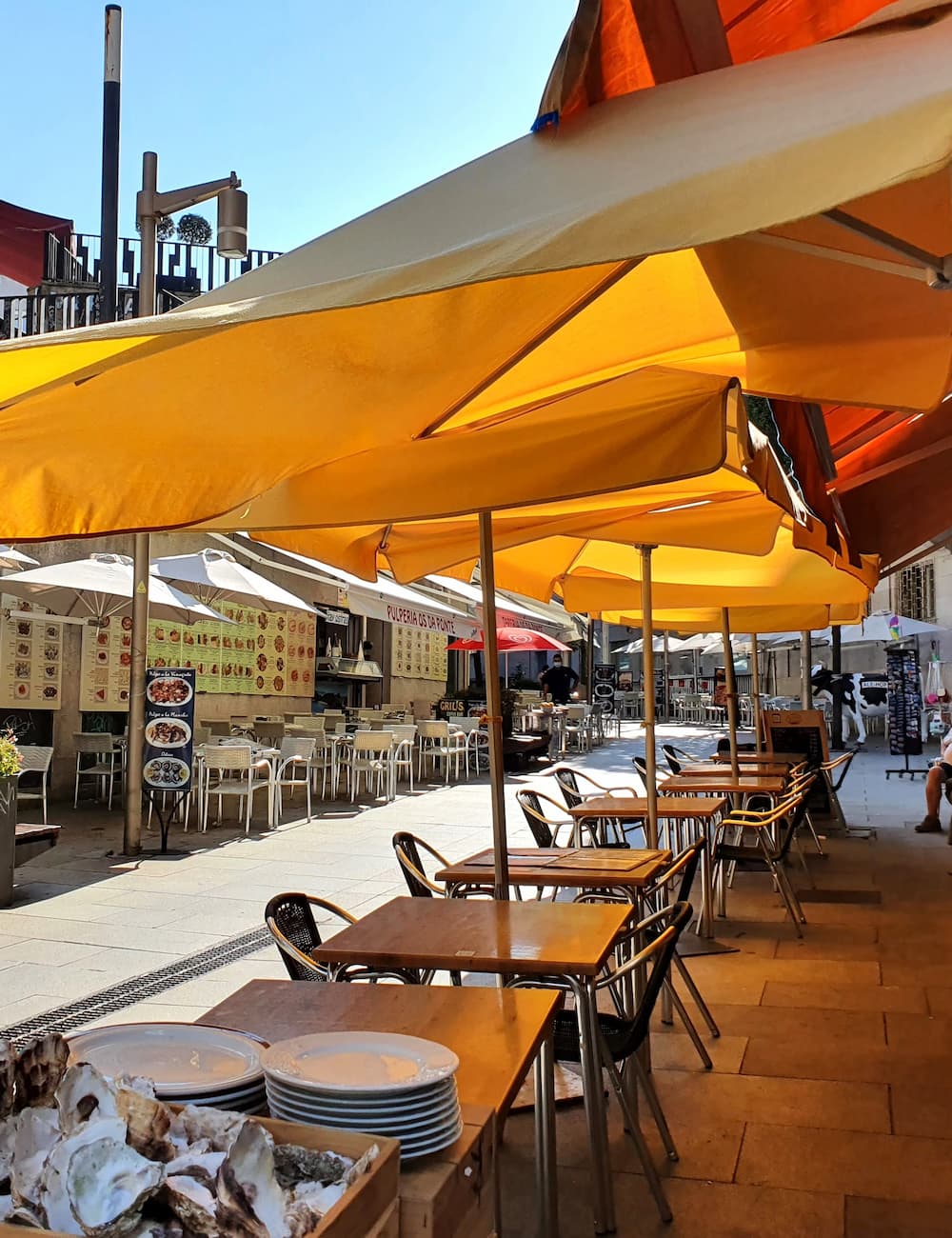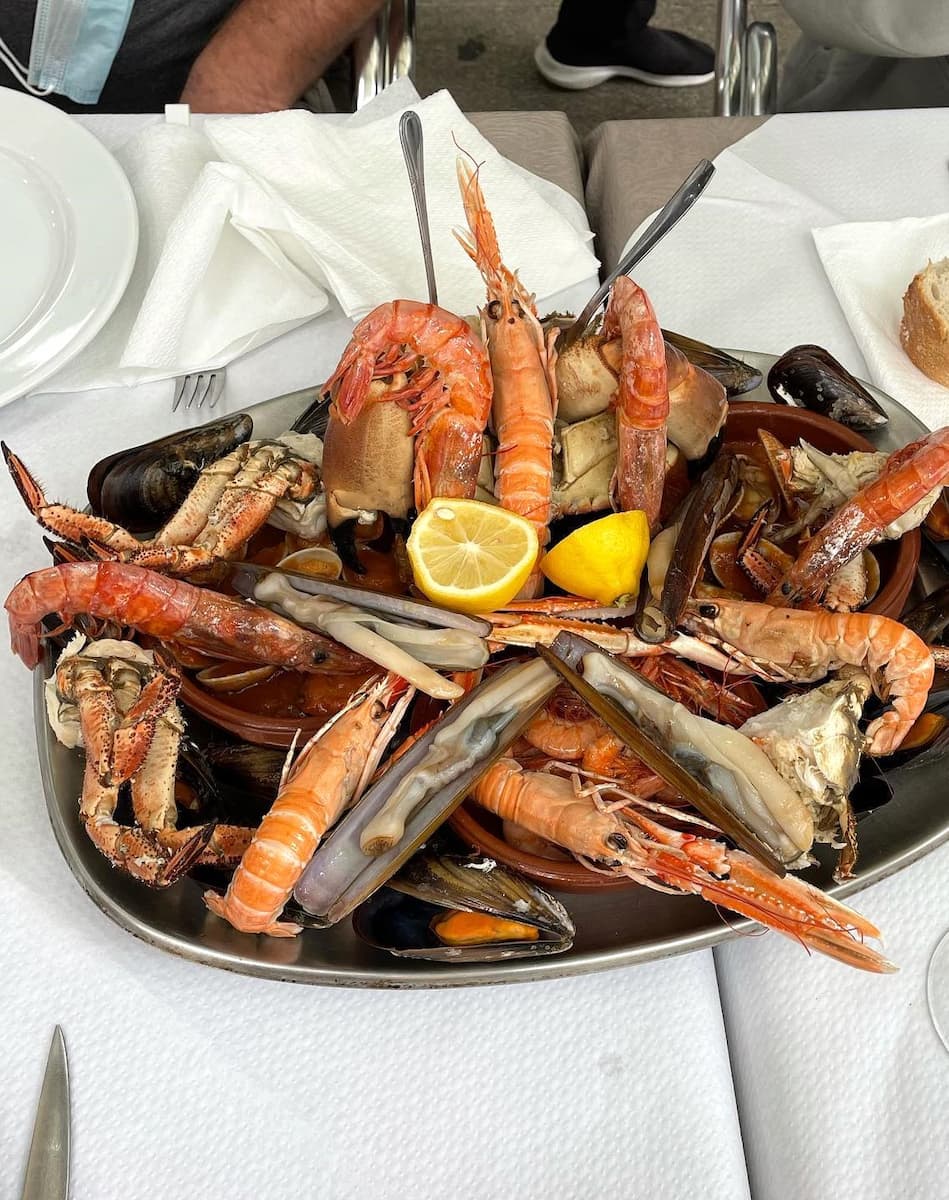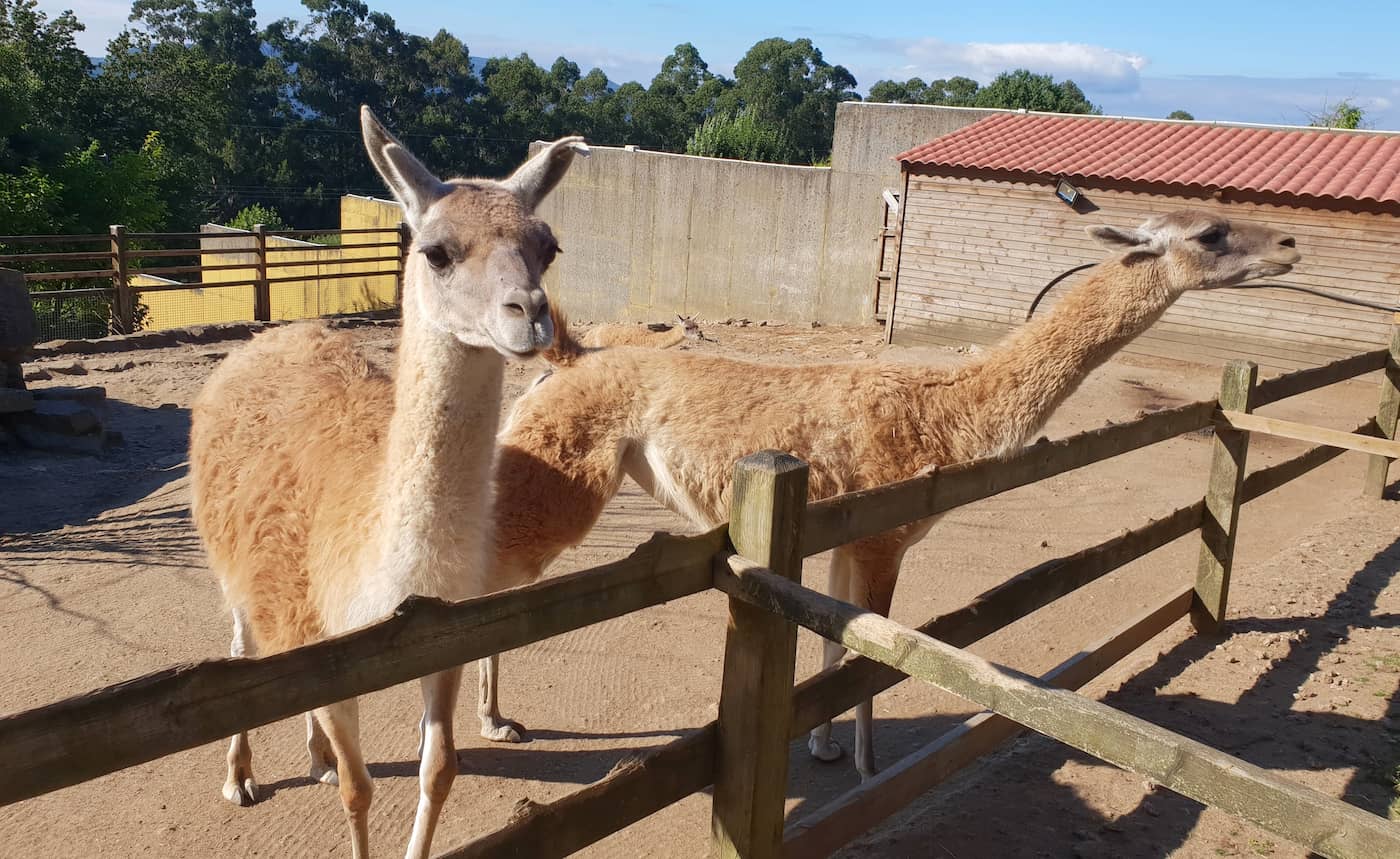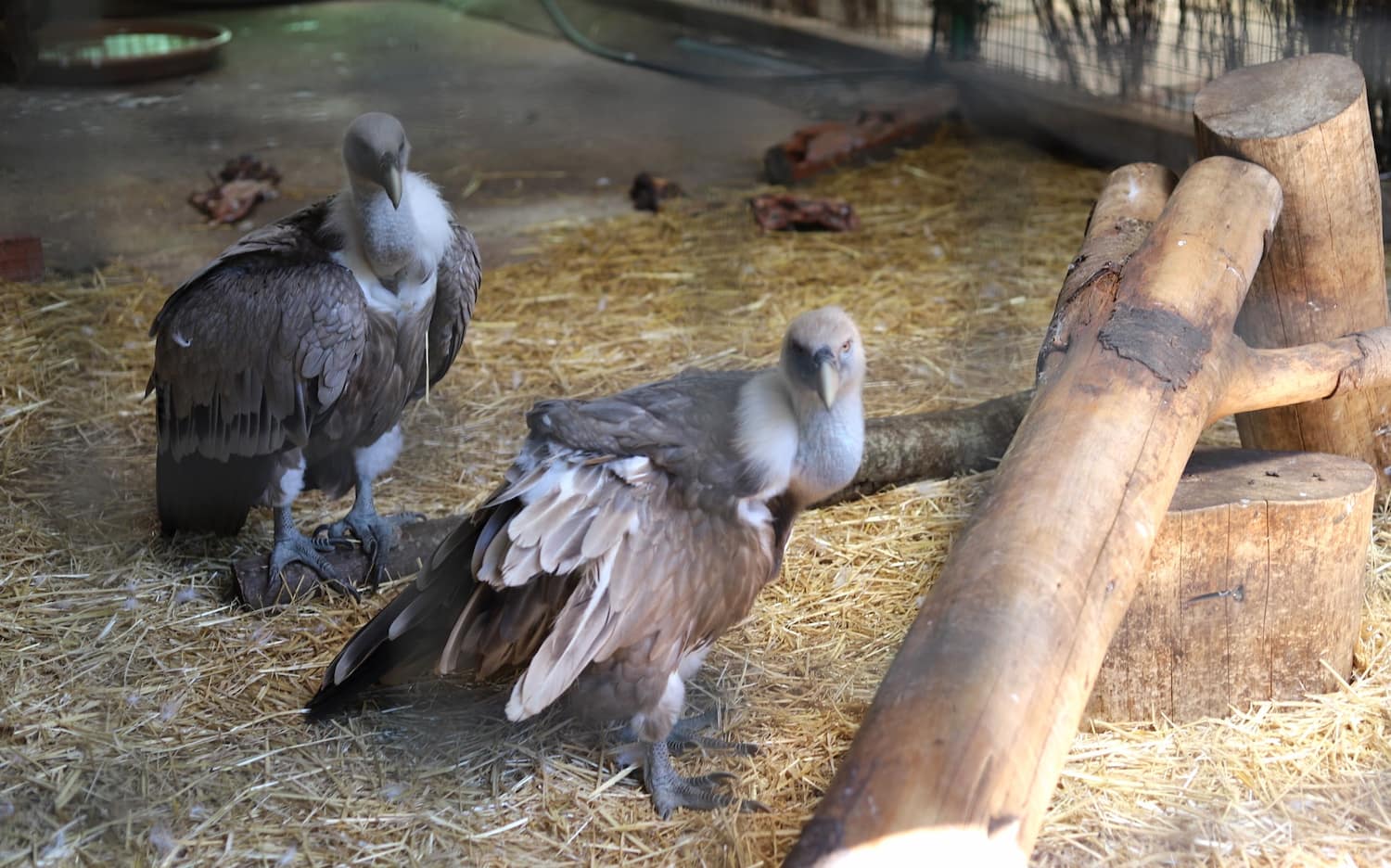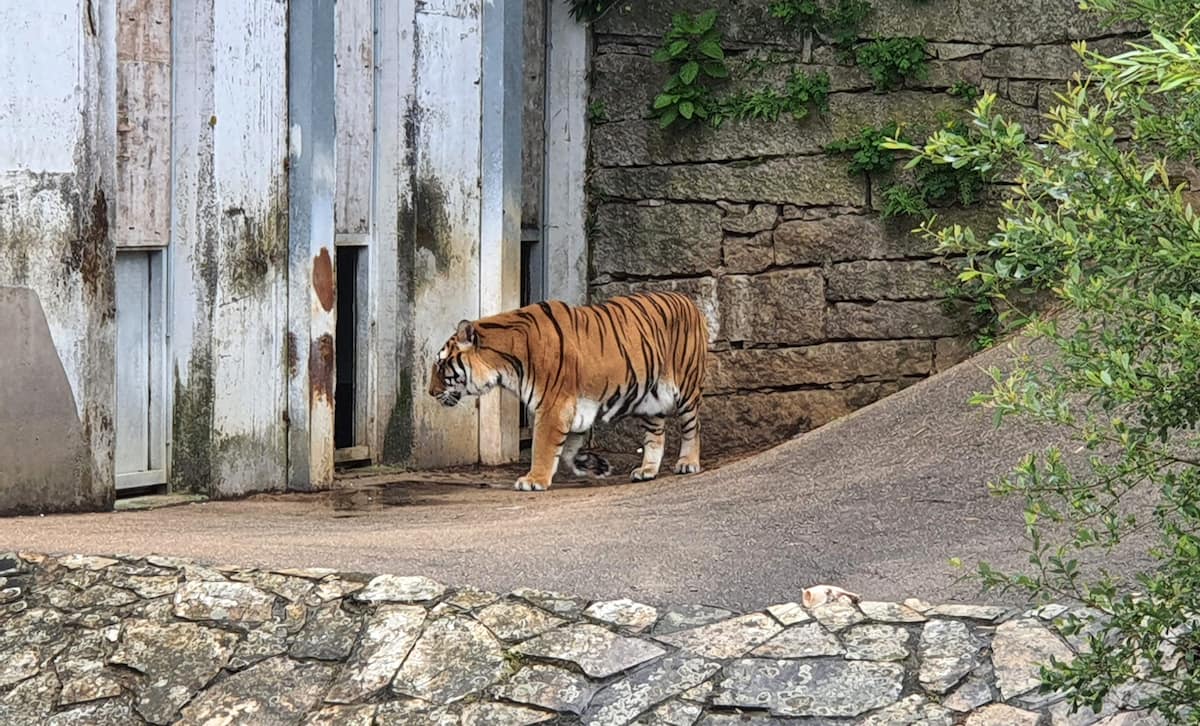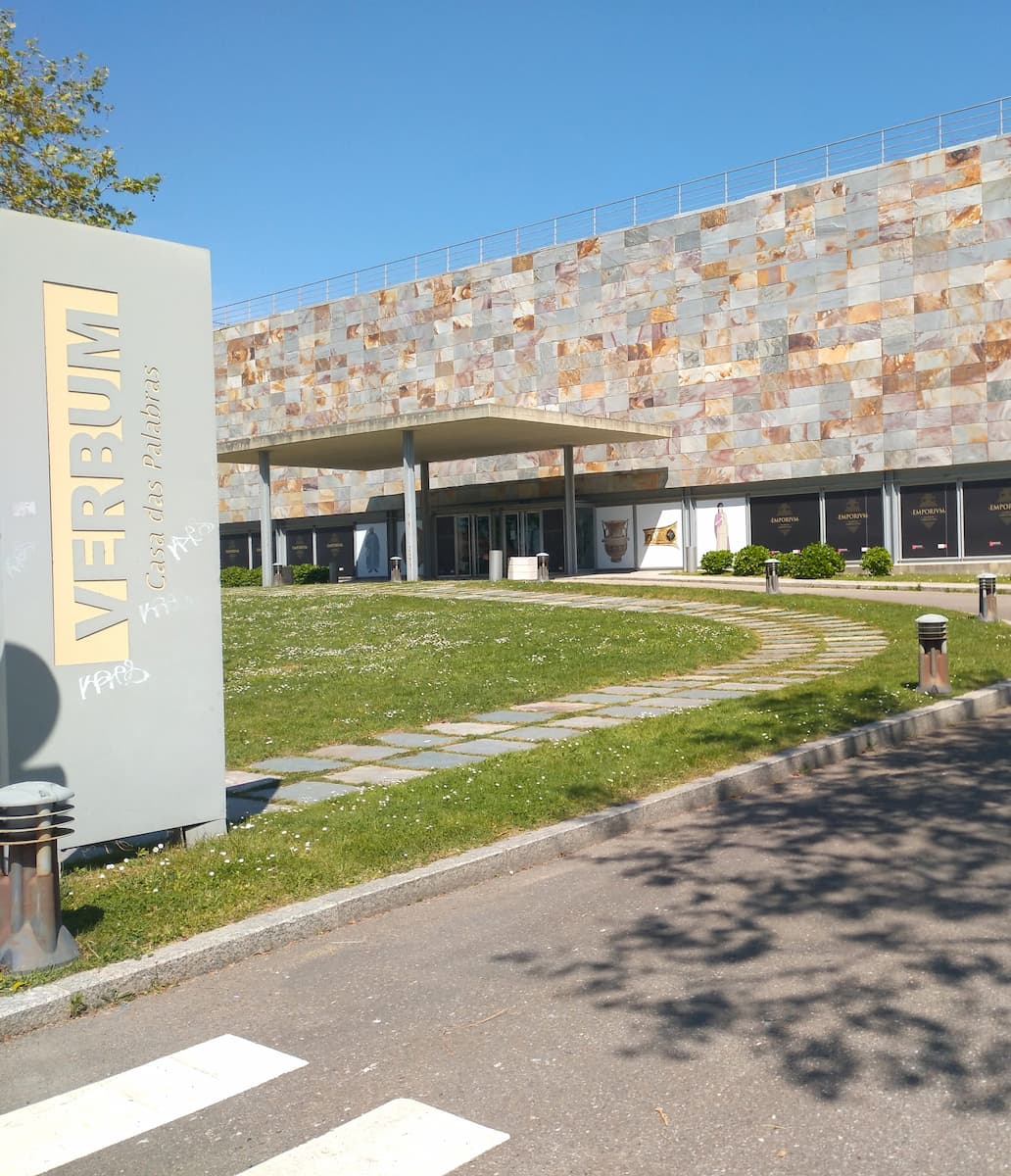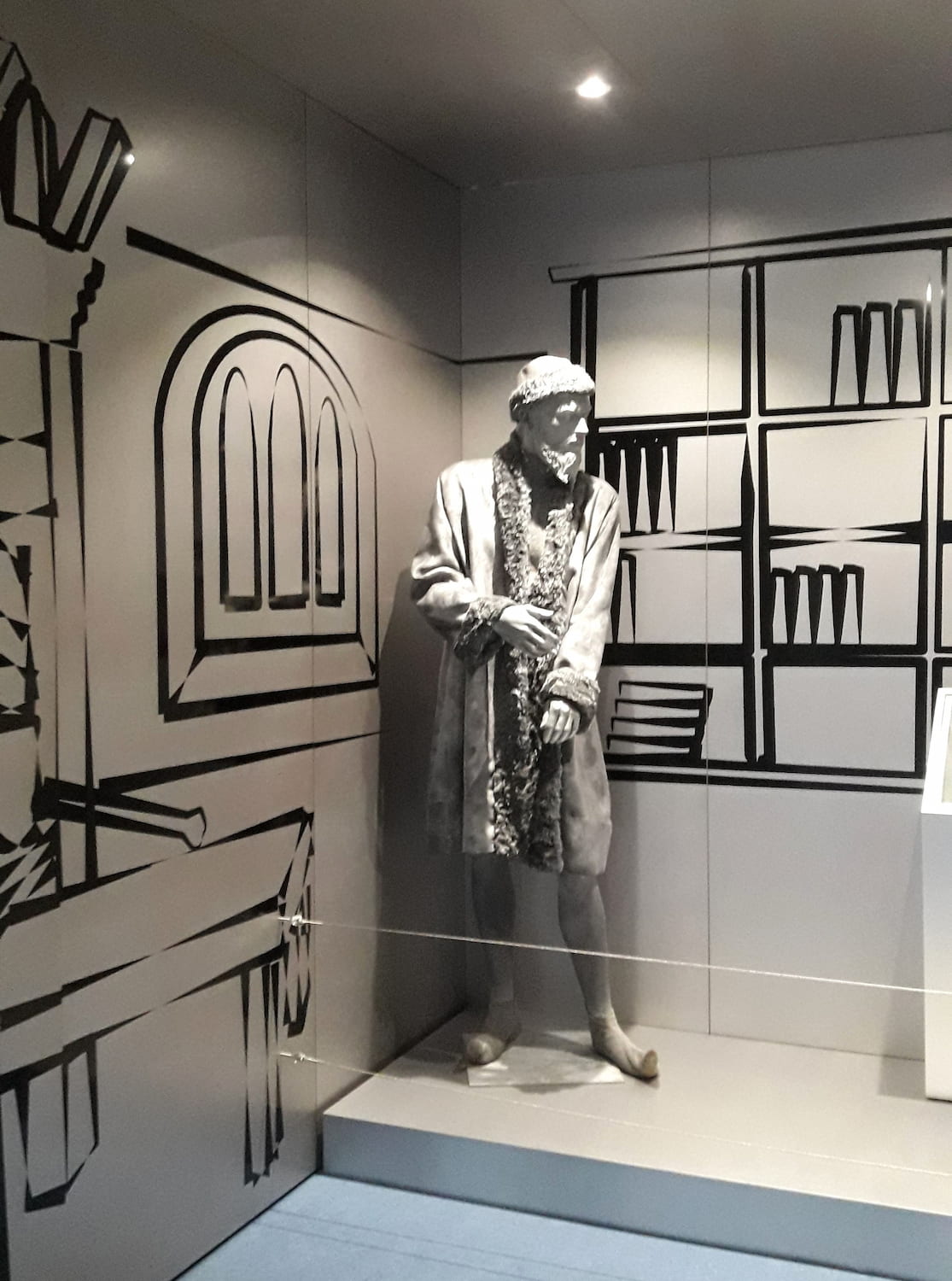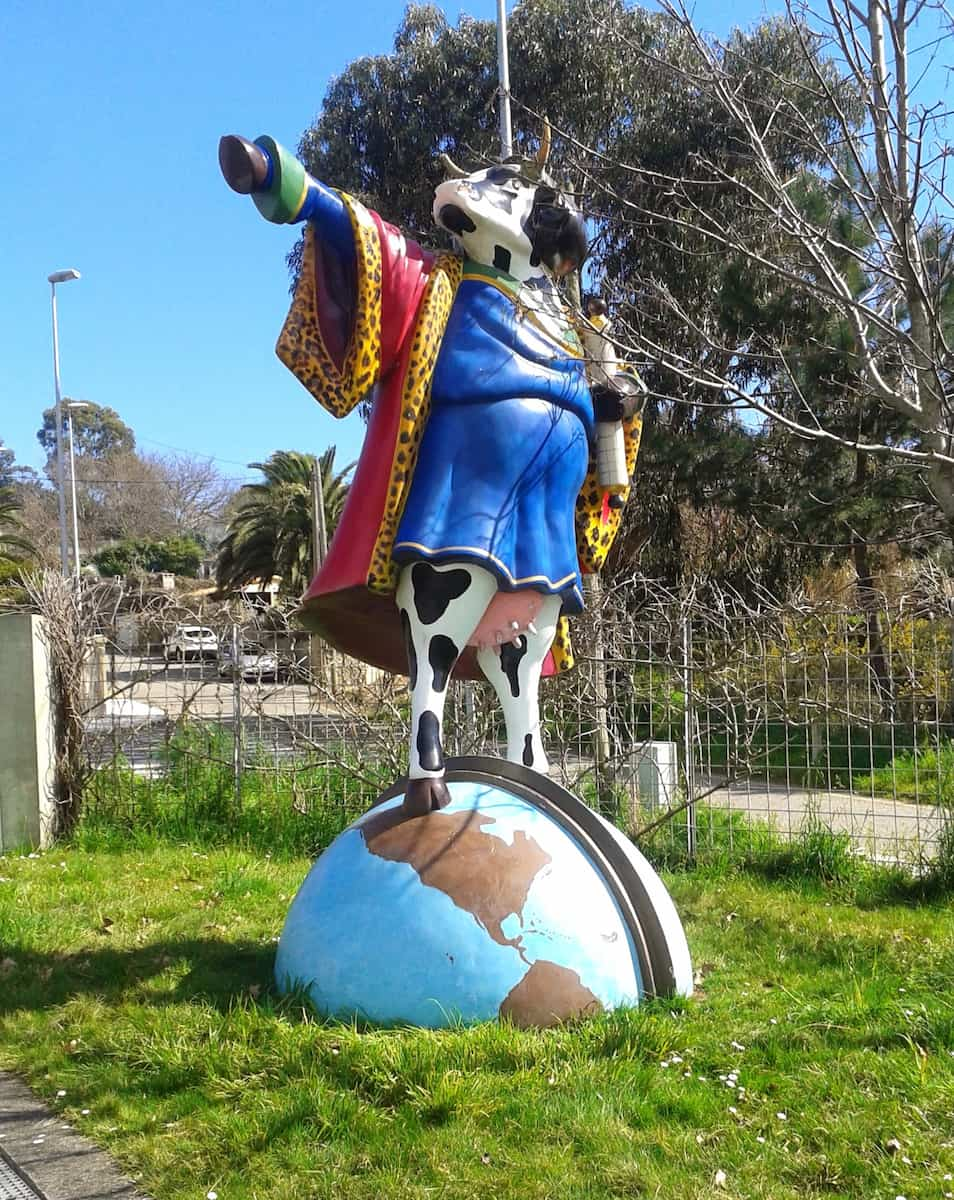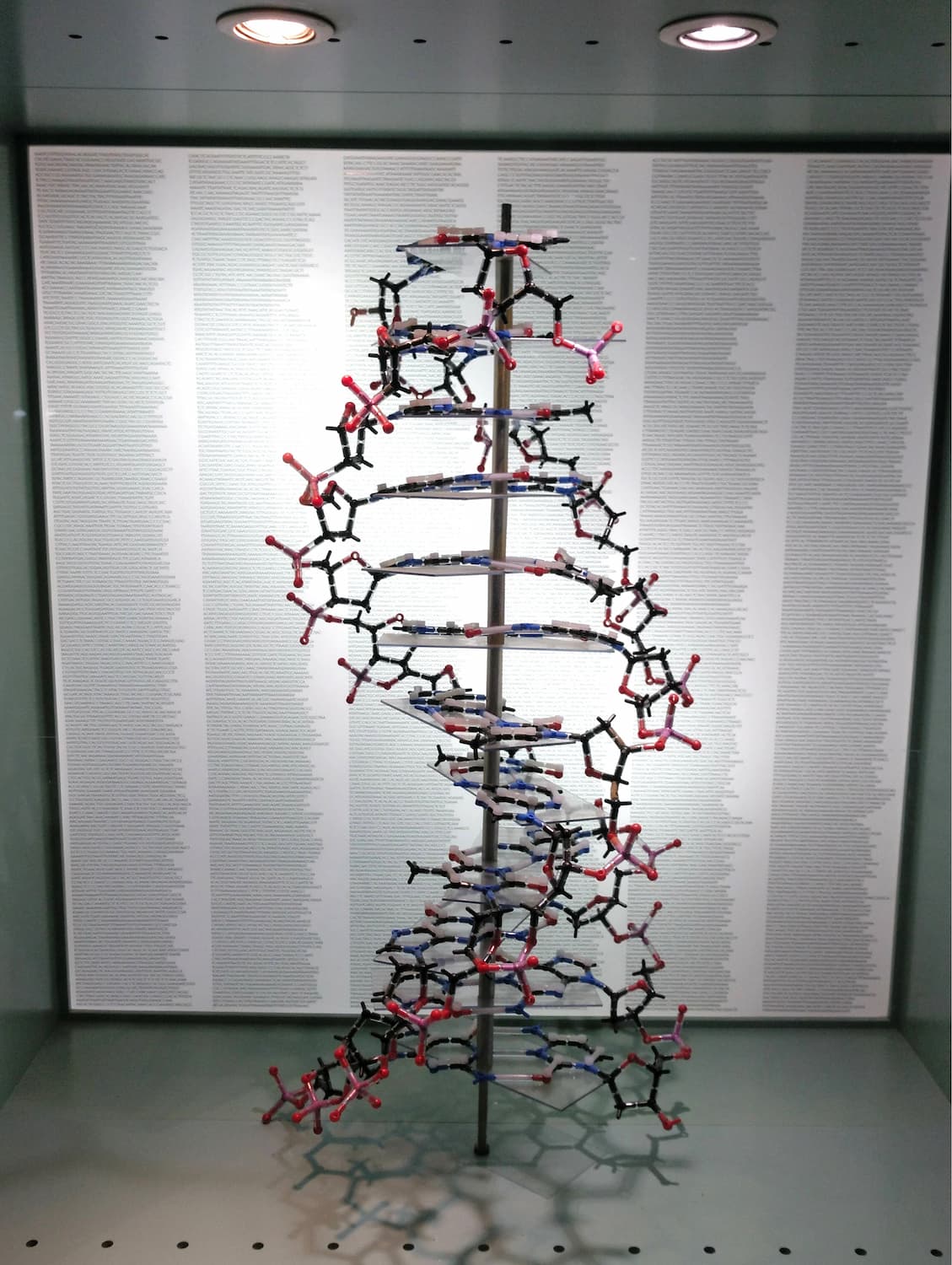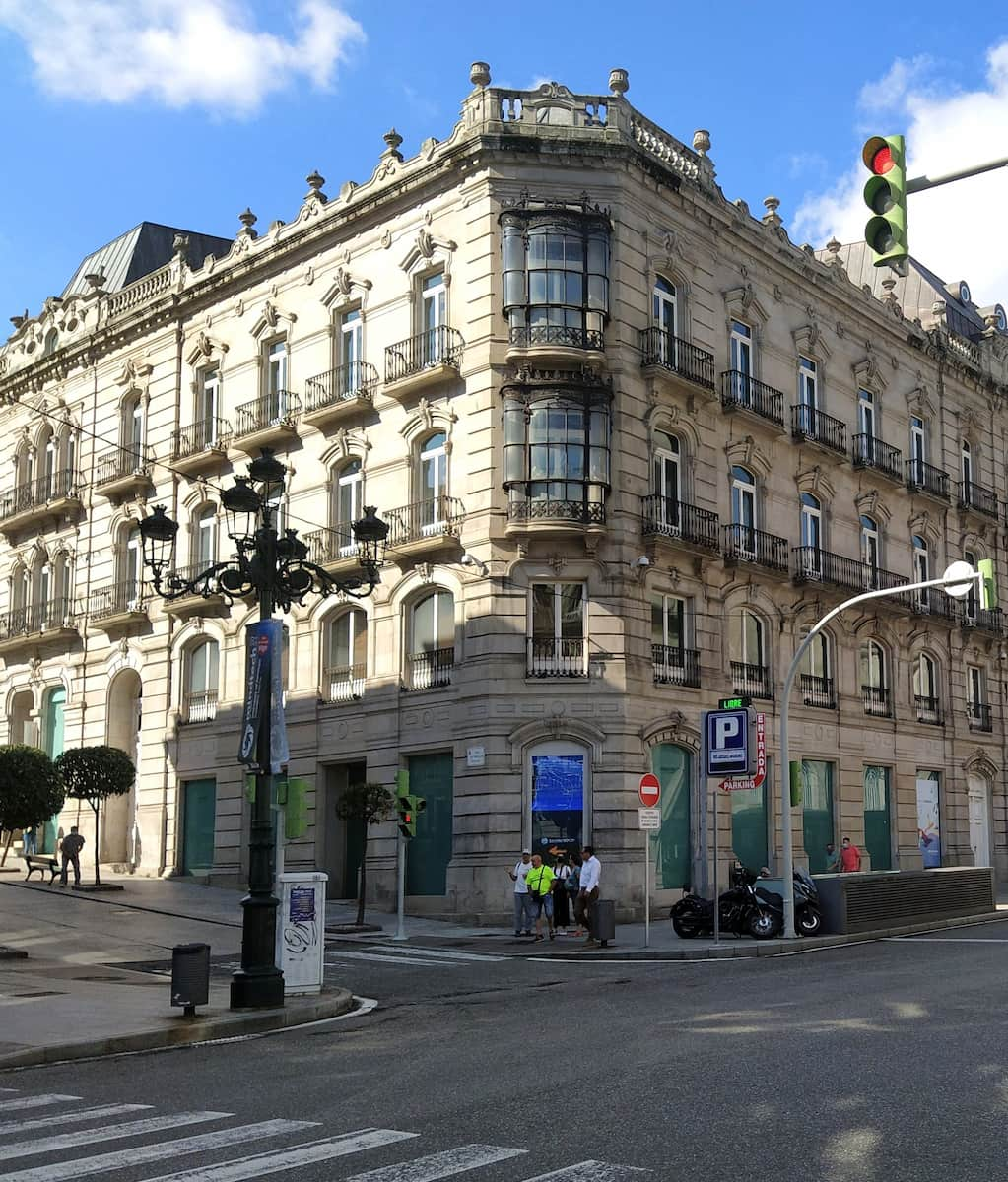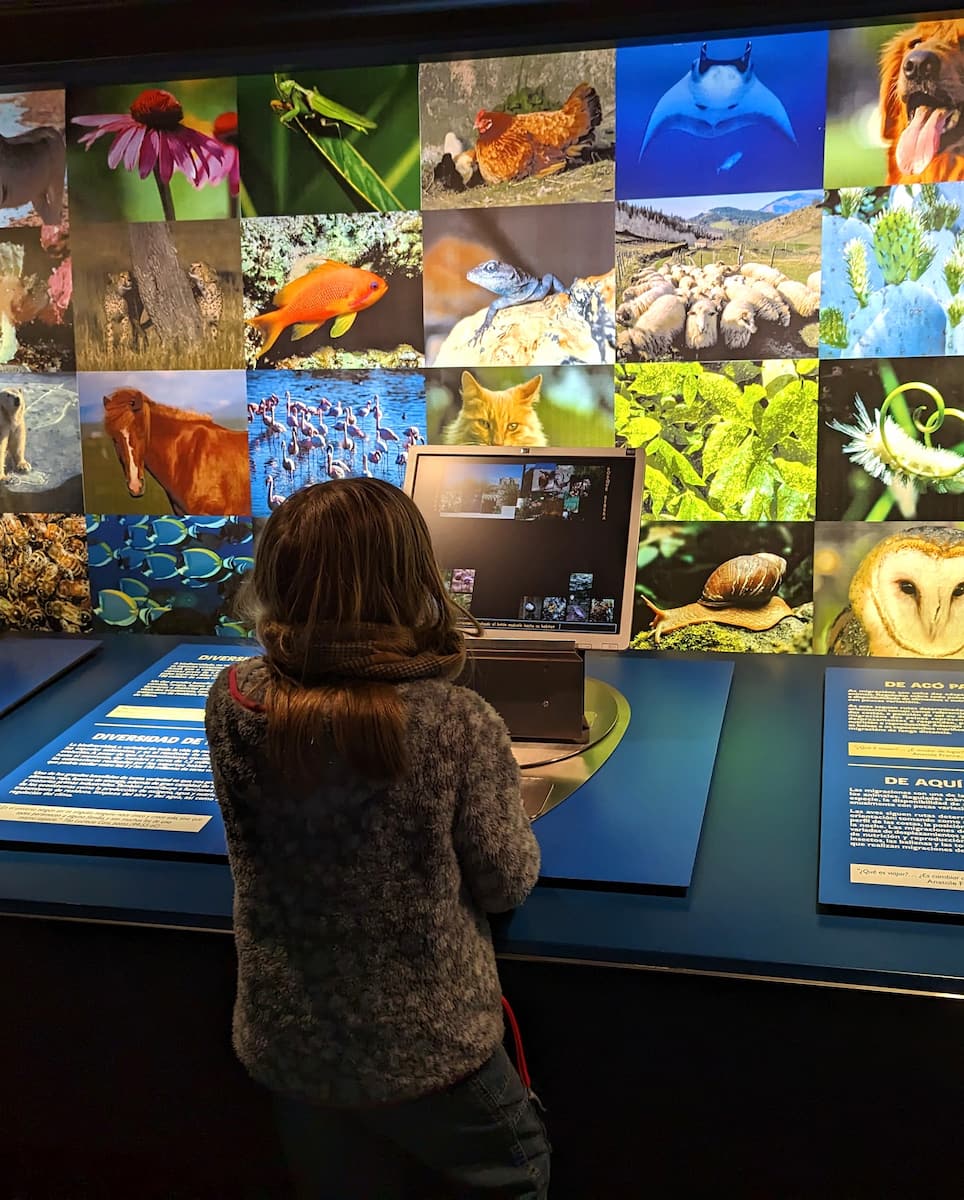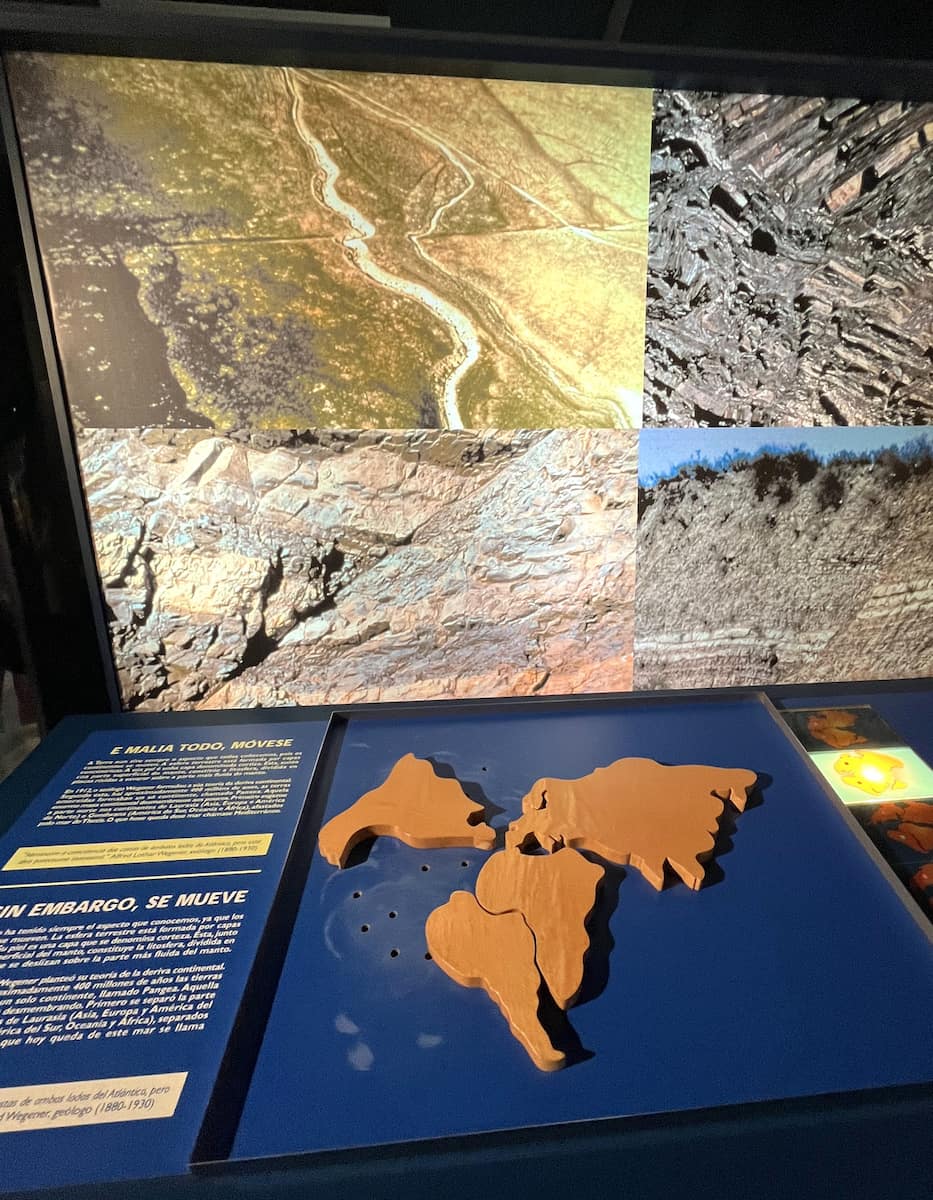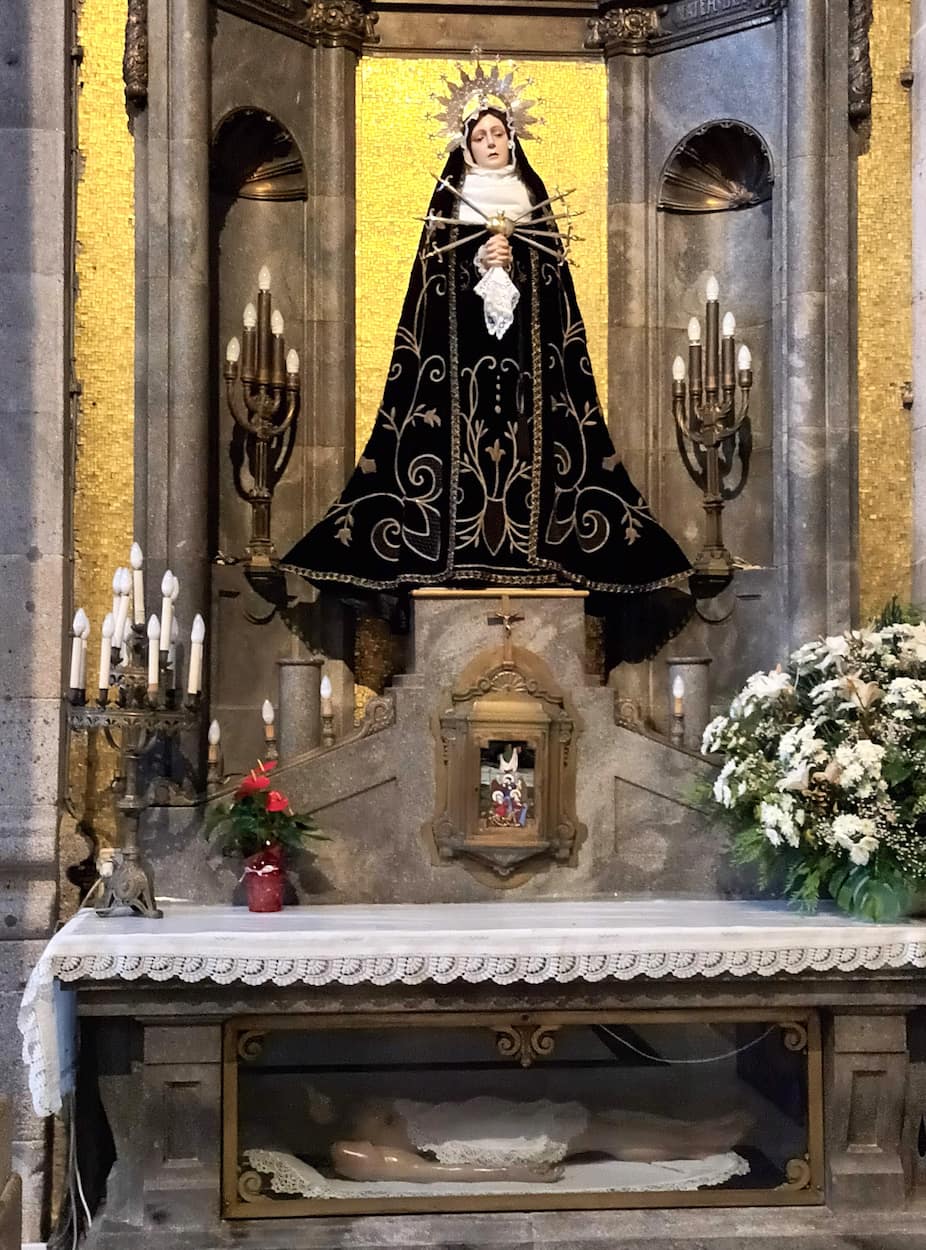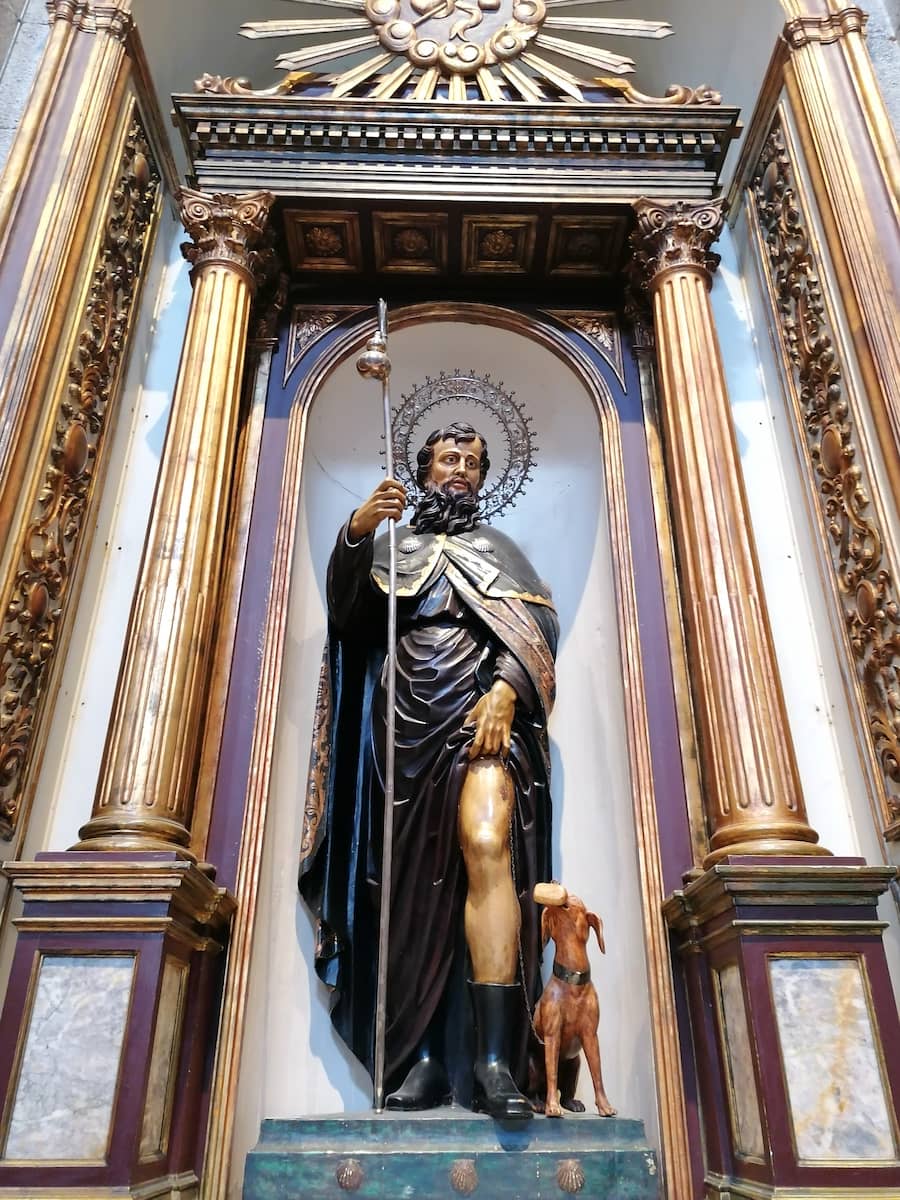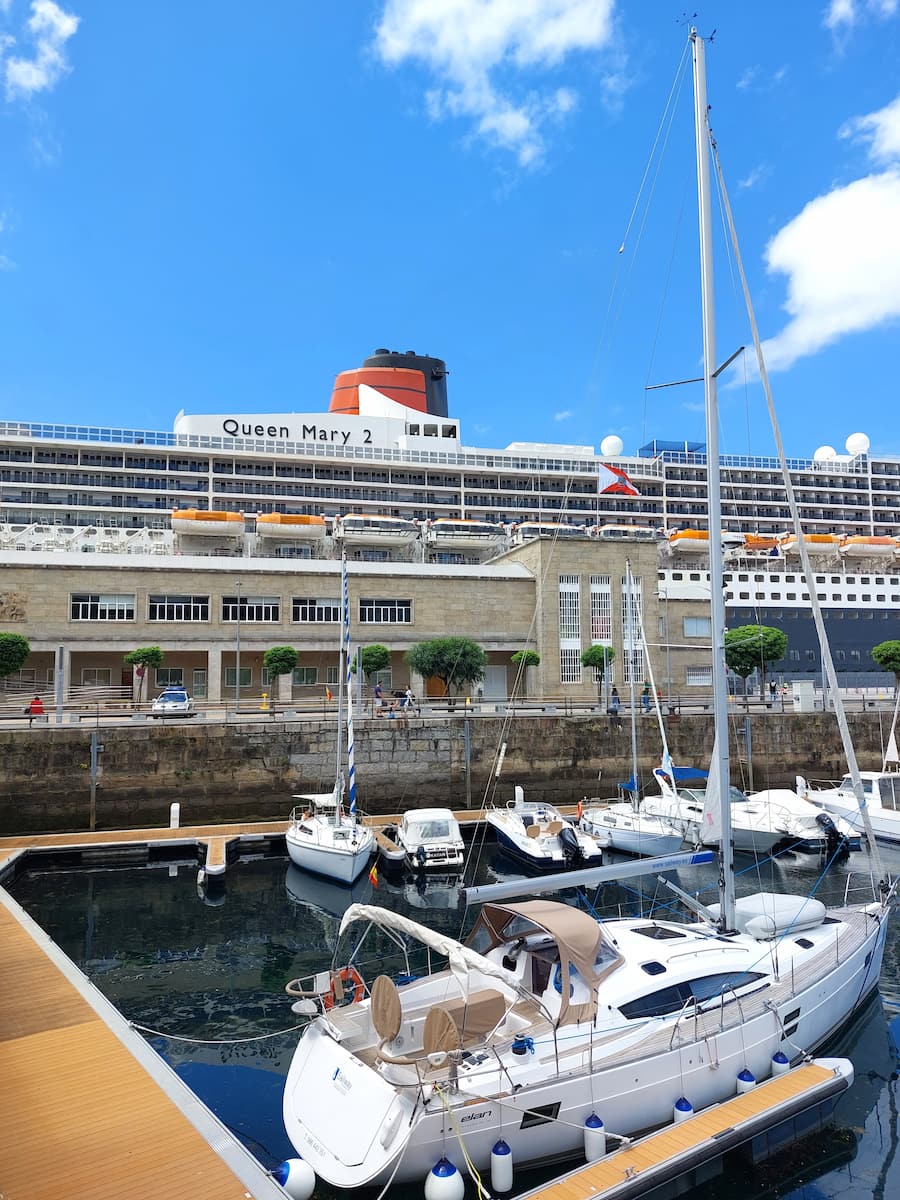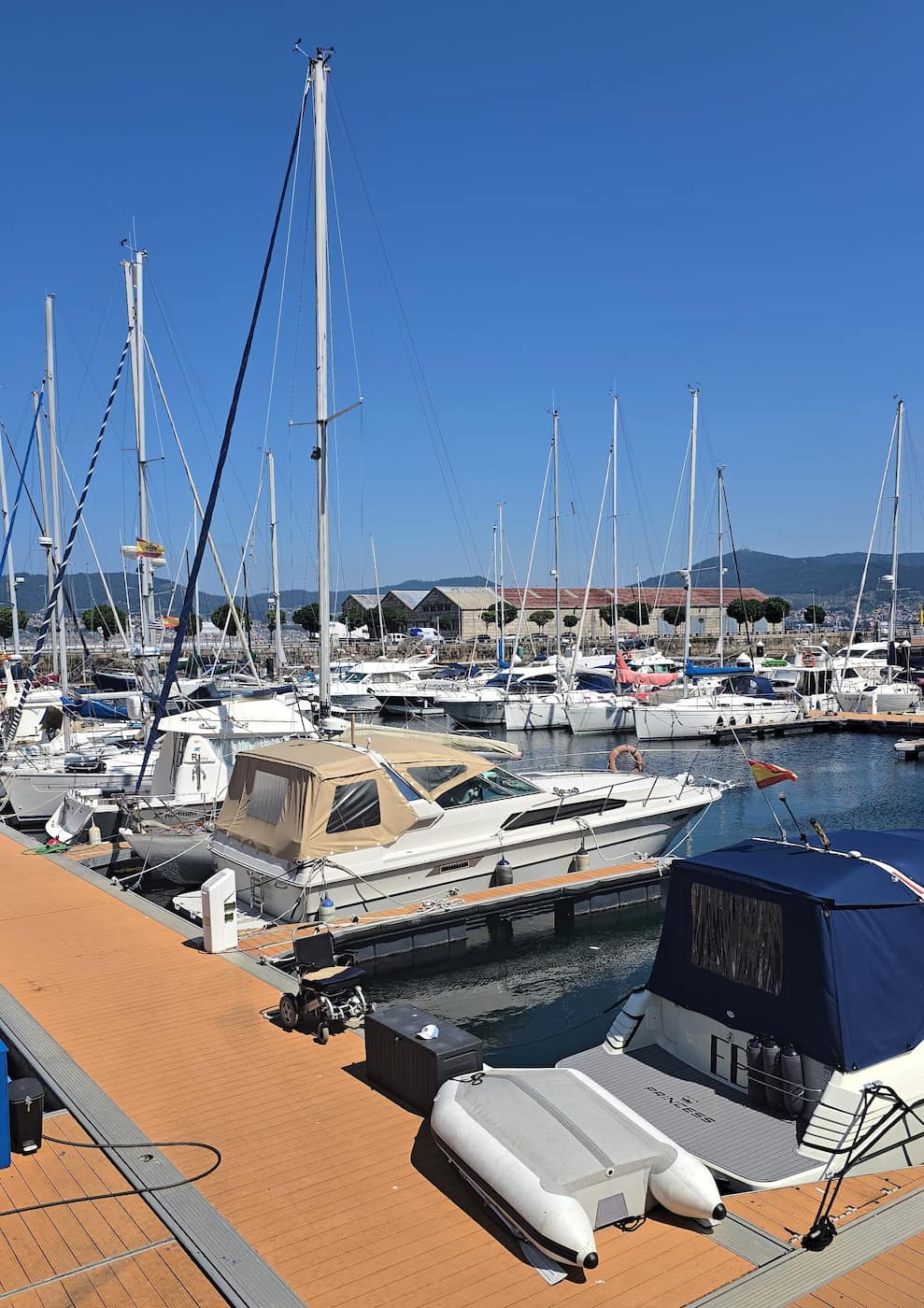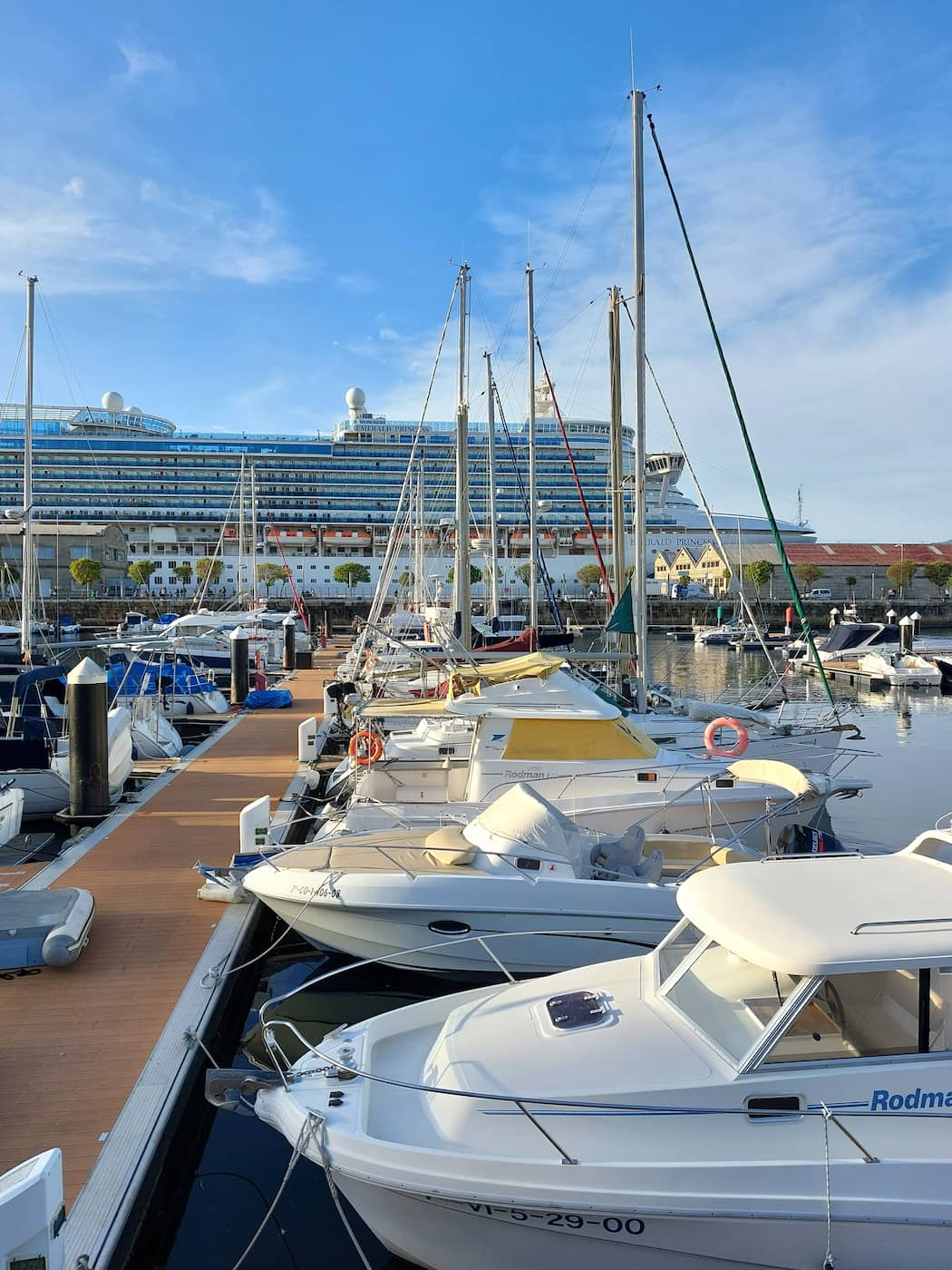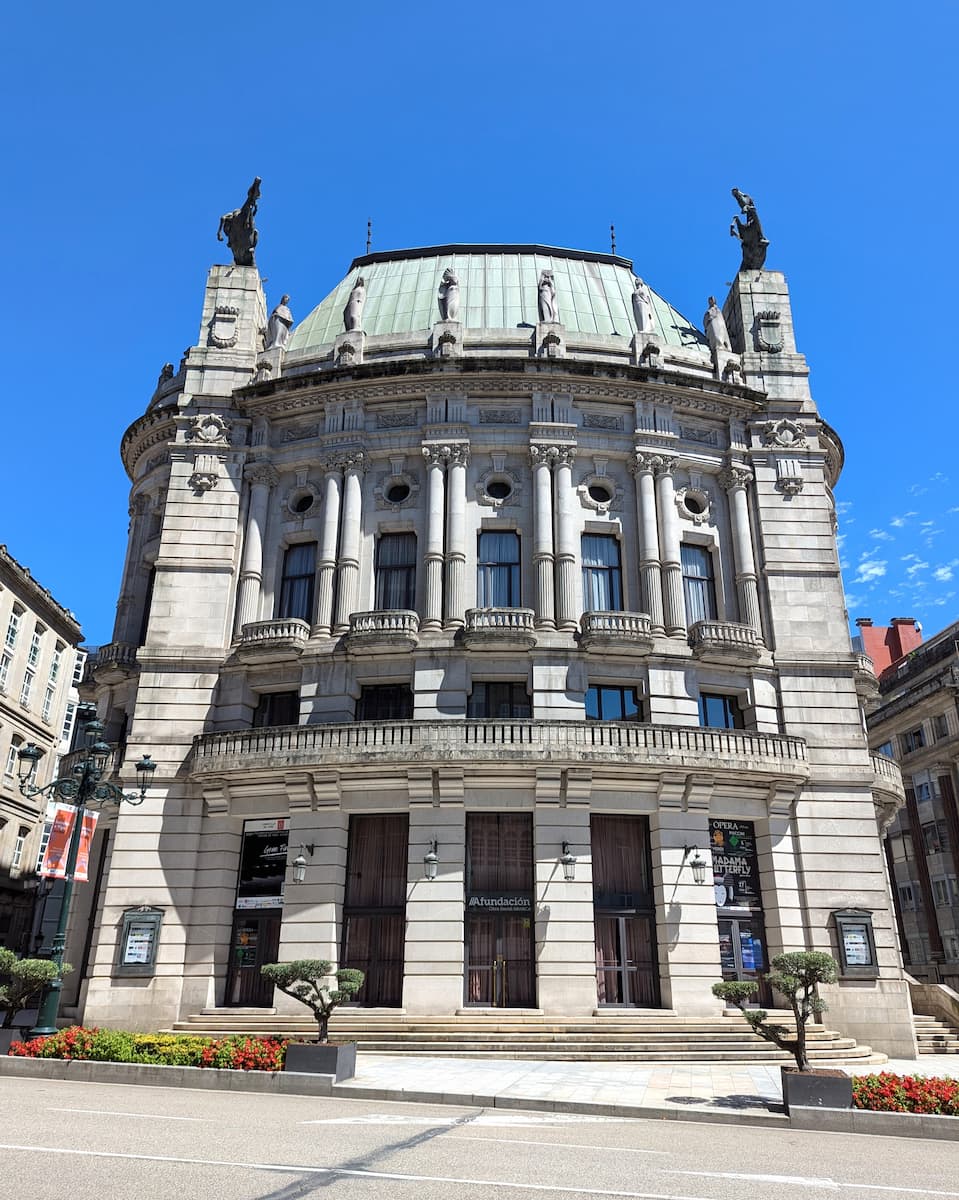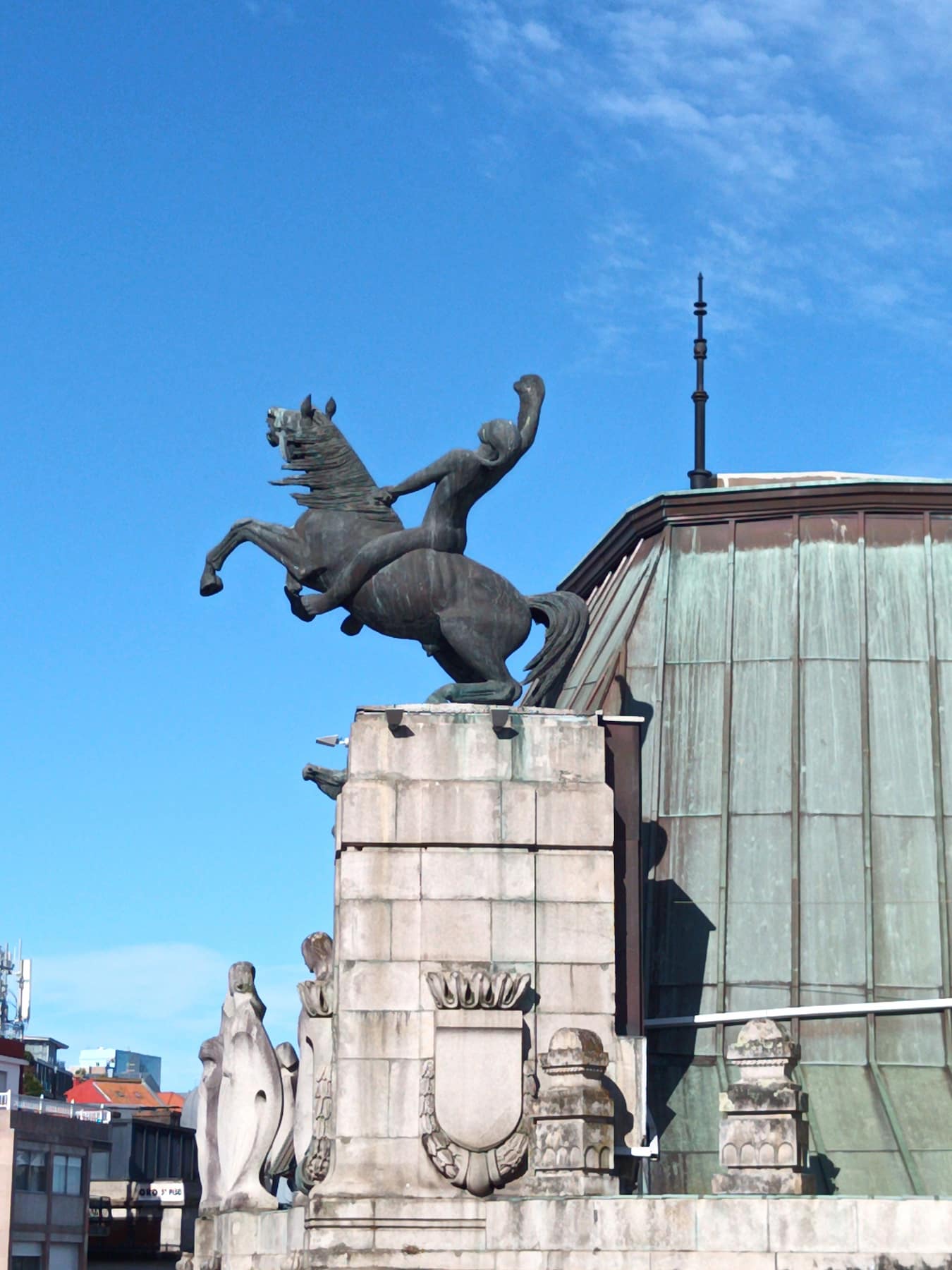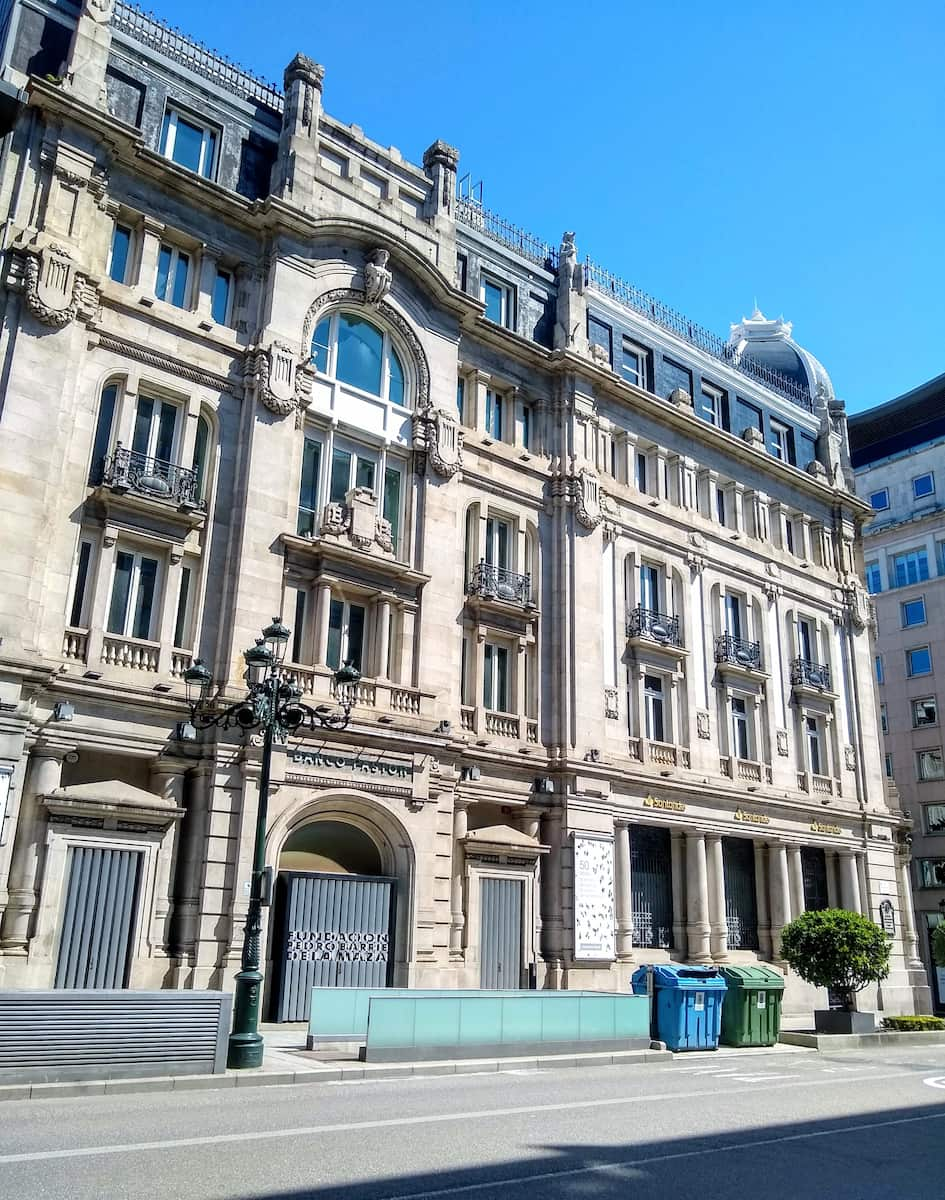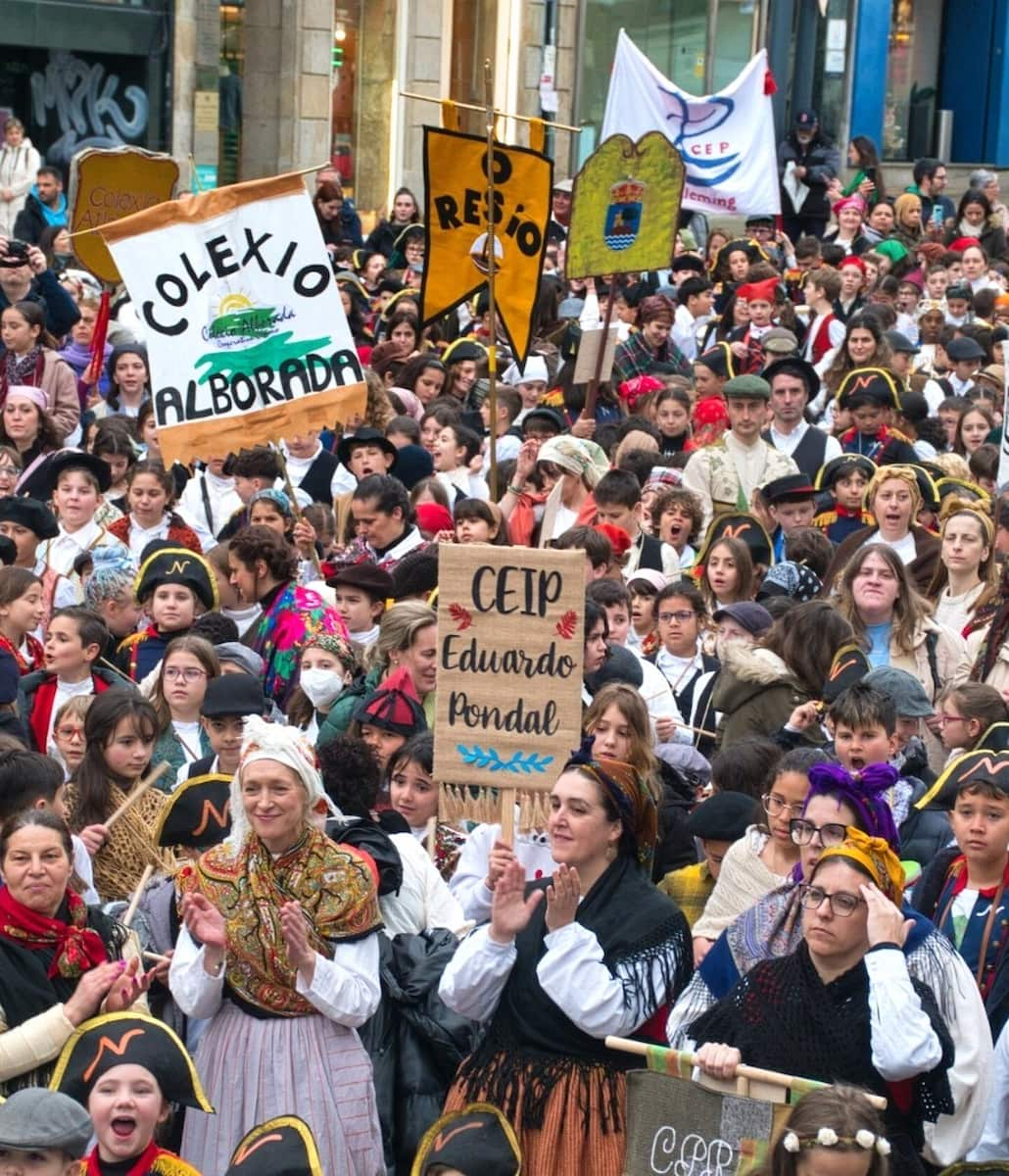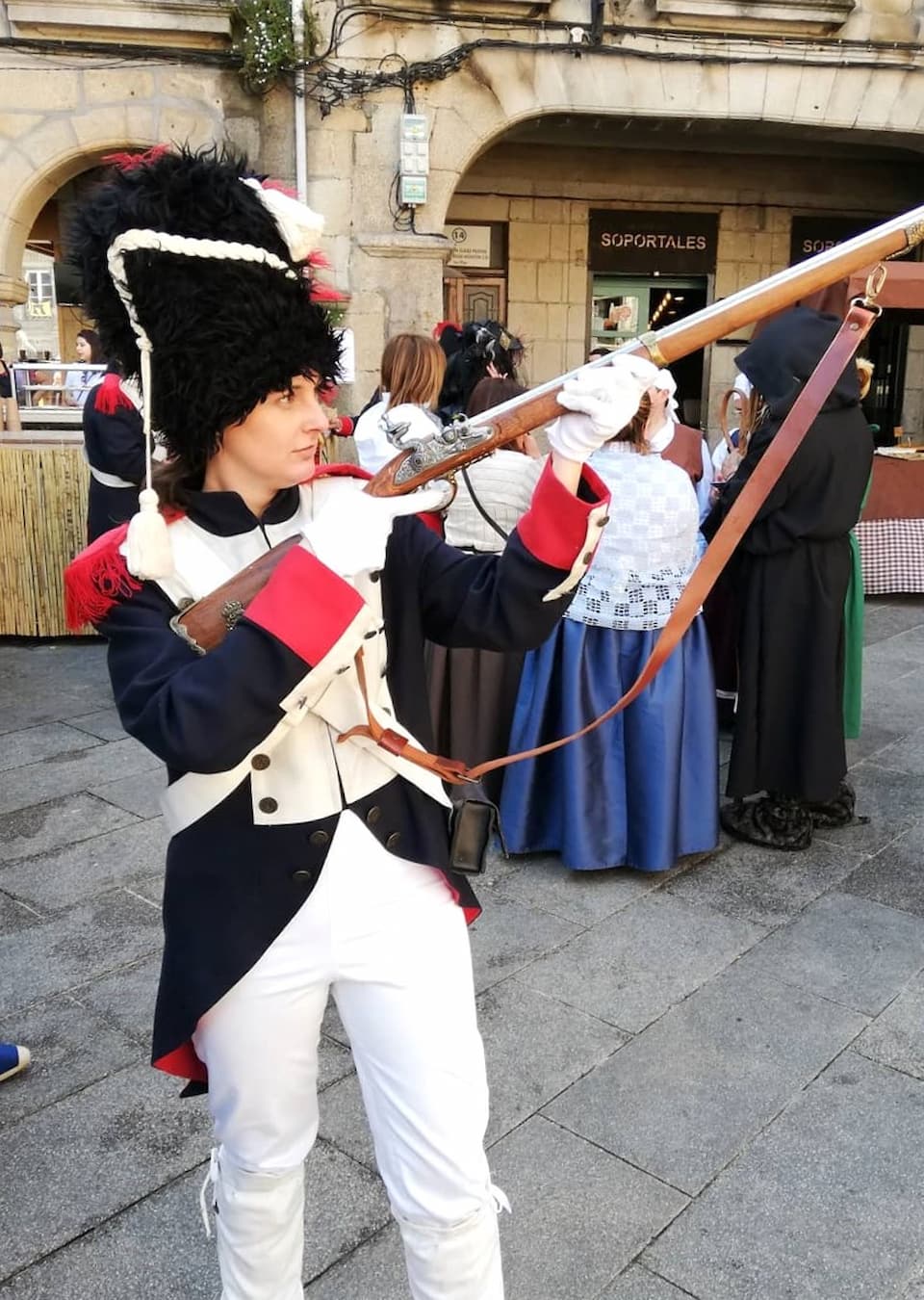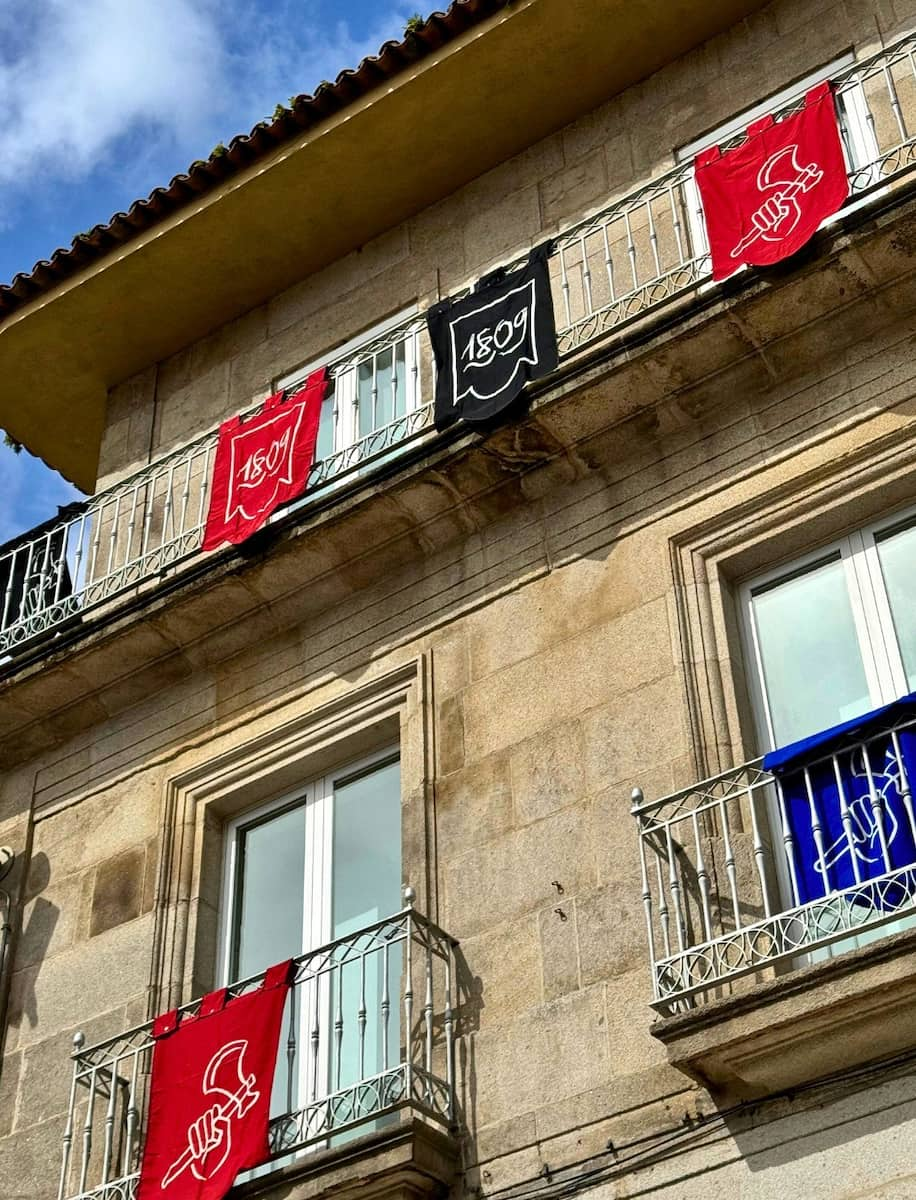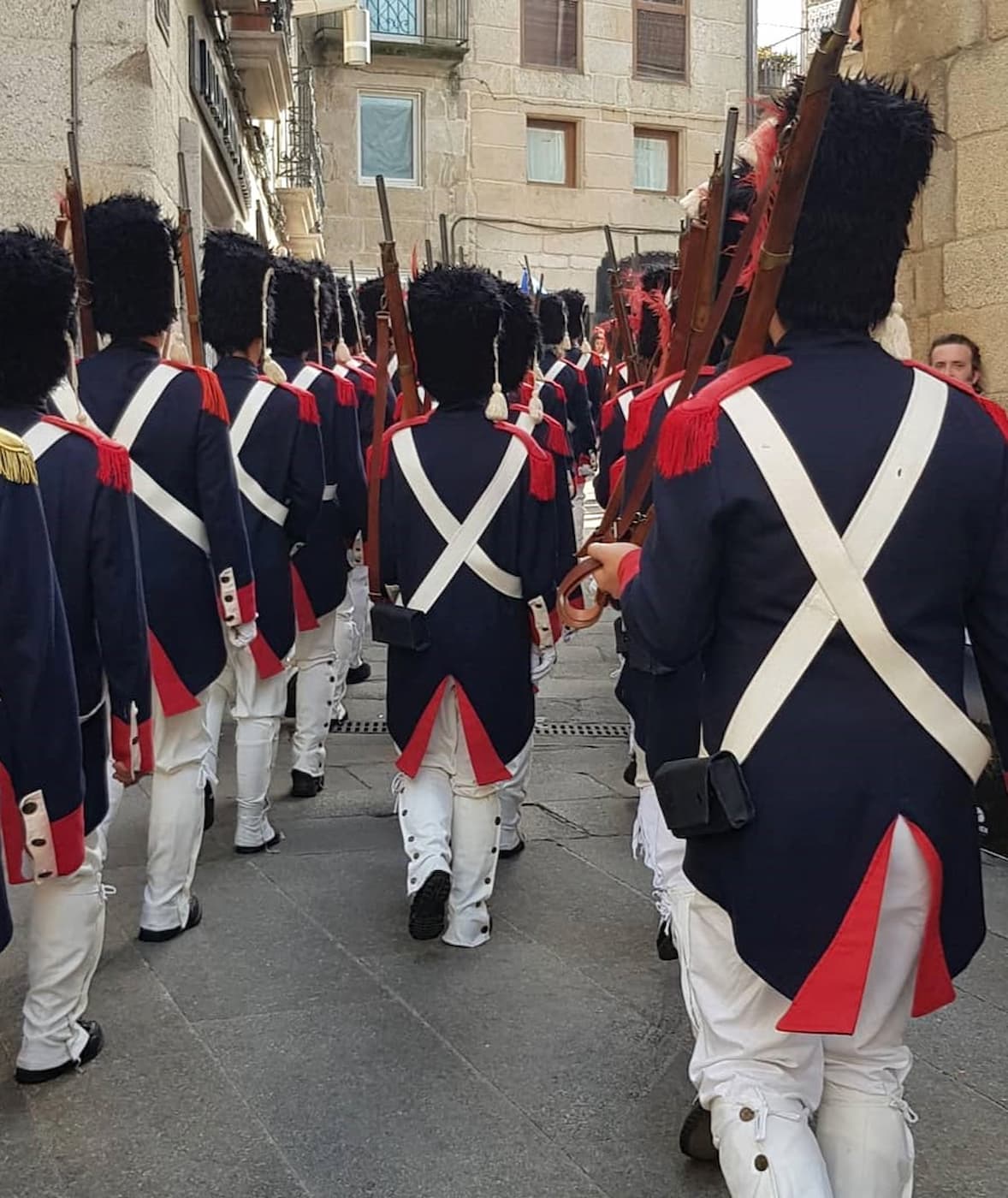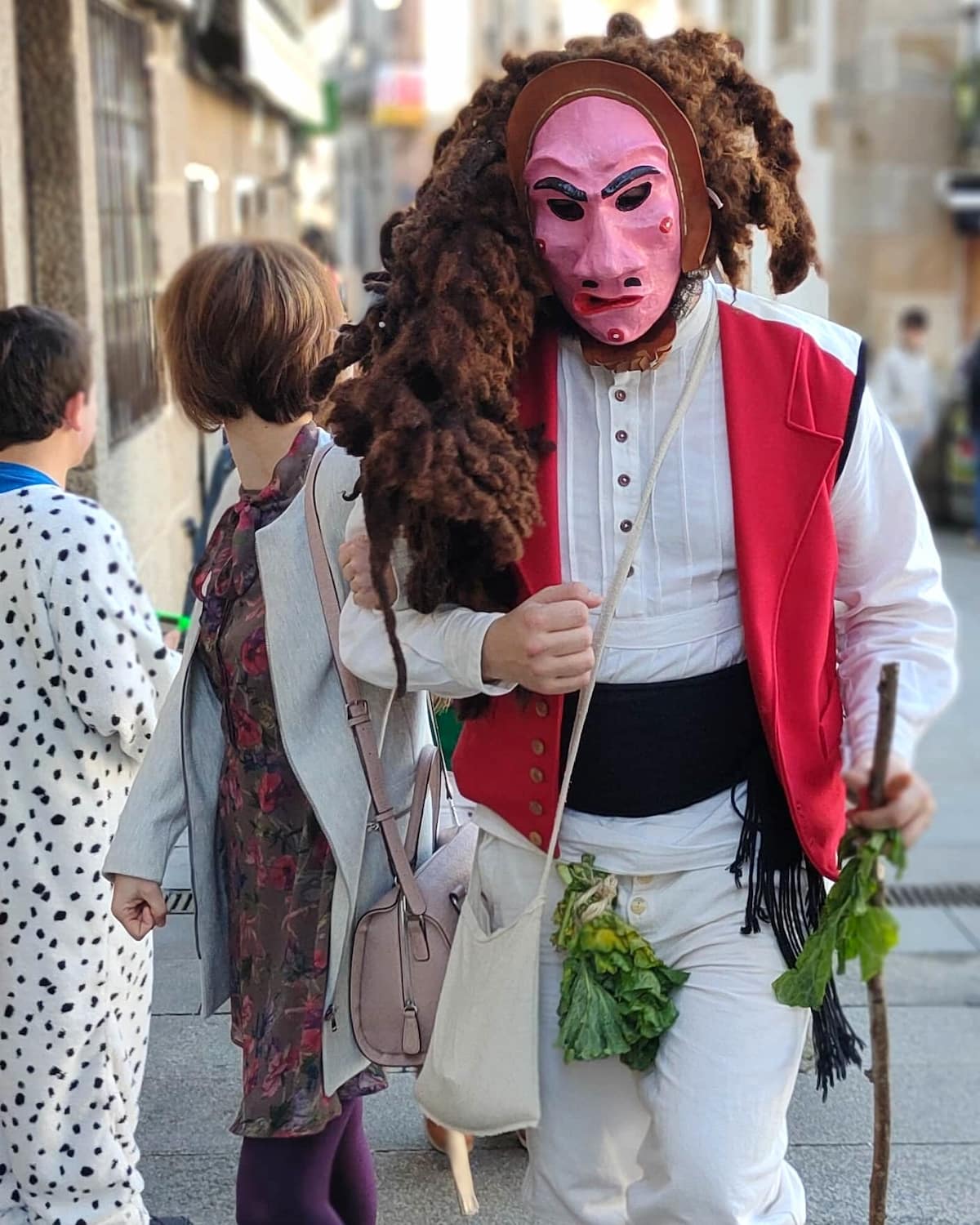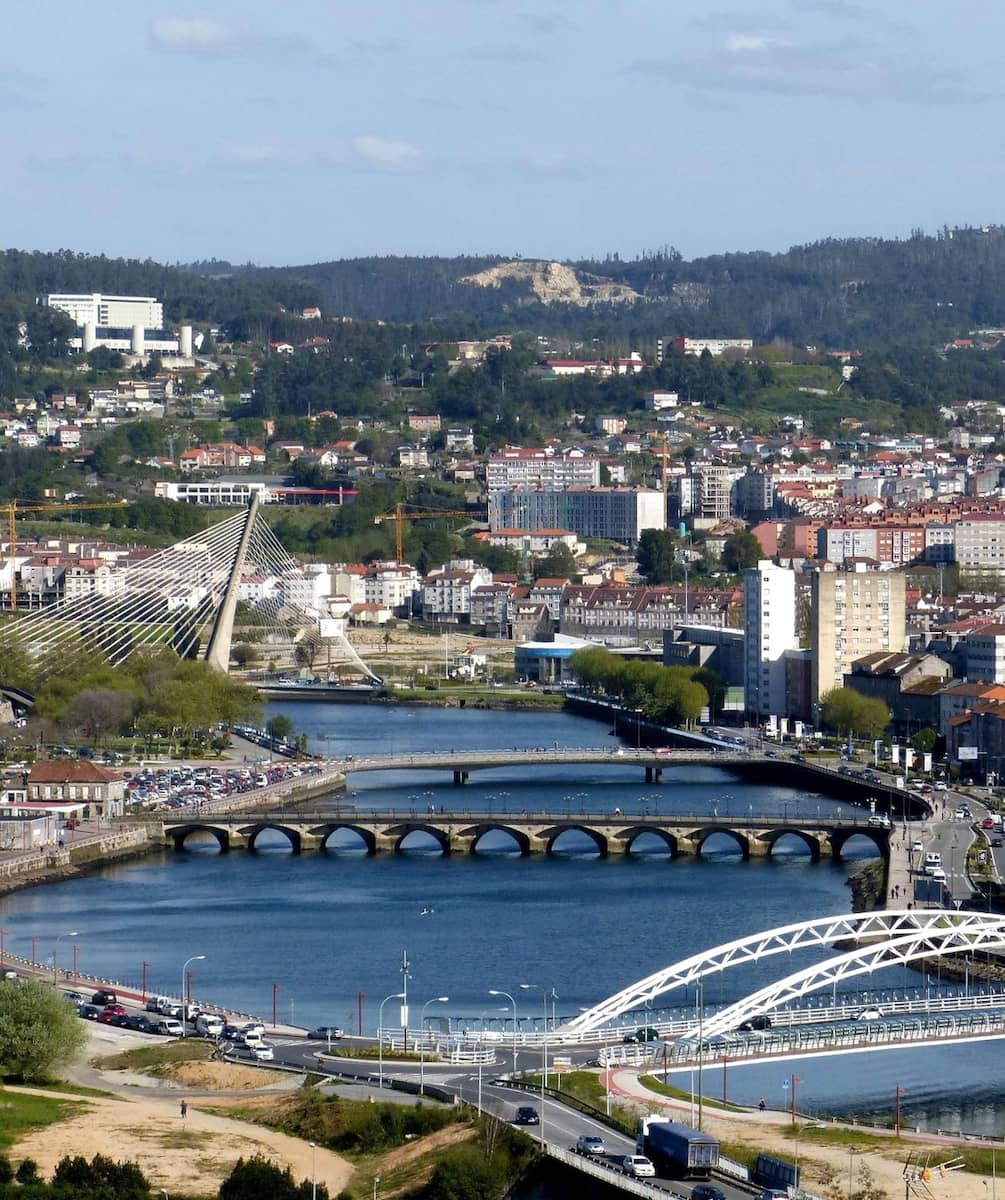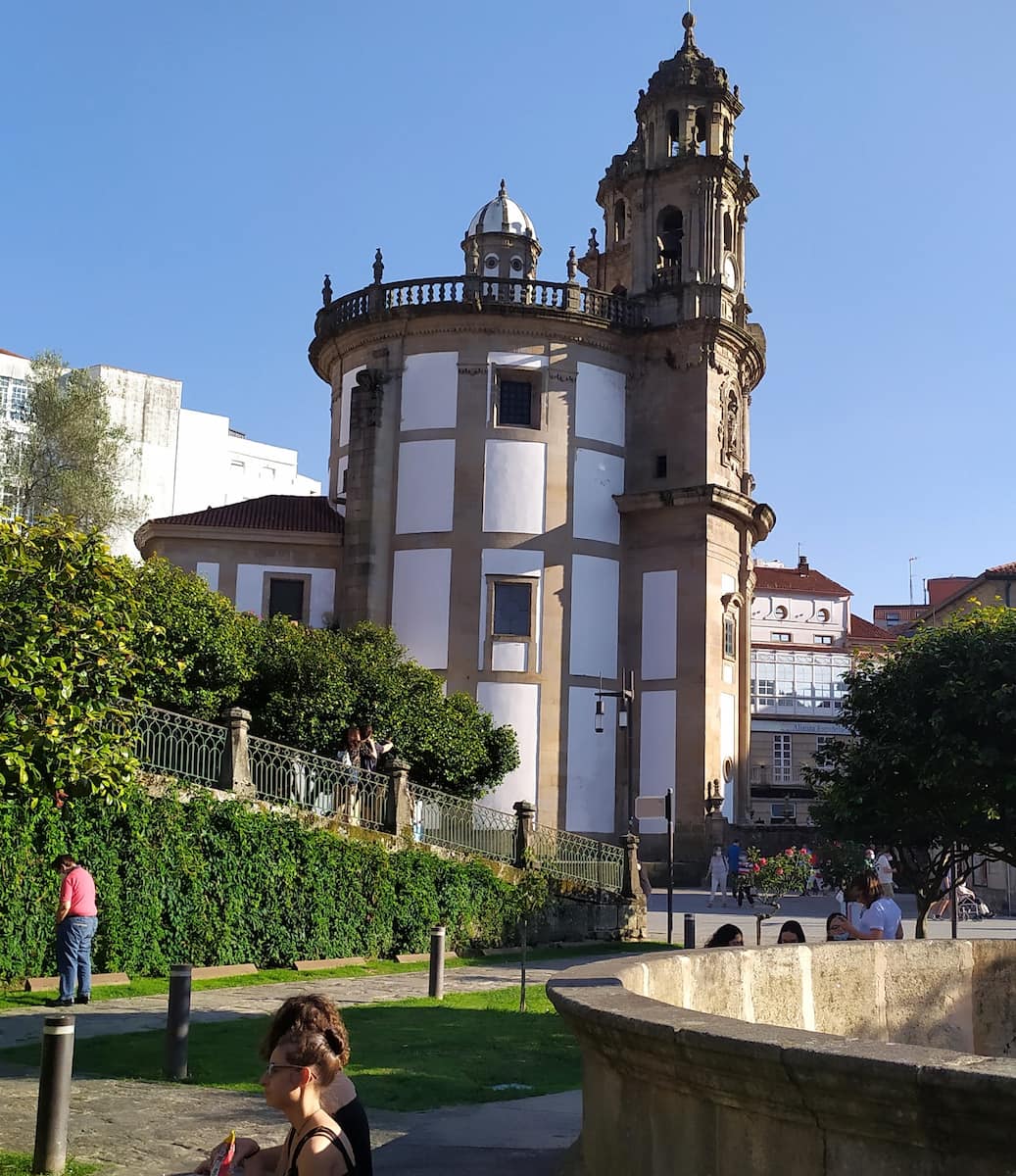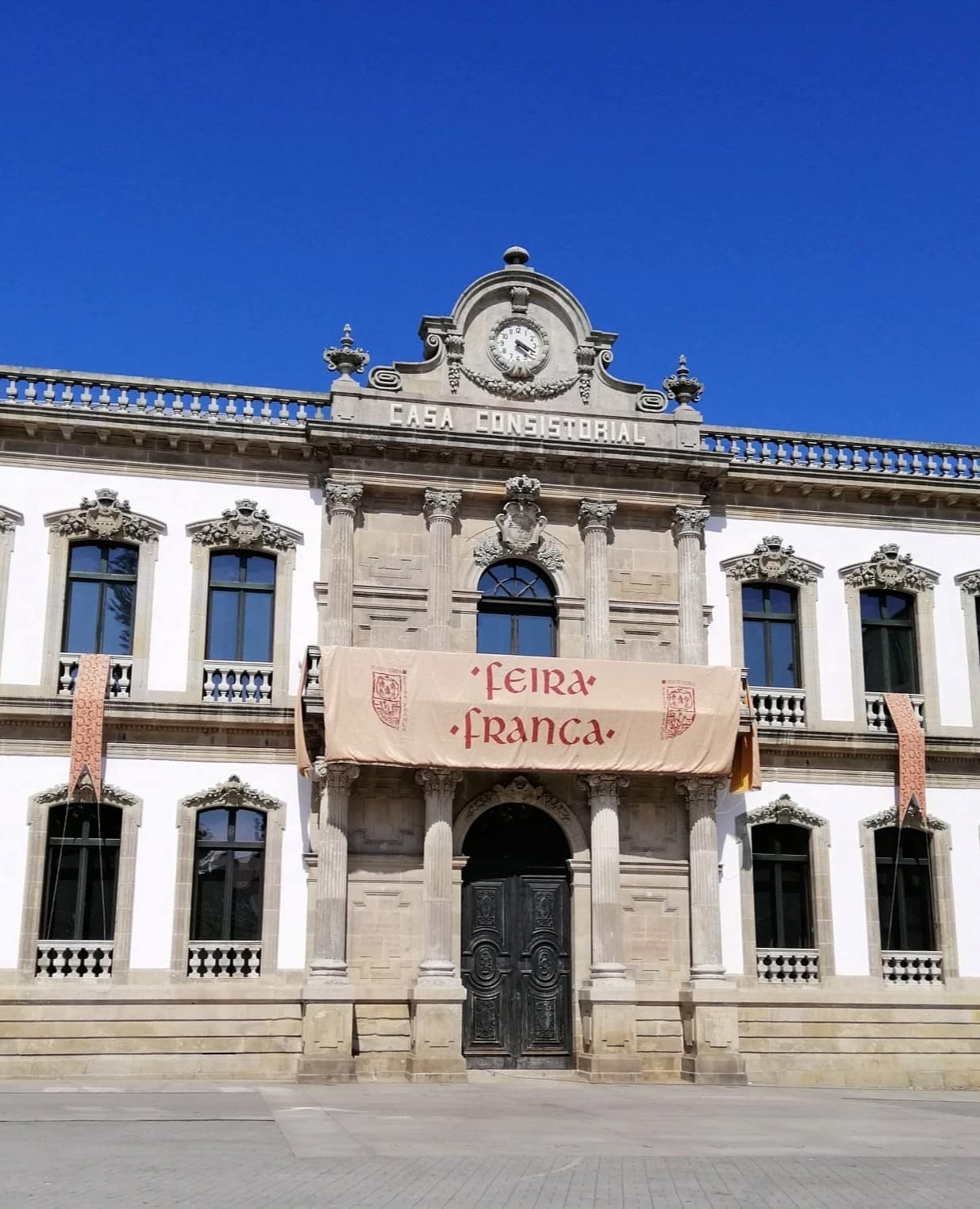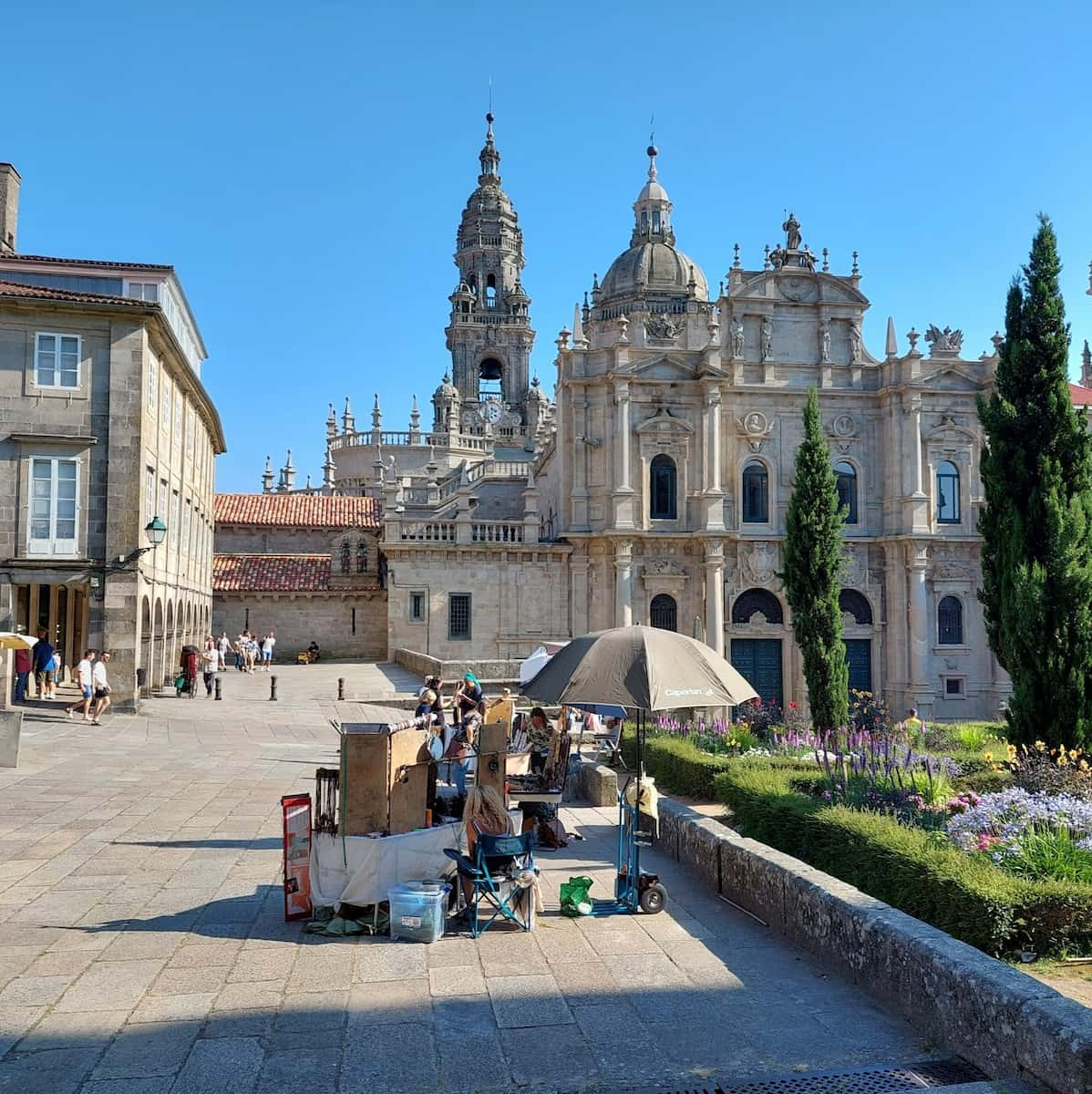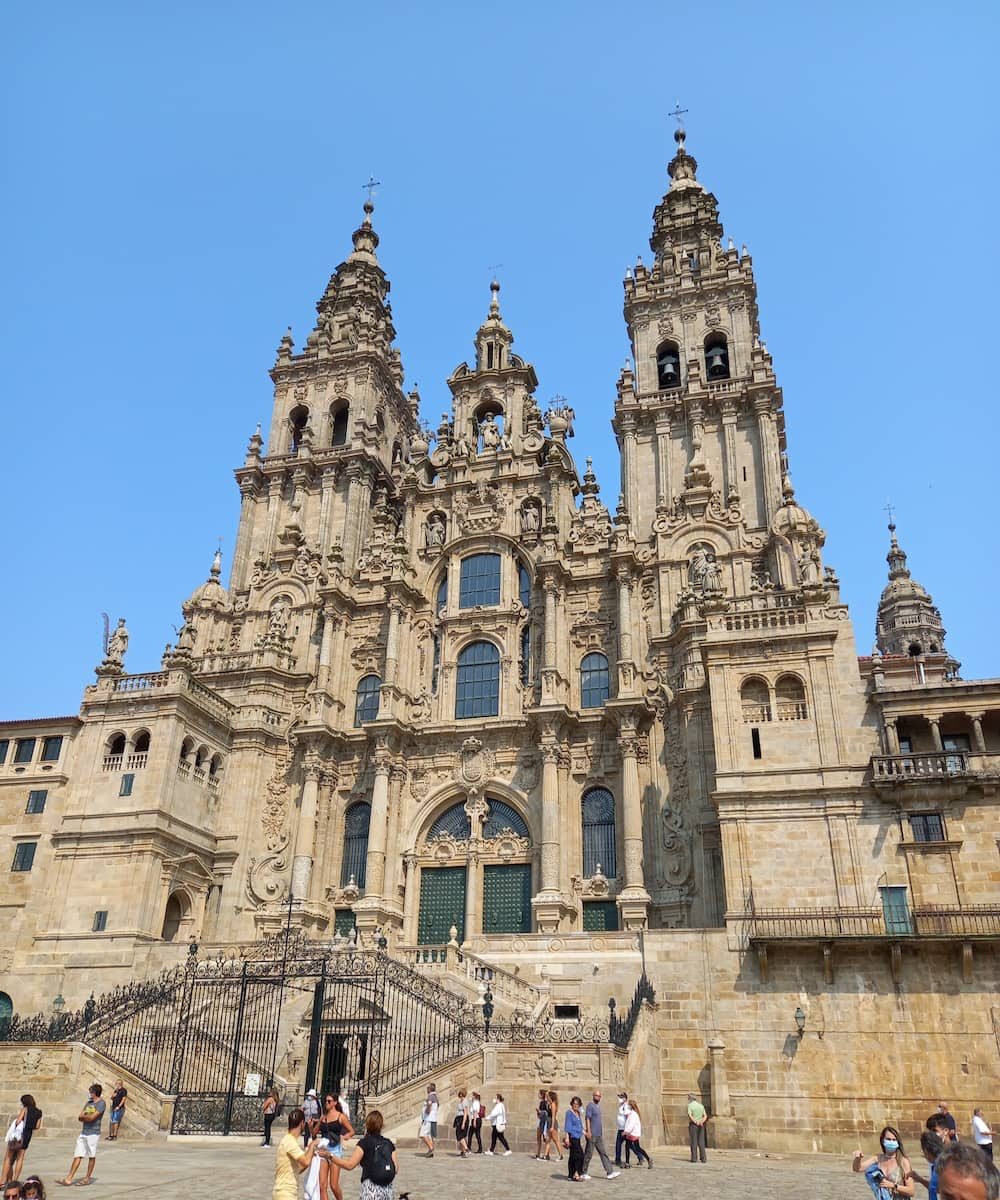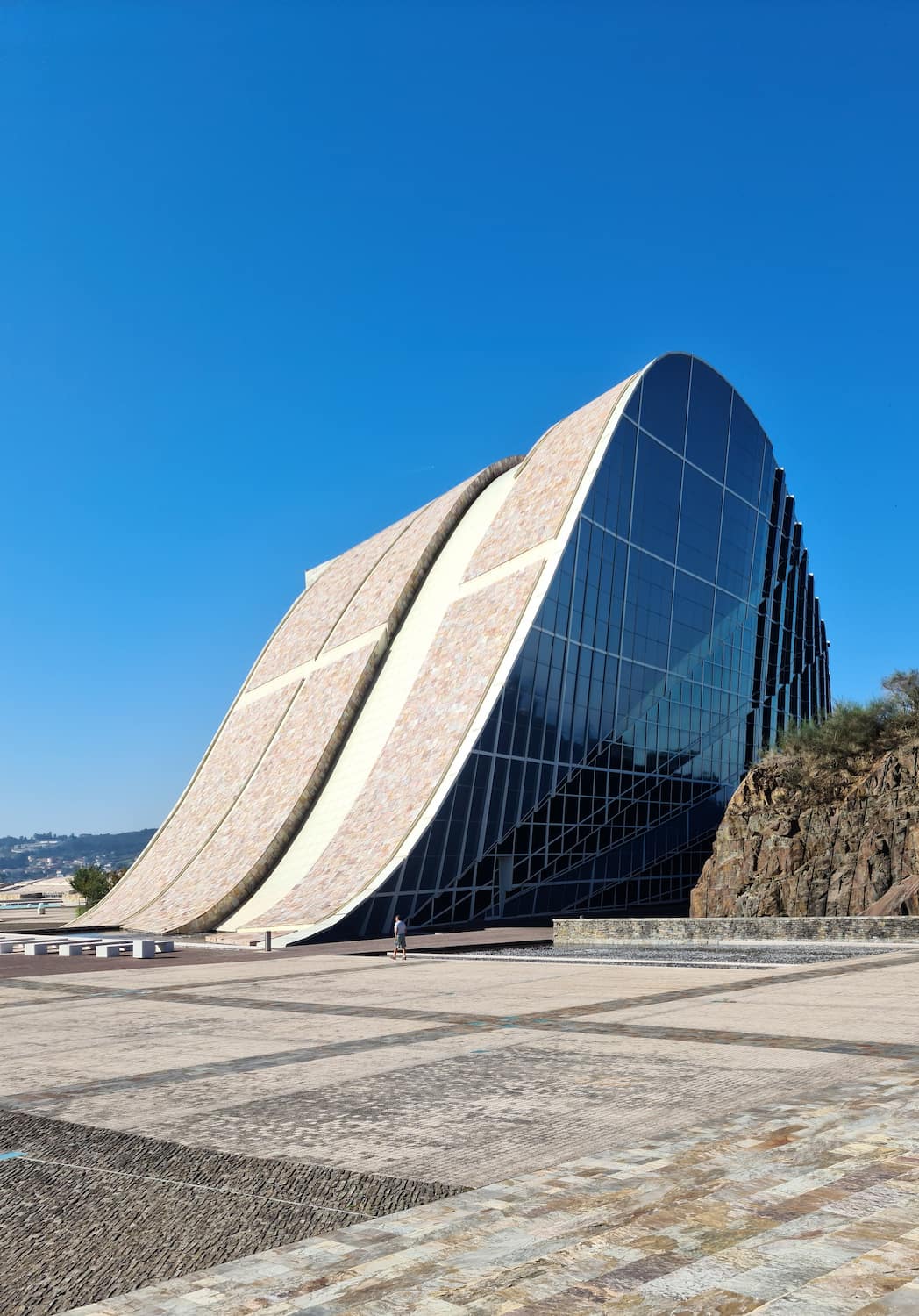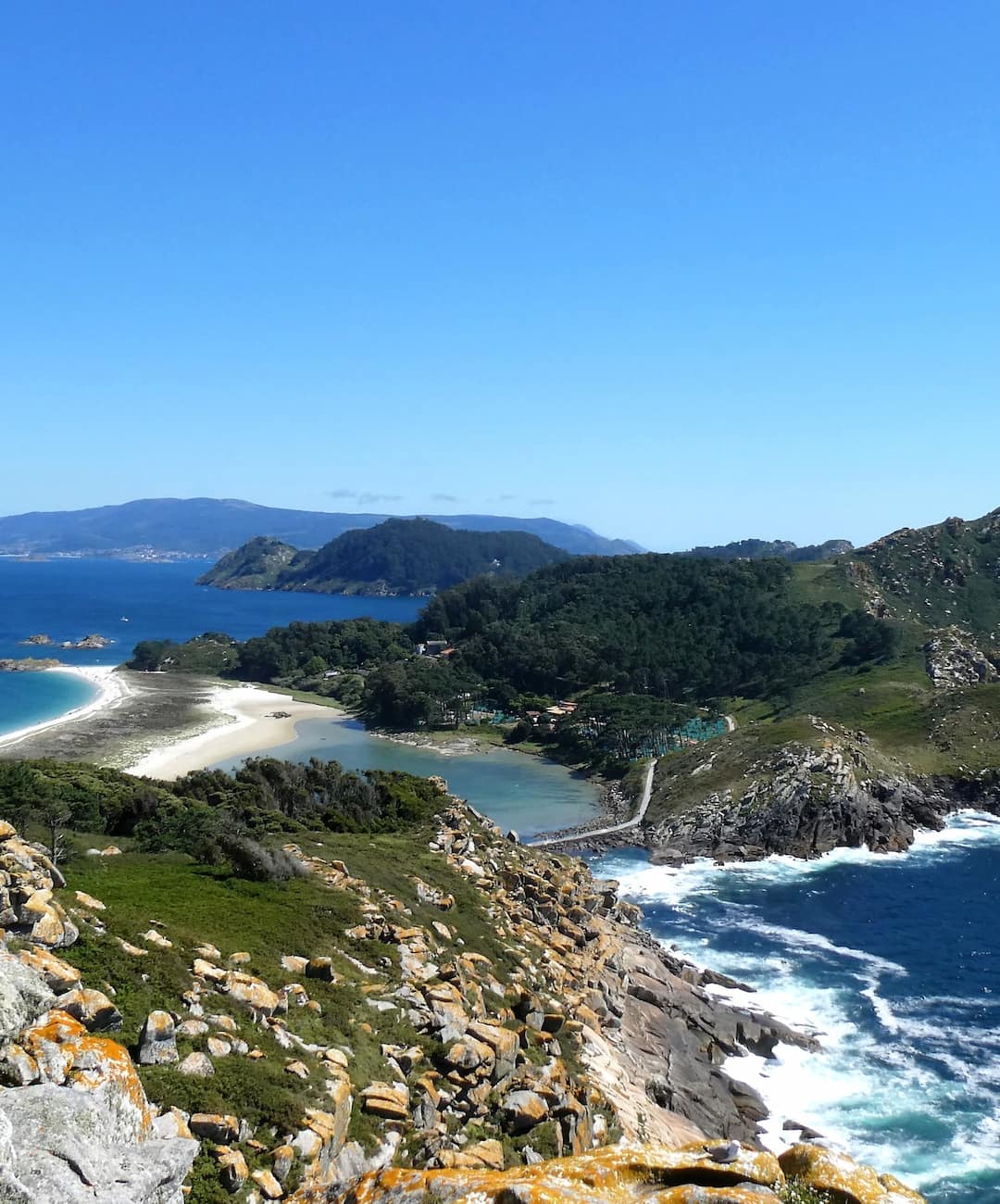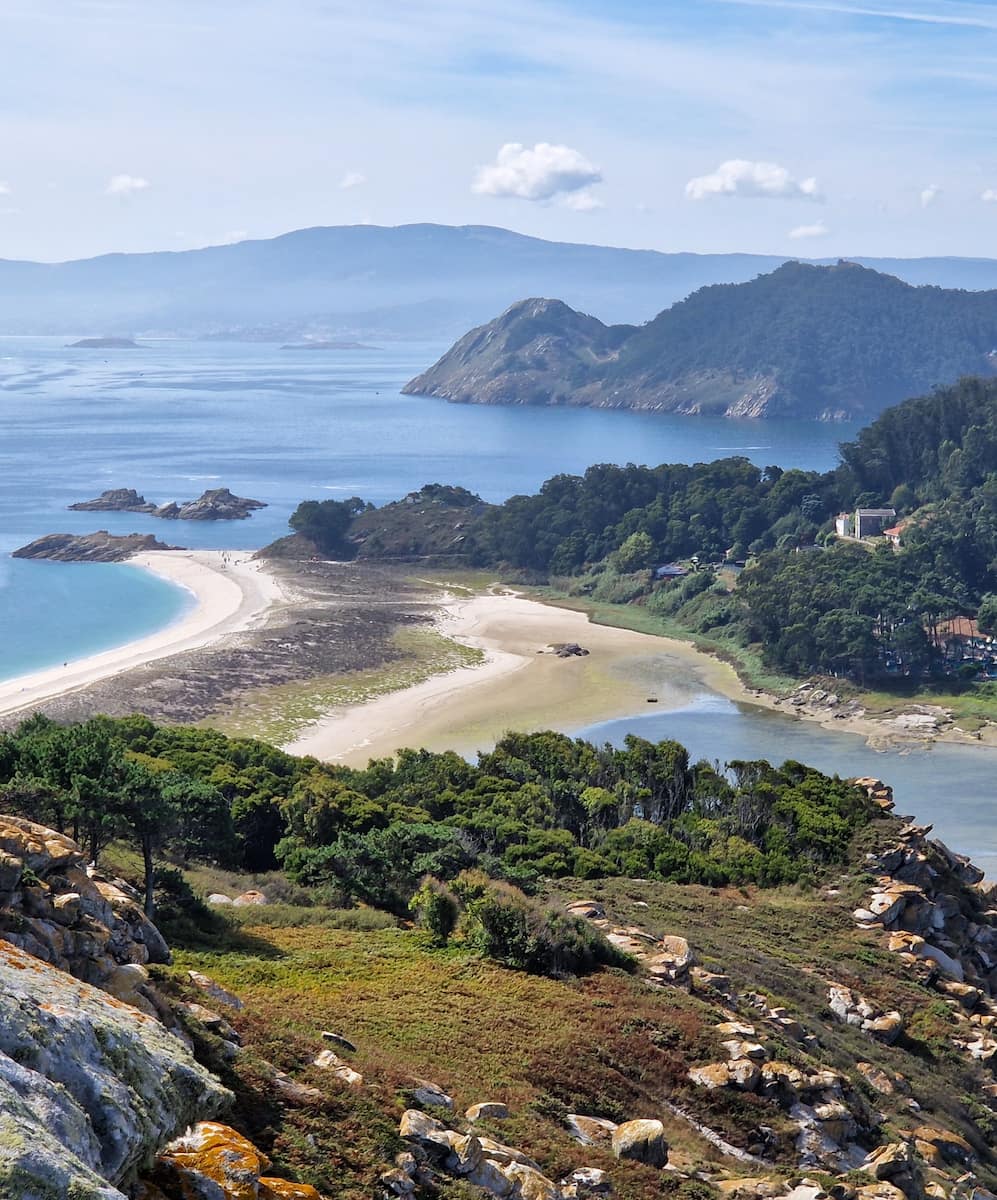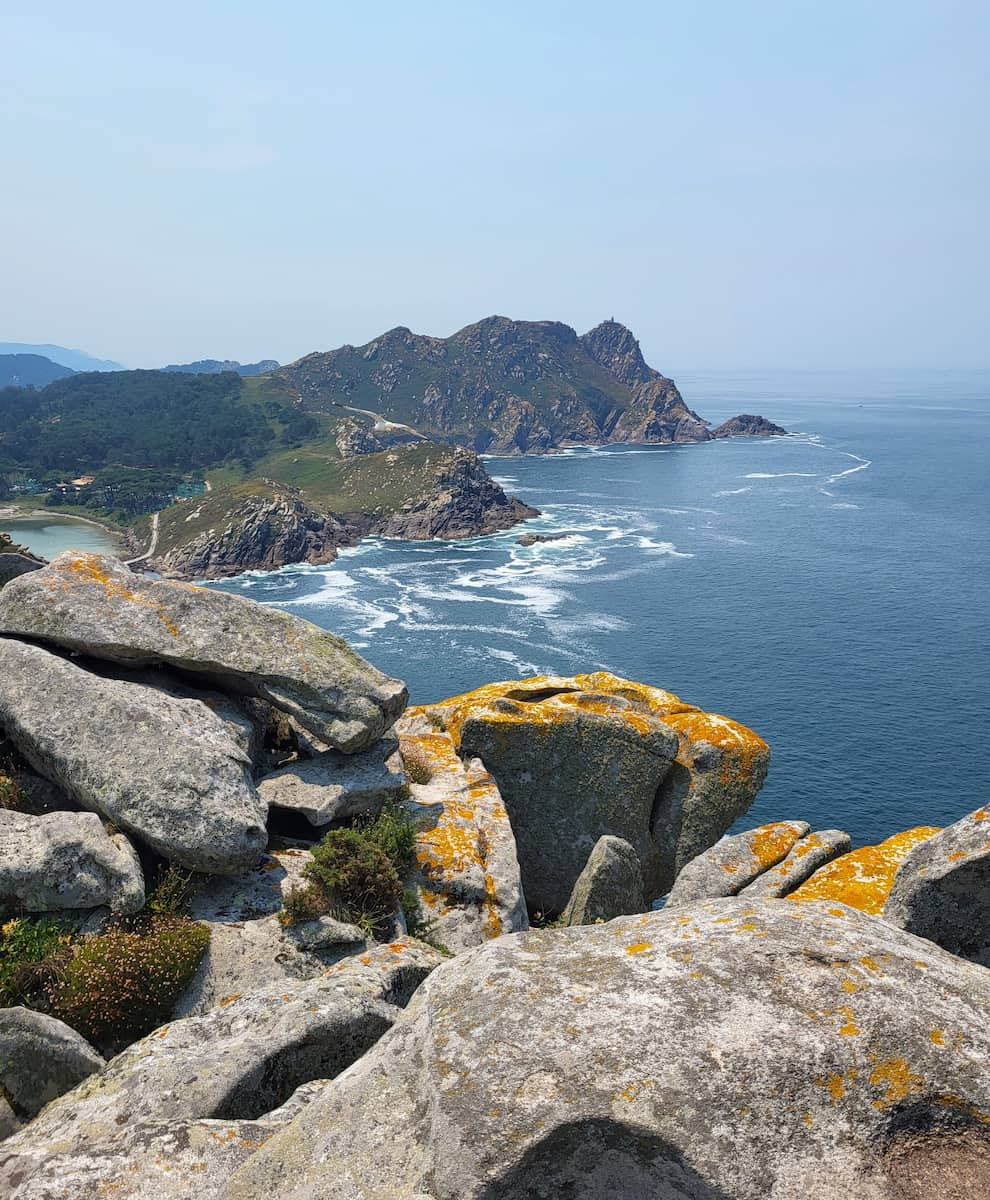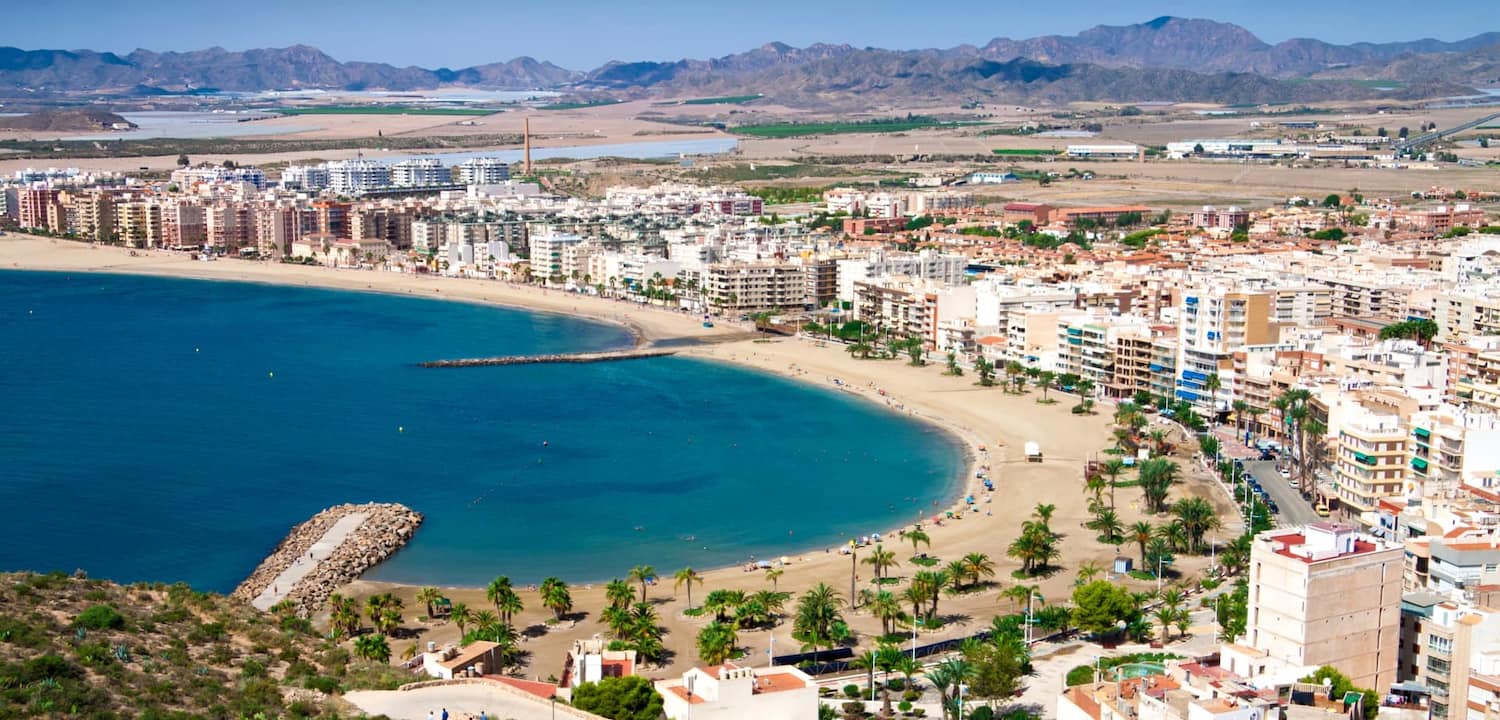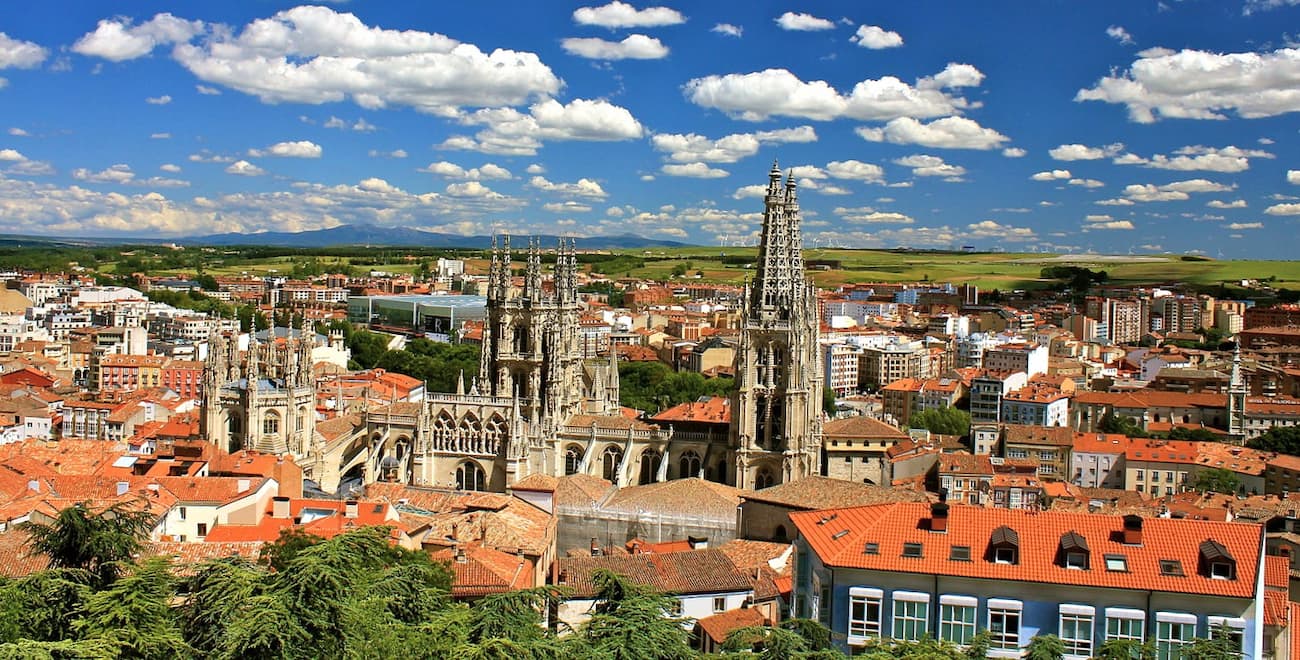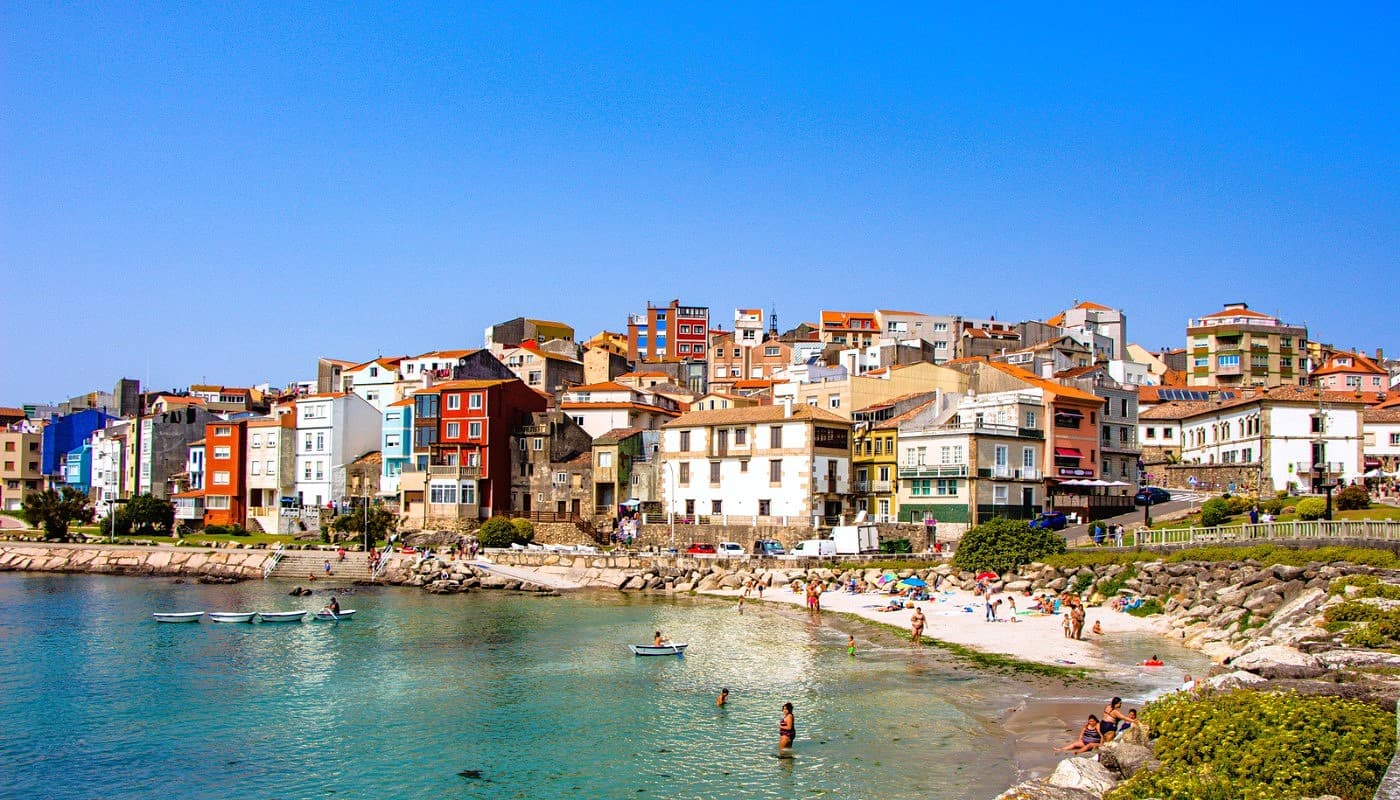🏡 Where to stay in Vigo:
- 💎 Luxury Hotel: Pazo Los Escudos Hotel Spa & Resort
- ✨ 5-Star: Gran Hotel Nagari Boutique & Spa
- 🏨 4-Star: Hotel Coia de Vigo
- 🛏️ 3-Star: BAYAMO 2
- 💸 Cheap: R4Hostel
- 🏢 Apartament: Casa MIMOSA Vigo
- 👨👩👧👦 For Families: Attica21 Vigo
- 🏩 For Couples: Agua de Mar Hotel Boutique
👩🏻 Best Guided Tours:
- Electric bike tour of Vigo and its coast from €35 (⭐4.8/5)
- Vigo: Walking Tour with local History & Culture from €15 (⭐4.9/5)
- Vigo, Galicia: Walking Tour of Mysteries and Legends from €18 (⭐4.8/5)
- Vigo: Private Walking Tour with local guide from €120 (⭐5.0/5)
Best Things To Do in Vigo, Spain
1. Casco Vello (Old Town)
Plaza life. Plaza de la Constitución captivated me with its lively atmosphere and beautiful arcades. I spent hours people-watching from a café terrace while sipping a glass of Albariño wine (€3.50/$3.80) – the perfect introduction to Galician culture.
Seafood heaven. Just a short walk from Porta do Sol (the city’s kilometer zero), I discovered Rúas da Ostras, where fresh oysters are served right on the street. I tried six local oysters for €12 ($13) and they were the freshest I’ve ever tasted.
Architectural gems. The Co-Cathedral of Santa María dominates the skyline with its Neo-Classical design. Inside, I was mesmerized by the elegant altarpiece and intricate woodwork – and entry is completely free!
Local tip: Visit Rúa dos Cesteiros to find authentic handmade baskets and hats made by local artisans. These make perfect souvenirs that support traditional craftsmanship.
Additional info: The Casco Vello is also home to numerous frescoes adorning building façades, giving the area a magical touch. Don’t miss Prazo do Berbés with its vibrant atmosphere and waterfront views – this square was once the center of Vigo’s fish market. For art lovers, the MARCO Museum, Barrié Foundation, and Casa das Artes are all located in this district, making it Galicia’s most important art enclave.
⭐ Best Activities
- Essential Walking Tour through the Emblematic Places of Vigo – Discover Vigo’s most iconic landmarks and learn about its rich history on this guided walking tour that starts at the Cathedral of Santa Maria de Vigo and explores the city’s emblematic sites.
2. O Sereo
Mythical guardian. O Sereo (The Merman) is one of Vigo’s most distinctive sculptures. This bronze figure of a merman playing a conch shell stands as a mythological protector of the city and its maritime traditions.
Cultural symbolism. The sculpture represents Vigo’s deep connection to the sea and the legends that have shaped local culture for centuries. According to folklore, the merman’s music guides lost sailors safely to shore.
Photo opportunity. Located on Montero Ríos Avenue along the waterfront, the statue offers excellent photo opportunities with the harbor and fishing boats in the background.
Surrounding attractions. Within a short walking distance, you’ll find:
- The bustling fish market (Lonja) where daily auctions take place
- Traditional seafood restaurants serving the day’s catch
- The maritime station where ferries depart for the Cíes Islands
- The historic oyster street vendors of Calle de las Ostras
Local insight: Visit in the early morning to see fishermen unloading their catch nearby – an authentic glimpse into Vigo’s working harbor that few tourists experience.
⭐ Best Activities
- Private Shore Excursion or City Tour of Vigo – Perfect for cruise ship passengers or visitors with limited time, this private tour offers a comprehensive overview of Vigo’s highlights, including its historic center, beautiful beaches, and panoramic viewpoints.
3. Monte O Castro for panoramic views
Hilltop fortress. Monte O Castro sits proudly at 147 meters above sea level, offering the most spectacular views of Vigo. I spent an entire afternoon exploring this ancient Celtic settlement that later became a medieval fortress.
Photo spots. From the summit, I captured breathtaking panoramas of the Ría de Vigo estuary, the Cíes Islands, and the entire cityscape. The contrast between blue waters and urban landscape makes for incredible photography.
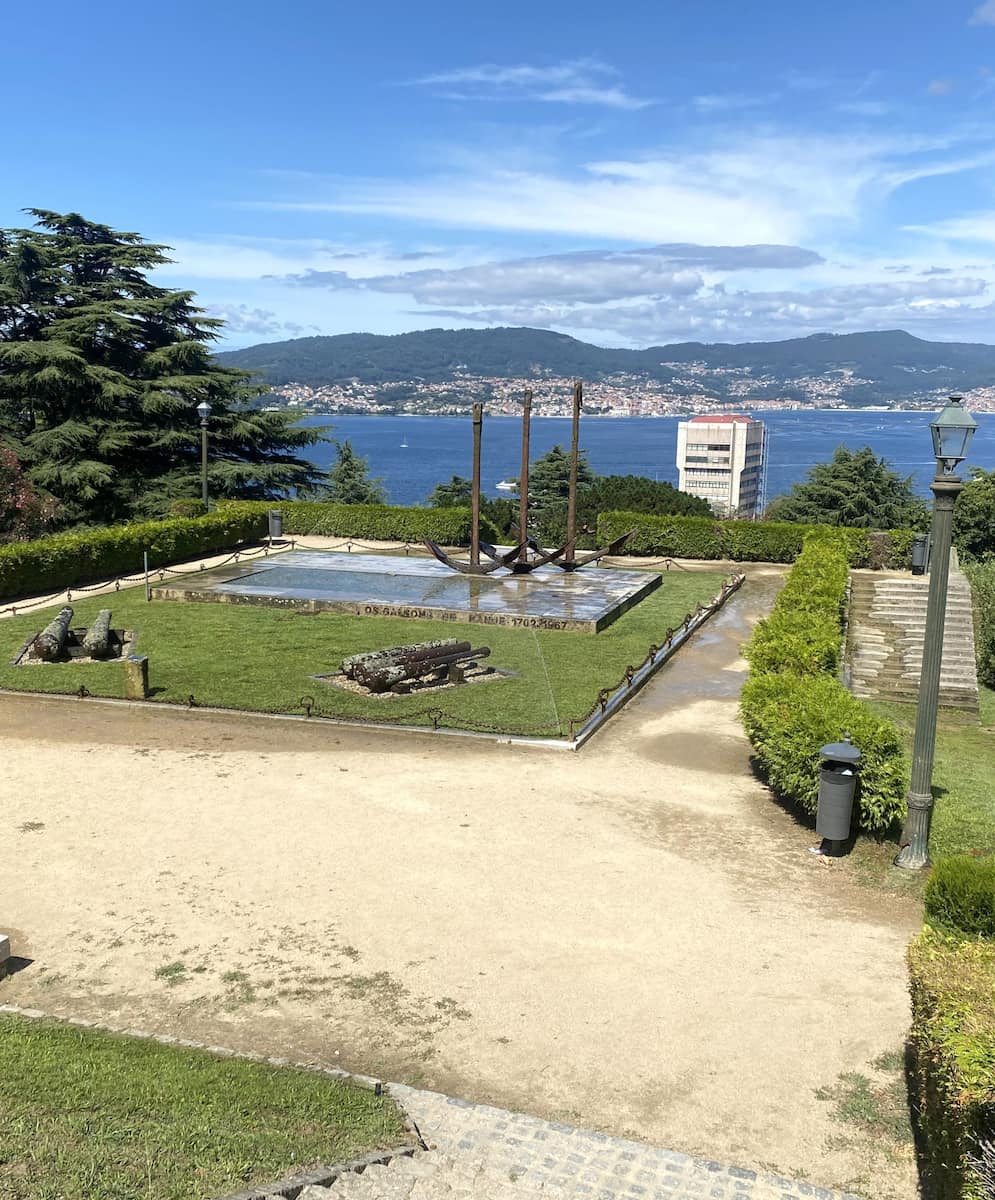
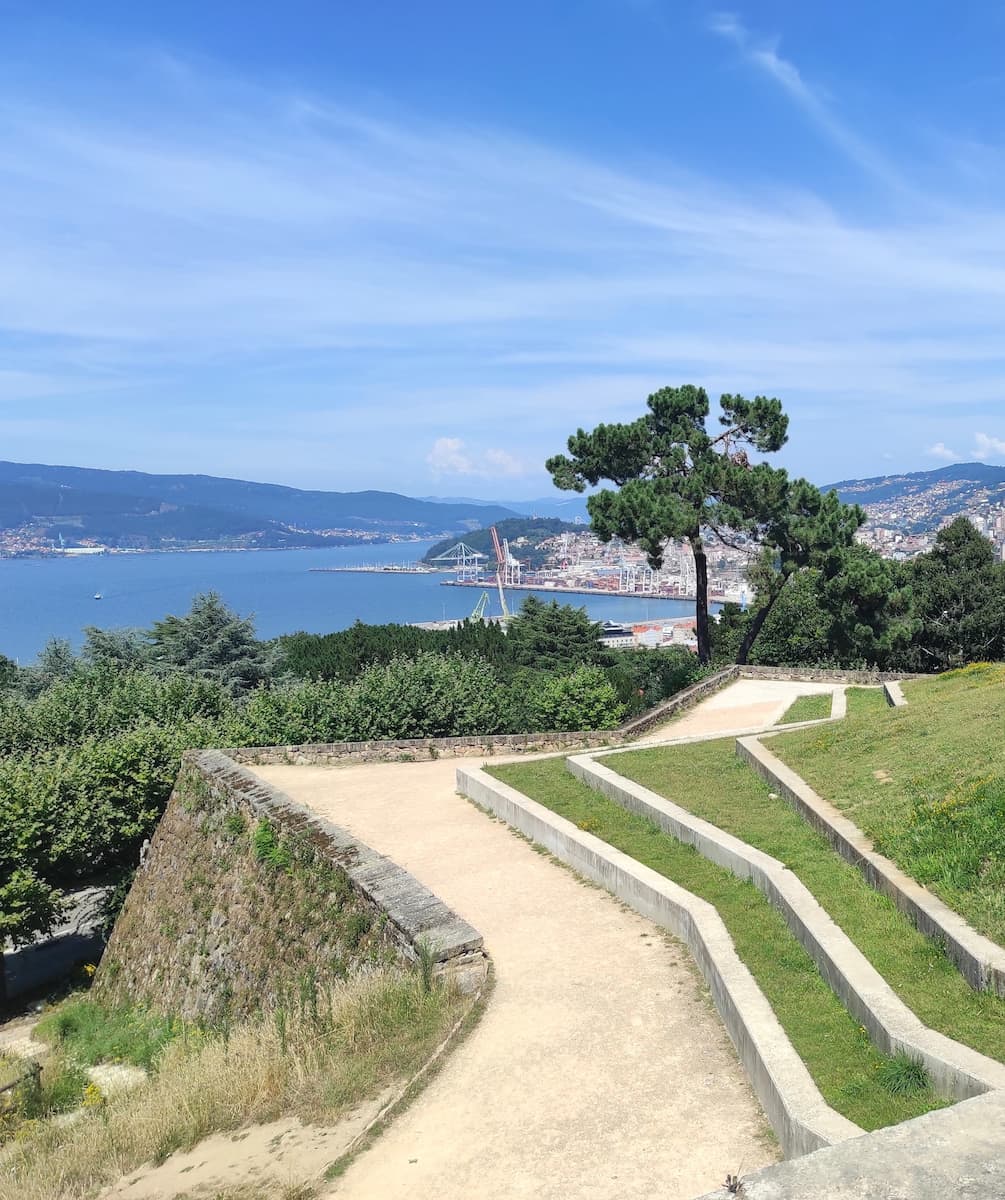
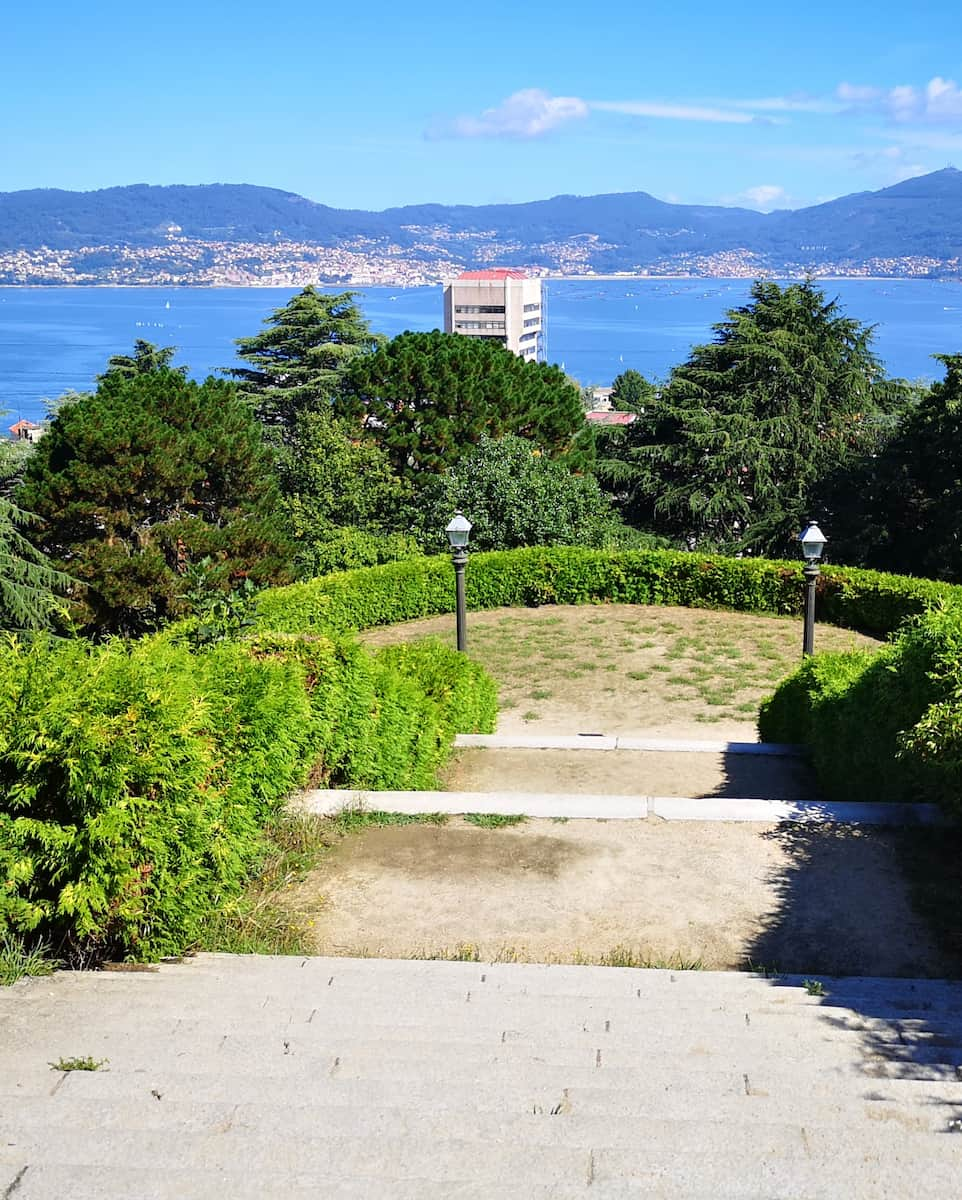
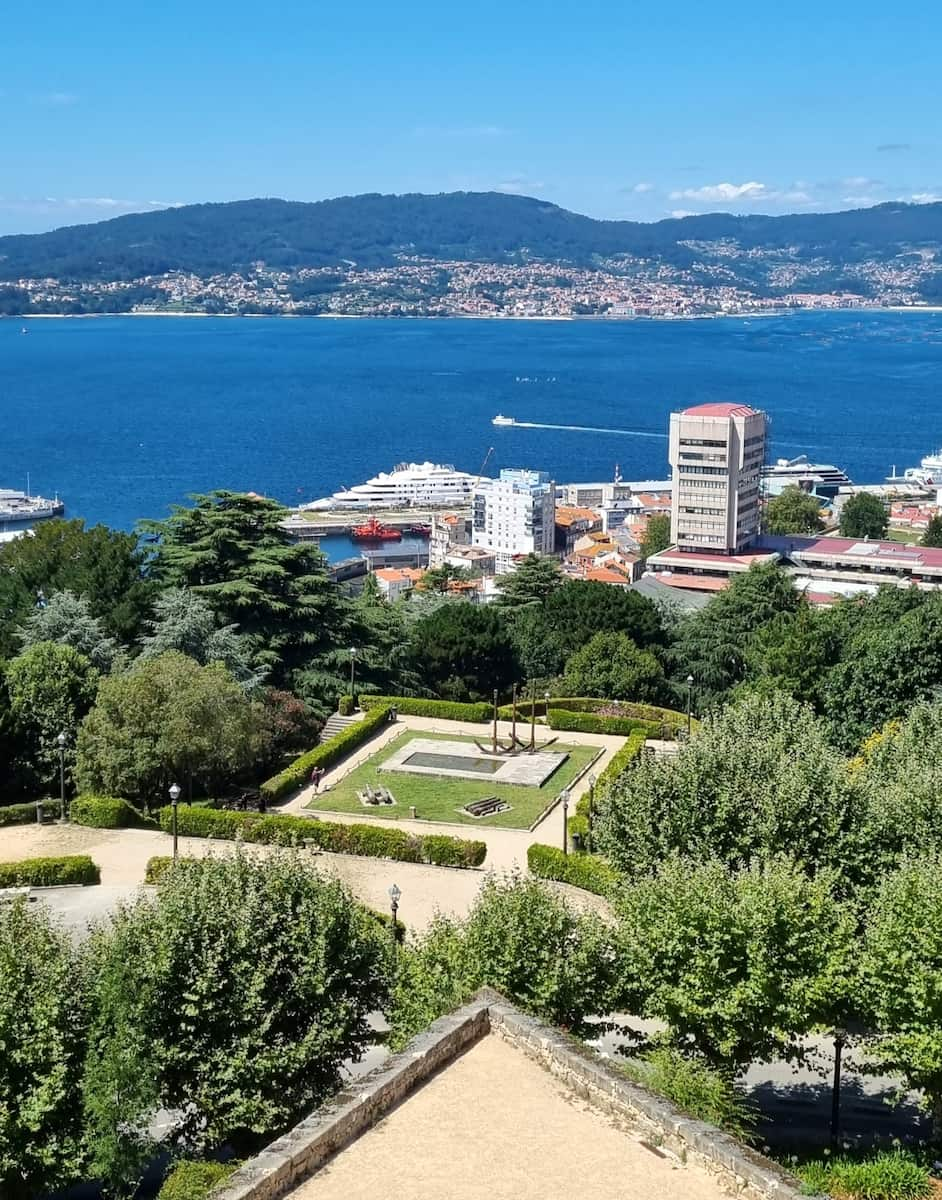
Garden oasis. The hillside gardens surprised me with their tranquility. Pathways wind through manicured lawns, ancient trees, and colorful flower beds – a perfect escape from the bustling city below.
Historical significance. The Castro fortress played a crucial role in defending Vigo against invaders throughout history. Information panels throughout the park explain its fascinating past from Celtic times to the Napoleonic Wars.
Local tip: Visit at sunset when the city lights begin to twinkle and the estuary glows golden. Bring a small picnic and enjoy one of Vigo’s most romantic spots.
Additional info: Monte O Castro is Vigo’s true green space, rising to 149 meters and featuring a variety of leafy tree species that make it a sort of botanical park. The site includes archaeological remains dating from the 3rd-1st centuries BC, later becoming a Roman fortification.
⭐ Best Activities
- Vigo: Stories and Landscapes from the Castro – Explore Vigo’s Castro hill and learn about the city’s fascinating history and stunning landscapes on this guided tour that offers panoramic views of the city and its surroundings.
4. Samil Beach
Urban paradise. Just 10 minutes from downtown, Samil Beach stretches for 1.7 kilometers of golden sand. I was amazed to find such a pristine beach so close to a major city – complete with palm trees, promenades, and crystal-clear Atlantic waters.
Beach activities. My morning volleyball game quickly attracted locals who invited me to join their team. The beach offers:
- Volleyball and football courts (free to use)
- Kayak rentals (€10/$11 per hour)
- Paddleboard lessons (€25/$27.50 for beginners)
Beachfront dining. The chiringuitos (beach bars) along Samil serve incredible fresh seafood. I tried pulpo a feira (octopus with paprika) for €12/$13 while watching the sunset – an unforgettable Galician experience.
Accessibility. The beach promenade is fully accessible with wooden walkways reaching the shoreline. Public facilities include clean showers, changing rooms, and plenty of parking (€2/$2.20 for the day).
Insider advice: Visit on weekdays to avoid crowds, especially during July and August when locals flock here to escape the summer heat.
Additional info: Located near the Cíes Islands, Samil Beach is at the mouth of the river Lagares. The area is well-connected to the city via several Vitrasa urban public transport lines (L10, C15A, C15B, C15C year-round, C3 during summer, and night lines CN1 and CN2). Around Samil, you’ll find museums like Museo do Mar and Verbum, plus numerous leisure facilities including three public swimming pools, basketball courts, tennis and paddle courts, a skating rink, and a well-lit promenade with drinking fountains and viewing telescopes to observe cruise ships.
5. MARCO
Contemporary hub. MARCO (Museo de Arte Contemporánea) occupies a former courthouse in Vigo’s center. I was immediately struck by the contrast between its neoclassical exterior and cutting-edge exhibitions inside.
Rotating exhibitions. During my visit, the museum featured works by emerging Galician artists alongside international names. The exhibitions change regularly, ensuring there’s always something new to discover.



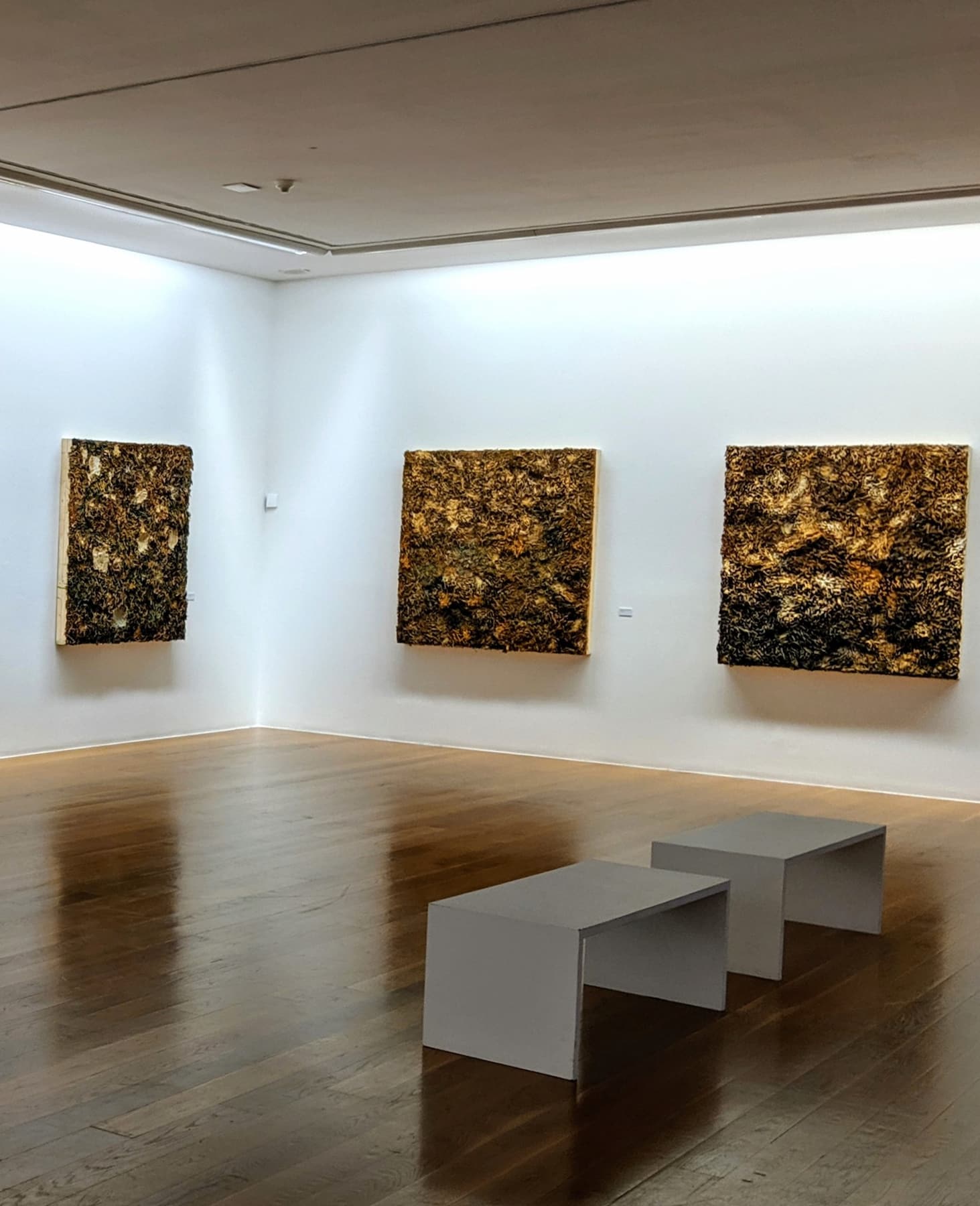
Affordable culture. Entry costs just €2.50/$2.75, making it one of Vigo’s best cultural values. It’s free on Fridays from 4 pm and all day Sunday – perfect for budget travelers.
Architectural marvel. The central courtyard with its glass ceiling creates a stunning light-filled space. I spent hours sketching the unique architectural elements while sipping coffee from the museum café.
Pro tip: Check their website before visiting as they often host free workshops and artist talks that provide deeper insights into Galician contemporary art.
Additional info: MARCO is located on Príncipe Street, Vigo’s premier shopping destination. It forms part of Vigo’s Cultural Golden Mile, a block where most of the city’s foundations and cultural centers are located. The museum is a key stop for those interested in contemporary art and is easily accessible while exploring the city center.
⭐ Best Activities
- Free Walking Tour in Vigo – Join a knowledgeable local guide for a free walking tour of Vigo, where you’ll discover the city’s main attractions, hidden gems, and fascinating stories about its culture and history.
7. Ría de Vigo by boat
Maritime adventure. Exploring the Ría de Vigo by boat was the highlight of my trip. This massive bay is the lifeblood of the region, and seeing Vigo from the water offers a completely different perspective.
Tour options. I chose a traditional wooden boat tour (€35/$38.50) that included:
- 3-hour excursion
- Stops at mussel farms to learn about local aquaculture
- Wine and freshly harvested mussels tasting
- Swimming opportunity in secluded coves
Wildlife encounters. The captain pointed out dolphins playing in our wake and explained how the unique ecosystem supports incredible biodiversity. Seabirds swooped overhead as we navigated through the calm waters.
Fishing tradition. Passing by small fishing villages like Cangas and Moaña, I witnessed fishermen mending nets and unloading their daily catch – traditions unchanged for generations.
Practical advice: Book tours directly at the marina for better prices than online. Morning trips typically offer calmer waters and better wildlife spotting opportunities.
8. Castrelos Park and Quiñones de León Museum
Urban oasis. Castrelos Park spans 220,000 square meters of lush greenery, making it Vigo’s largest park. I spent an entire day exploring its English and French gardens, centuries-old trees, and peaceful walking paths.
Palace museum. The 17th-century Quiñones de León Palace houses an impressive collection of Galician art and historical artifacts. Entry costs €3/$3.30, but the first Sunday of each month is free.
Summer concerts. The park’s outdoor auditorium hosts free concerts during summer evenings. I stumbled upon a traditional Galician folk music performance that had everyone dancing under the stars.
Garden highlights. Don’t miss:
- The rose garden with over 100 varieties
- The sensory garden designed for visually impaired visitors
- The ornamental pond with its resident swans and ducks
- The ancient camellia trees (Galicia’s emblematic flower)
Local secret: Visit the small botanical garden behind the palace where gardeners cultivate rare plant species – it’s often overlooked by tourists but absolutely worth finding.
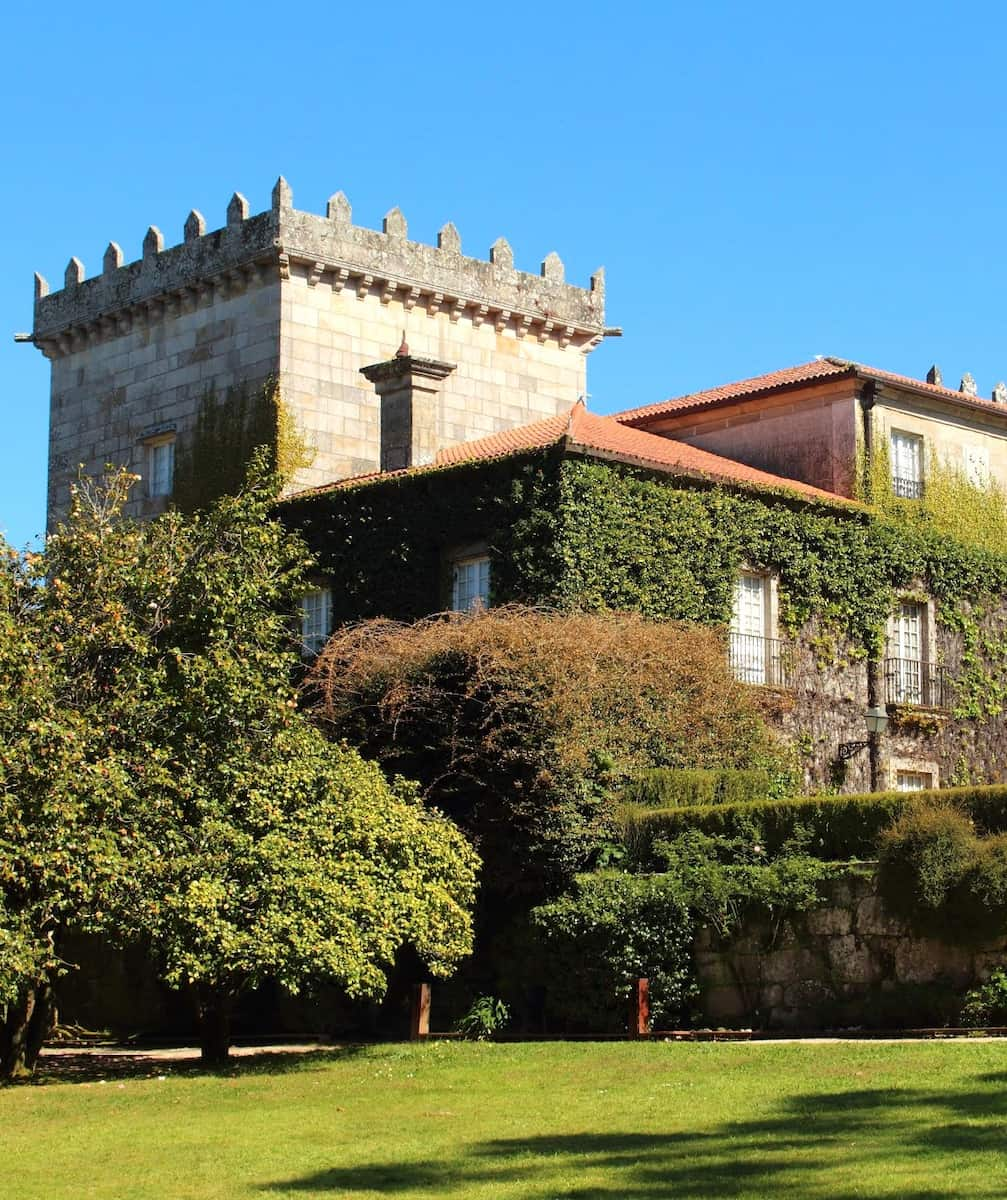
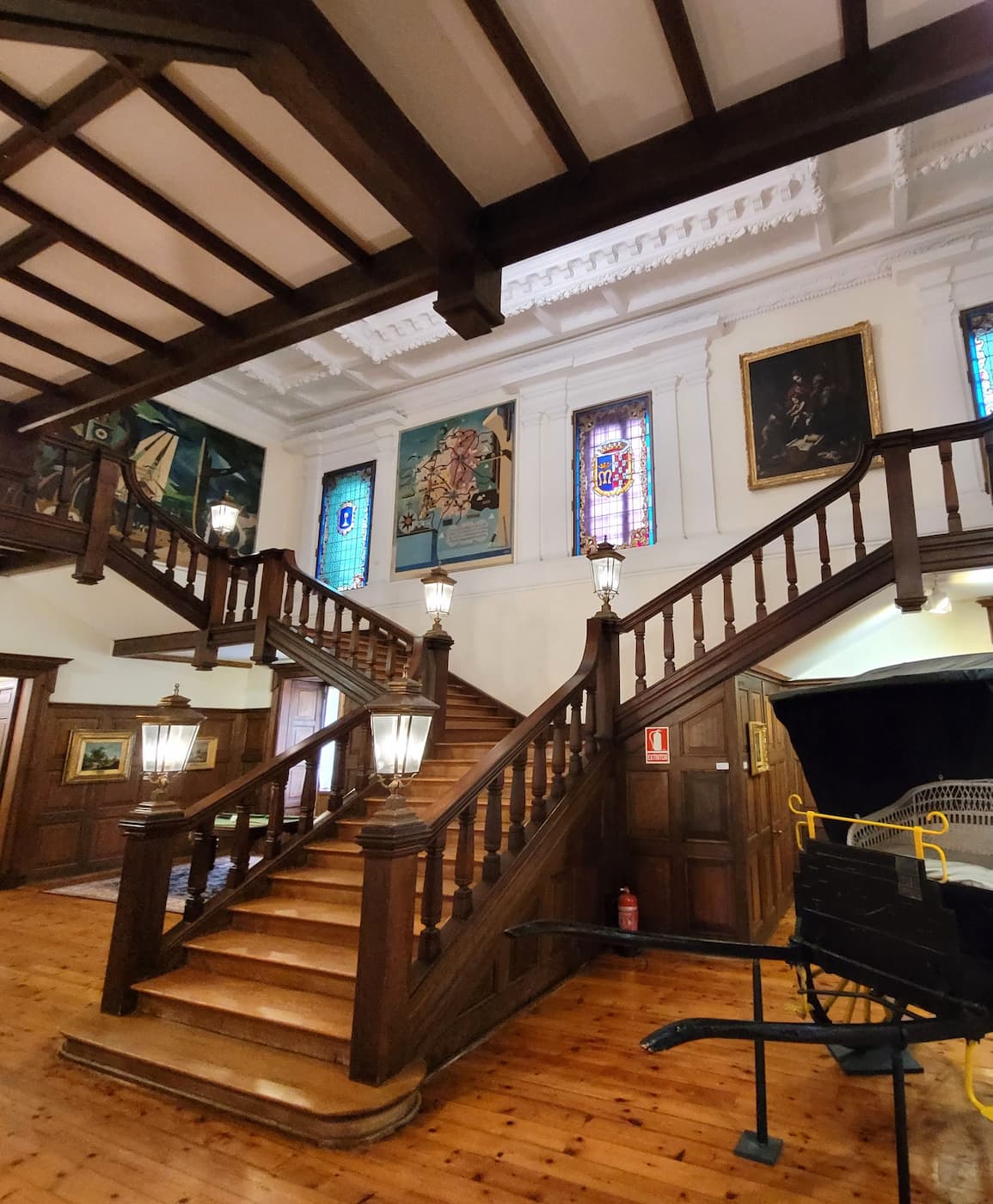
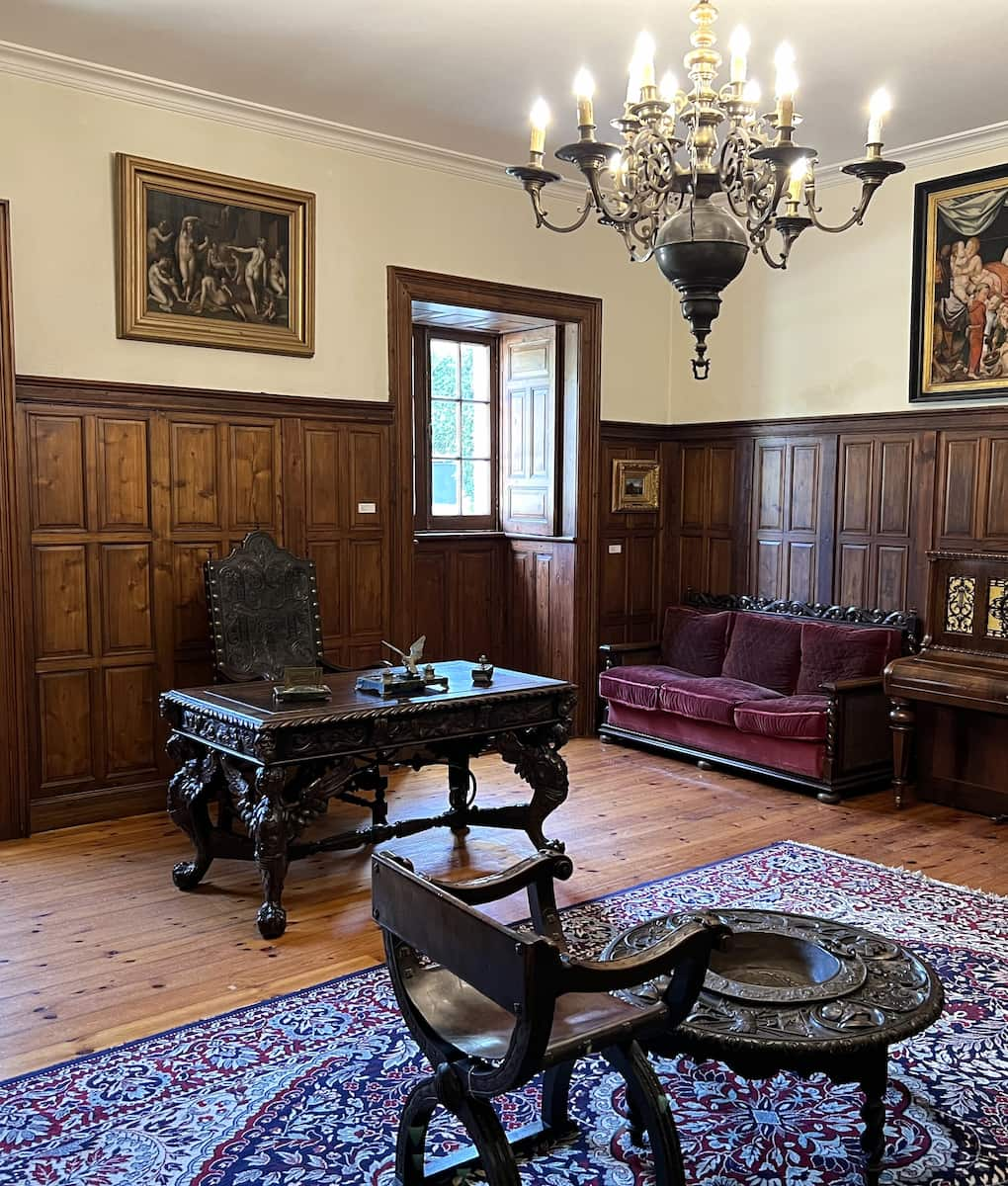
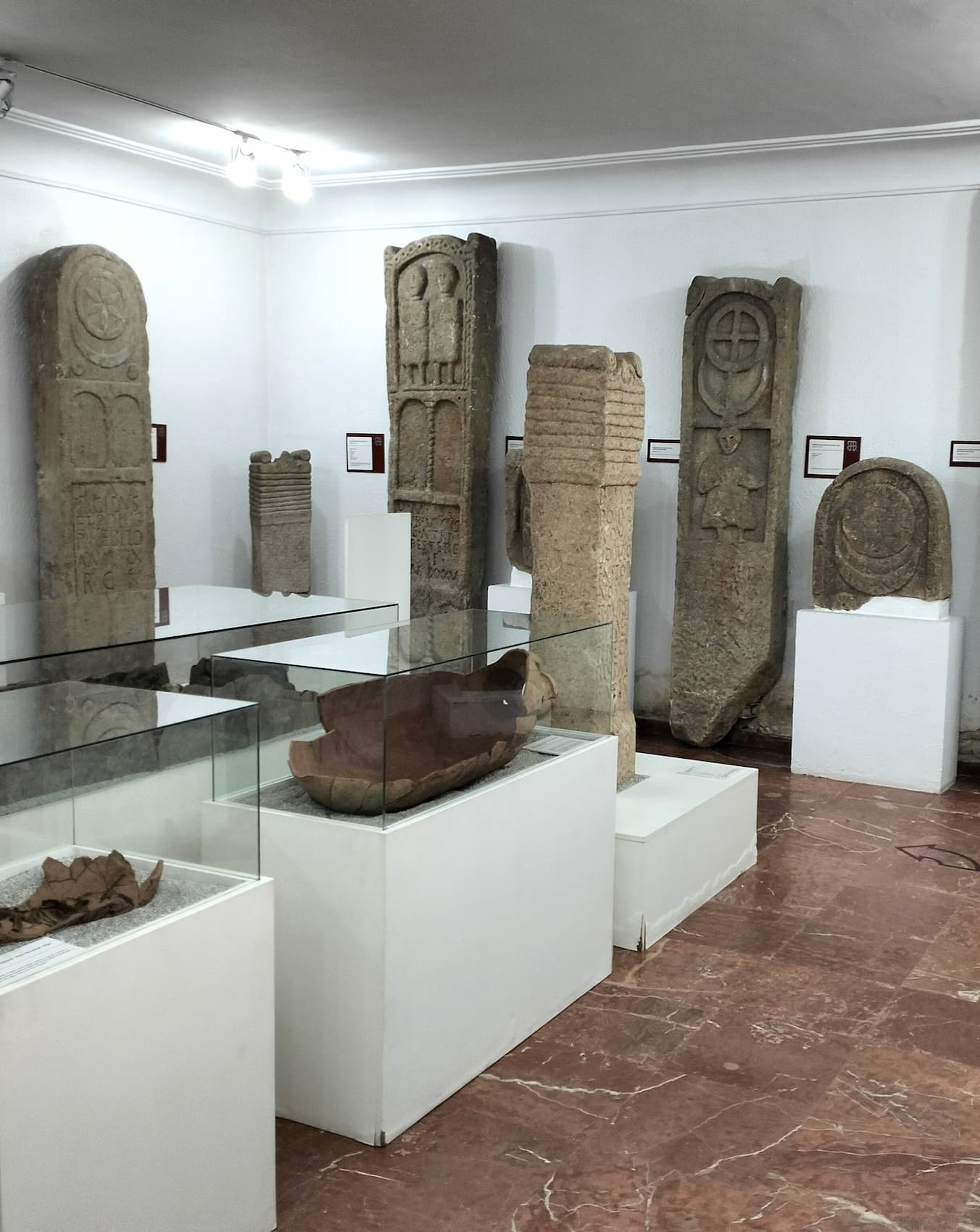
Additional info: Castrelos Park dates back to the 13th century when it was already called “Castrelis.” It runs along the Lagares River and is a popular spot for sports activities with numerous running routes and training trails. The park is also one of the best places in Vigo for families with children, featuring a huge playground and a lake with ducks and swans.
9. Príncipe Street
Shopping haven. Príncipe Street is Vigo’s premier shopping destination. This pedestrian thoroughfare runs through the heart of the Ensanche district, lined with boutiques, department stores, and cafés beneath beautiful modernist buildings.
Retail therapy. I found everything from international brands to local designers. The Galician fashion scene surprised me with its quality and uniqueness – I couldn’t resist a handmade leather bag from a local artisan (€65/$71.50).
Café culture. Taking a break at Café Alameda, I watched the world go by while enjoying a cortado (€1.20/$1.30) and tortilla de patatas (€3.50/$3.85) – the perfect mid-shopping refuel.
Architectural gems. Looking up revealed stunning façades and balconies from the early 20th century. The street itself tells the story of Vigo’s commercial boom during this period.
Shopping tip: Most shops close for siesta between 2-4:30 pm but stay open until 8:30 pm. For the best experience, shop in the morning or evening and use siesta time for a leisurely lunch.
10. Museo do Mar de Galicia
Maritime heritage. The Museum of the Sea celebrates Galicia’s profound connection to the Atlantic. Housed in a former cannery, the building itself is a masterpiece of industrial architecture redesigned by César Portela.
Interactive exhibits. I was fascinated by the displays showing traditional fishing techniques and boat-building crafts. The aquarium section features local marine species from the Ría de Vigo ecosystem.
Fishing history. The museum tells the story of Vigo’s fishing industry through:
- Authentic fishing vessels you can board
- Traditional net-making demonstrations
- Historical photographs and documents
- Recreated scenes from cannery workers’ lives
Affordable experience. Entry costs €5/$5.50 (free on Sundays after 3 pm). The audio guide (€2/$2.20) is worth the extra cost for detailed explanations in English.
Visitor advice: Allow at least two hours to fully appreciate the exhibits. The museum café offers excellent views and serves traditional seafood dishes at reasonable prices.
11. Monumento a Jules Verne
Literary connection. This unique monument celebrates Jules Verne’s connection to Vigo through his novel “20,000 Leagues Under the Sea.” I was surprised to learn that Verne set a key scene in the Ría de Vigo, where Captain Nemo searches for sunken treasure.
Artistic design. The monument features a giant squid tentacle emerging from the pavement – a reference to the novel’s famous squid attack scene. It’s become one of Vigo’s most photographed spots.

Waterfront location. Situated along the harbor promenade, the monument offers beautiful views of the estuary and passing ships. I spent a peaceful hour here watching fishing boats return with their daily catch.
Literary trail. The monument is part of Vigo’s literary walking route that connects sites mentioned in famous works. Ask at the tourist office for the free map of the complete trail.
⭐ Best Activities
- 2-Hour Electric Bike Tour – Explore Vigo effortlessly on an electric bike during this 2-hour guided tour, covering more ground and seeing the city’s highlights while enjoying the fresh air and beautiful scenery.
12. Porta do Atlántico
Modern landmark. The “Gateway to the Atlantic” is a massive contemporary sculpture that has become a symbol of modern Vigo. Standing 15 meters tall, this steel arch frames views of the bay and pays homage to the city’s maritime identity.
Perfect backdrop. I couldn’t resist taking photos with this impressive structure. Its location on the waterfront promenade makes it easily accessible and provides stunning backdrops of the Cíes Islands on clear days.
Night visit. The sculpture is beautifully illuminated after dark, creating a magical atmosphere along the waterfront. I joined locals for an evening paseo (stroll) to appreciate the lights reflecting on the water.
Surrounding area. The promenade around the monument features:
- Outdoor cafés with harbor views
- Small artisan markets on weekends
- Street performers and musicians
- Bicycle rental stations (€5/$5.50 per hour)
Local insight: This area hosts impromptu gatherings during summer evenings where locals share wine and music – a perfect opportunity to experience authentic Galician hospitality.
13. Mercado da Pedra
Treasure hunting. Mercado da Pedra (Stone Market) is Vigo’s beloved flea market where I spent hours browsing through antiques, vintage items, and handcrafted goods. Located in the heart of the old town, it’s a paradise for collectors and souvenir hunters.
Market highlights. Every Sunday morning, the market comes alive with:
- Antique dealers selling everything from vintage cameras to old coins
- Local artisans offering handmade jewelry and leather goods
- Book sellers with rare Galician literature and vintage comics
- Vinyl record collections that attract music enthusiasts
Bargaining culture. I quickly learned that negotiating is expected here. My best find was a beautiful vintage Galician pottery piece that I haggled down from €35 to €25 ($27).
Gastronomic delights. The market is surrounded by cafés and bars where you can sample local specialties:
- Fresh empanadas (€2.50/$2.75 per slice)
- Churros with hot chocolate (€3/$3.30)
- Galician cheese platters (€8/$8.80)
Visitor tip: Arrive early (before 11 am) for the best selection and fewer crowds. Bring cash as most vendors don’t accept cards.
⭐ Best Activities
- Vigo Private Walking Tour – Enjoy a personalized experience of Vigo with a private walking tour tailored to your interests, led by a knowledgeable local guide who will show you the city’s most important sights and share insider tips.
14. Estadio de Balaídos
Football passion. Experiencing a match at Estadio de Balaídos, home to RC Celta de Vigo, was an unforgettable glimpse into local culture. The stadium’s electric atmosphere shows how deeply football is woven into Galician identity.
Stadium experience. Even on non-match days, the stadium tour (€10/$11) offers:
- Access to the players’ changing rooms
- A walk through the tunnel onto the pitch
- Visit to the presidential box and press areas
- Photo opportunities with the club’s trophies
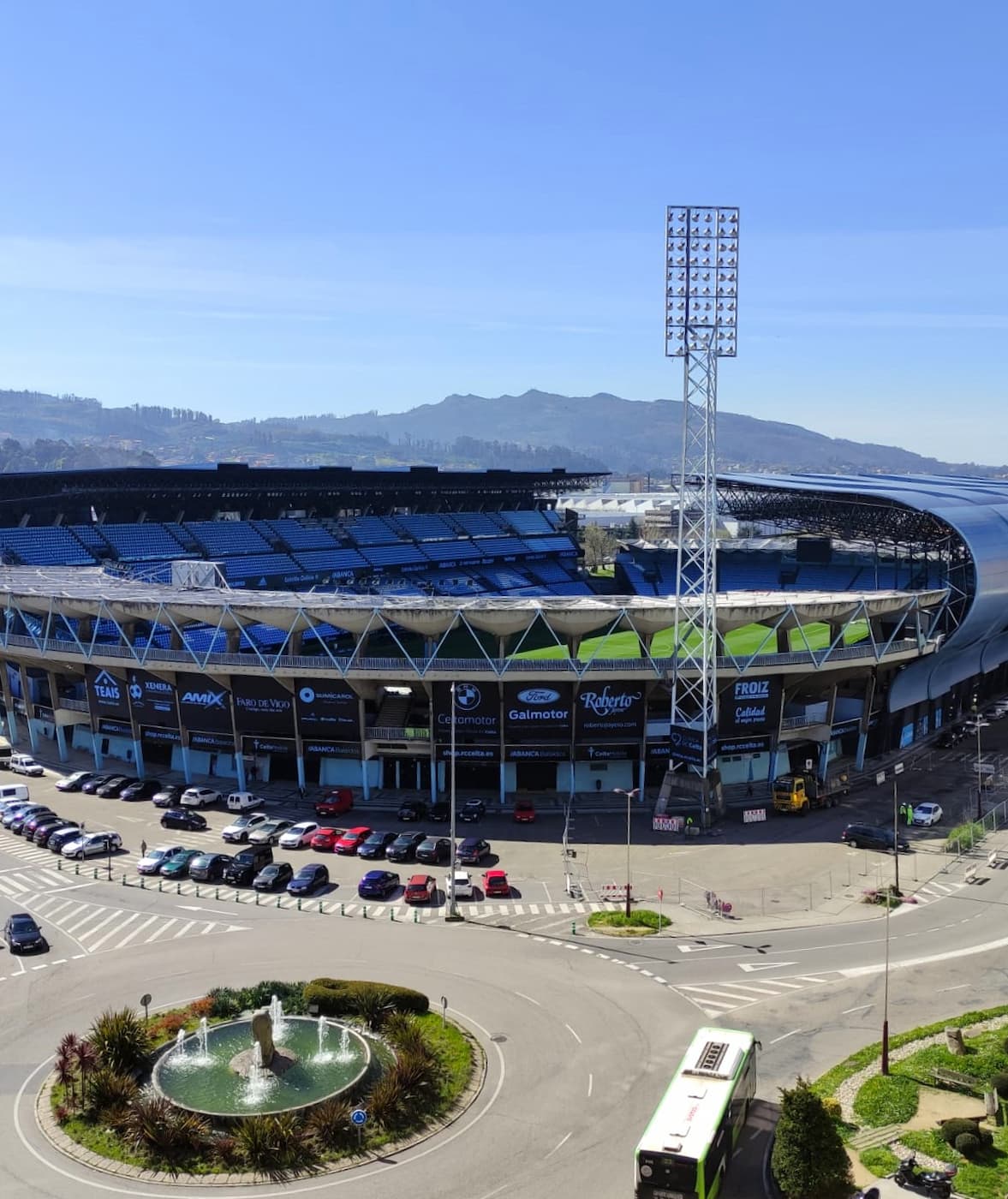
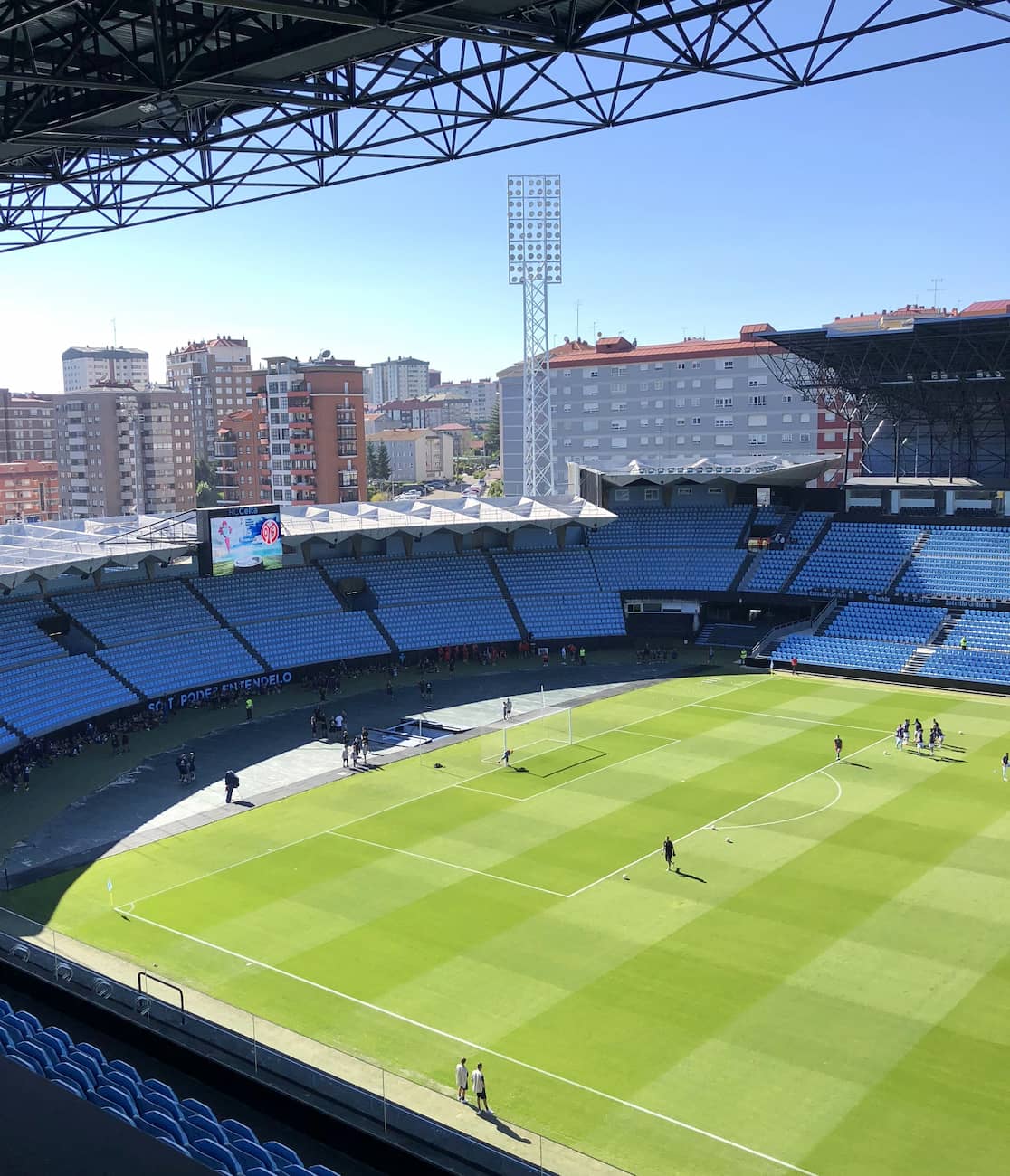
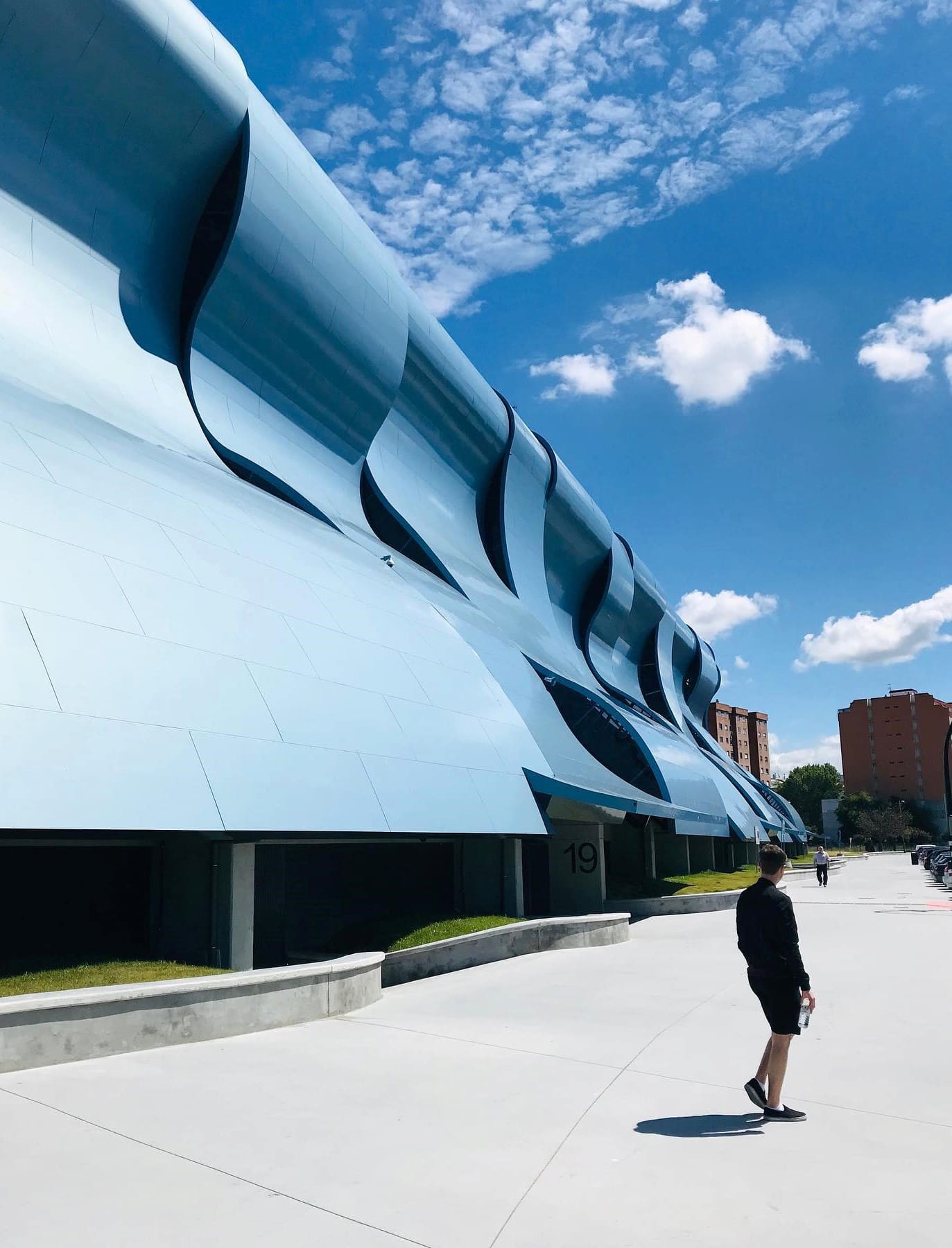
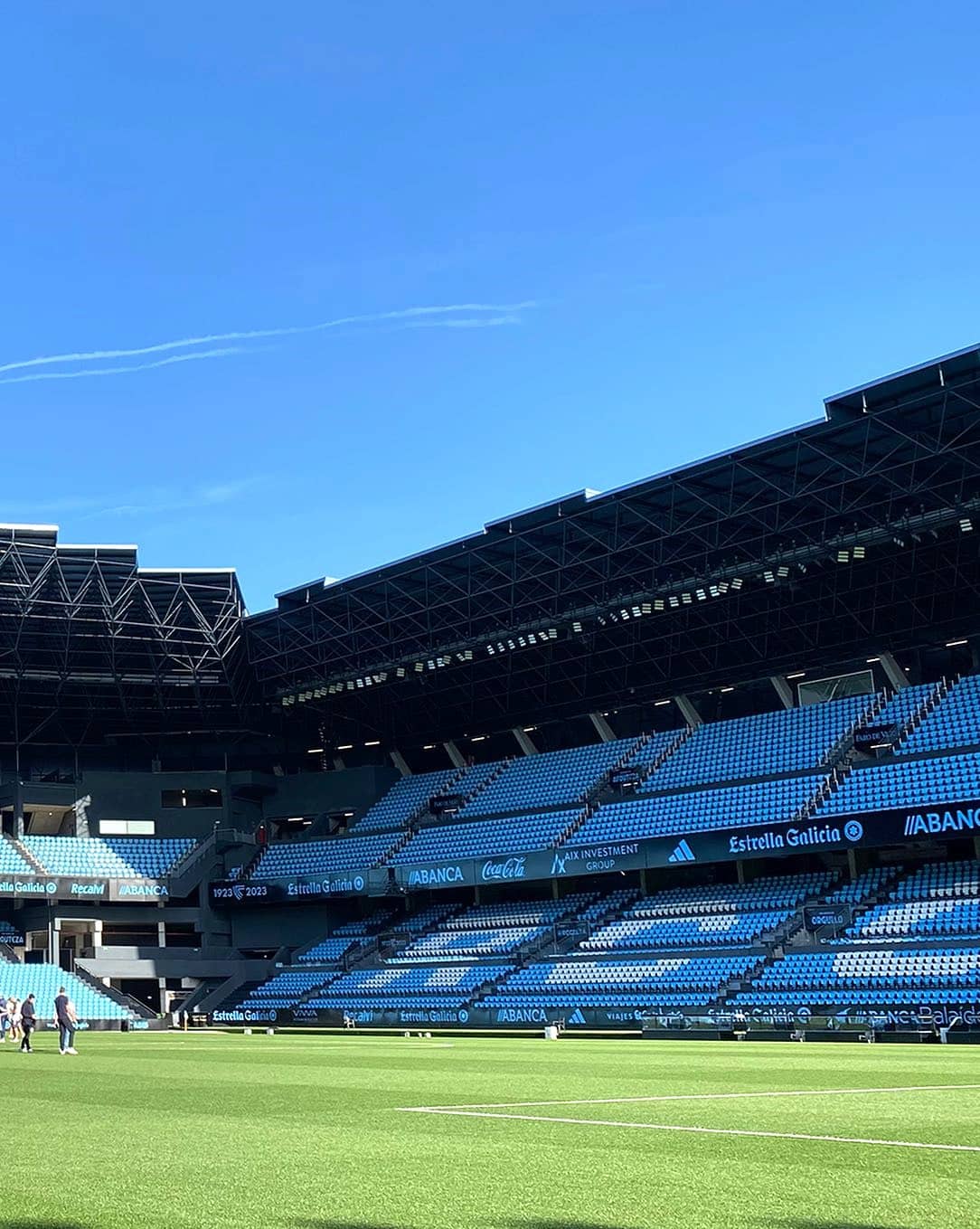
Match day atmosphere. I attended a La Liga match against Barcelona and was swept up in the passion of local supporters. The stadium erupted with traditional Galician songs and the waving of blue and white flags.
Practical info:
- Stadium capacity: 29,000
- Match tickets: €30-€80 ($33-$88) depending on the opponent
- Stadium tours: Monday-Friday, 10 am – 2 pm (except match days)
- Located in Balaídos neighborhood, accessible via bus lines C3, C9, and L17
Local tip: For the full experience, join the pre-match gatherings at bars around the stadium. Bar Balaídos on Avenida de Balaídos serves excellent tapas and is always packed with passionate fans before kickoff.
15. Monte da Guía
Hidden gem. Monte da Guía offers a peaceful escape just 10 minutes from downtown Vigo. This forested hill provides spectacular views of the Vigo bay and the Cíes Islands without the crowds of more popular viewpoints.
Nature trails. I spent a morning hiking the network of well-marked paths through:
- Pine and eucalyptus forests
- Coastal cliffs with dramatic ocean views
- Protected natural habitats with diverse birdlife
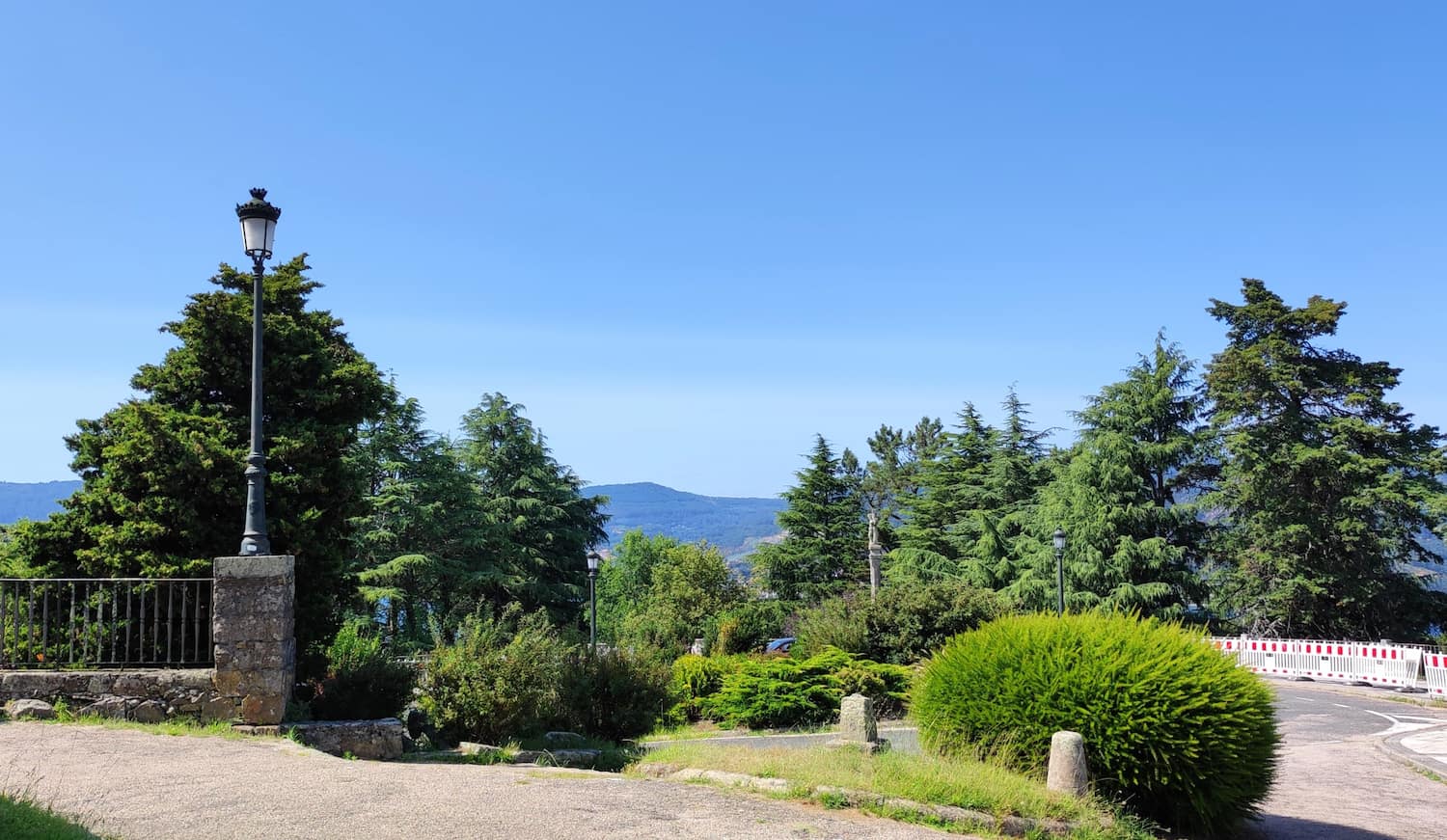
Picnic paradise. The hill features several designated picnic areas with stone tables and benches. I packed a simple lunch of local cheese, bread, and Albariño wine to enjoy with the magnificent views.
Visitor essentials:
- Free entry
- Open access year-round
- No facilities (bring water and snacks)
- Accessible by car or bus line C7 to Teis neighborhood
Hiking tip: The main trail is approximately 5 km round trip with moderate difficulty. Wear proper footwear as some sections can be steep and rocky.
Things to Do in Vigo with Kids
1. Vigo Zoo
Compact wildlife. Vigo Zoo may be small compared to other European zoos, but what it lacks in size it makes up for in charm and conservation efforts. I spent a delightful morning observing over 45 different species in natural-looking habitats.
Endangered focus. The zoo specializes in endangered Iberian species like the Iberian lynx and Spanish imperial eagle. The conservation programs they run are impressive – my guide explained how they’ve successfully reintroduced several native species back into the wild.
Kid-friendly activities. My nephew loved the children’s farm area where he could pet and feed domestic animals. The zoo offers:
- Daily feeding demonstrations
- Educational workshops (€5/$5.50)
- Interactive talks about conservation
- A playground with animal-themed equipment
Affordable family outing. Entry costs just €6/$6.60 for adults and €4/$4.40 for children under 12. Family passes (2 adults + 2 children) are available for €16/$17.60, making it an economical day out.
Visitor essentials: The zoo is open from 10am-7pm in summer and 10am-6pm in winter. It’s easily accessible via bus lines 11 and 12 from the city center, with the journey taking about 15 minutes. The on-site café serves reasonably priced sandwiches, snacks, and drinks, though you’re also welcome to bring your own picnic to enjoy in the designated areas.
Additional info: Located in Vigo’s Madroa area, the zoo spans 5.5 hectares of forested land. It focuses on conservation rather than entertainment, participating in the European Endangered Species Programme. The facility includes a botanical garden with native Galician plant species and a specialized veterinary hospital that sometimes treats wild animals found injured in the region. For those with mobility issues, the zoo provides wheelchairs free of charge, and most areas are accessible via ramps.
2. Verbum Museum and Naturnova
Interactive learning. The Verbum Museum (Casa das Palabras) completely changed my understanding of language and communication. This interactive museum uses cutting-edge technology to make linguistics fascinating for all ages.
Hands-on exhibits. My favorite section allowed me to record my voice and see it transformed into visual patterns. Children around me were captivated by games that taught them about different alphabets and writing systems from around the world.
Naturnova connection. Just a short walk away, the Naturnova Environmental Education Centre complemented my visit perfectly. Here, interactive exhibits explain Galicia’s unique ecosystems through games, simulations, and multimedia displays.
Science for everyone. Both venues excel at making complex topics accessible:
- Virtual reality experiences of natural disasters
- Climate change simulations
- Interactive language games
- Multimedia presentations about Galician ecosystems
Practical information: Verbum Museum costs €2.50/$2.75 for adults and is free for children under 12. Naturnova has a similar pricing structure. A combined ticket for both attractions costs €4/$4.40. Both venues are open Tuesday-Sunday from 10am-2pm and 4pm-8pm, closed on Mondays. They’re located near Samil Beach, easily accessible via bus lines 10 and C15.
Additional info: The Verbum Museum’s distinctive building was designed by renowned architect César Portela and resembles an open book facing the sea. Inside, you’ll find six themed areas spread across three floors, covering everything from the origins of language to digital communication. The museum hosts regular workshops for children during school holidays (booking essential, €3/$3.30 per child).
3. Family-friendly beaches
Safe swimming. Vigo’s beaches are perfect for families with young children. I was impressed by the gentle slopes into the water and the calm conditions at beaches like Canido, which has almost no waves thanks to its protected position in the estuary.
Beach infrastructure. Samil Beach offers the most comprehensive facilities for families:
- Lifeguards on duty (June-September)
- Shallow swimming areas marked with buoys
- Clean public toilets and changing rooms
- Accessible wooden walkways for strollers
- Multiple playgrounds directly on the sand
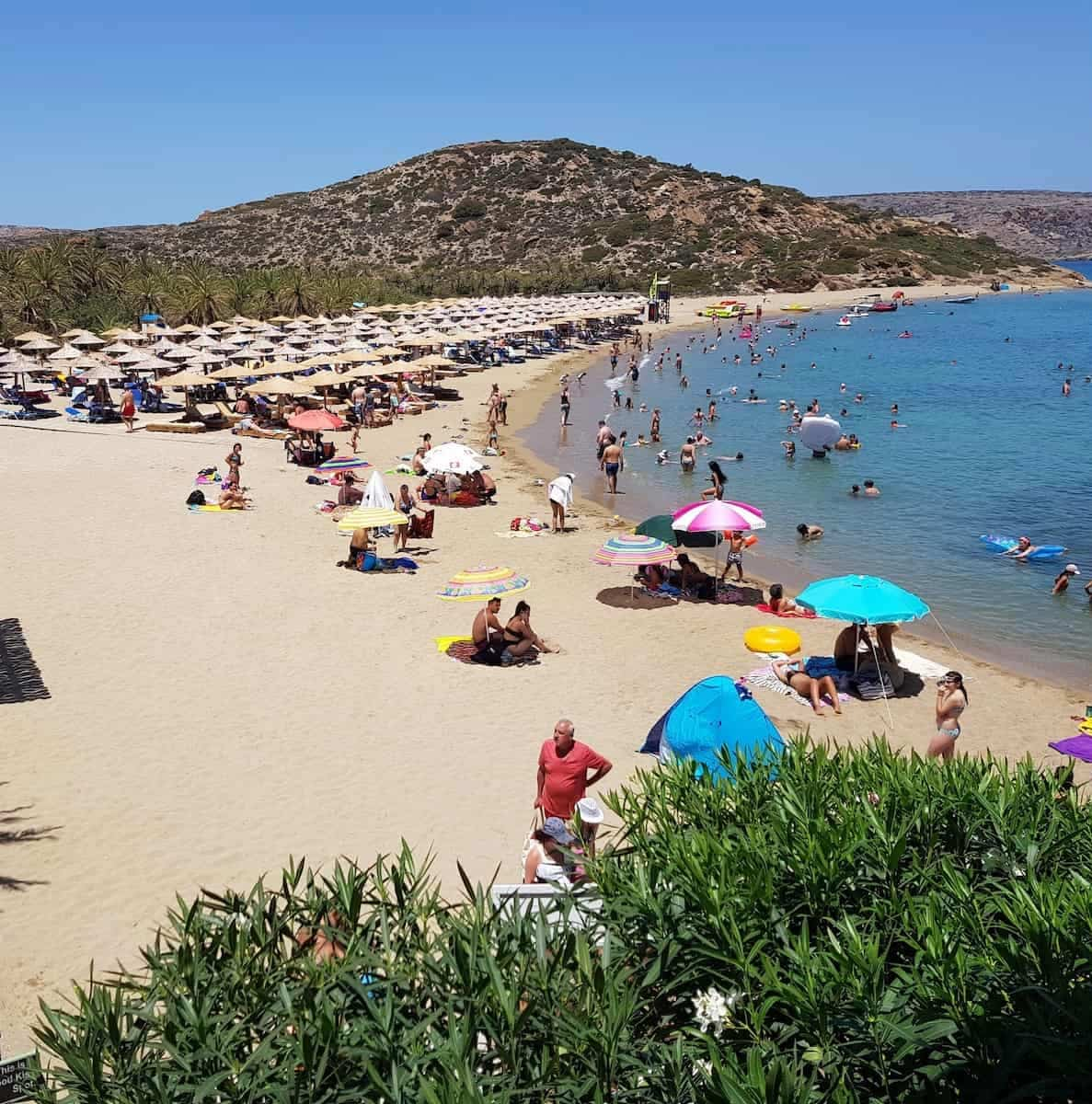
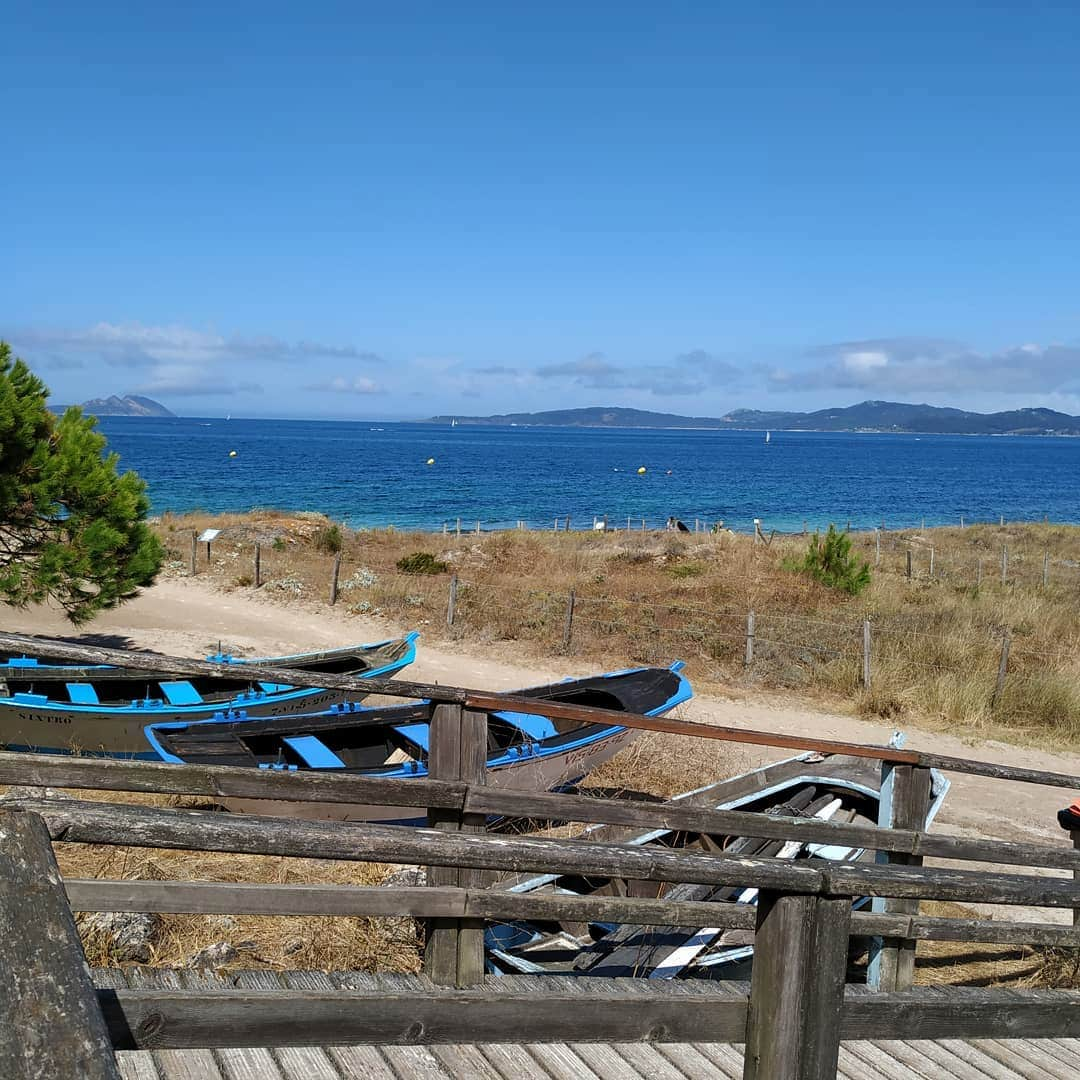
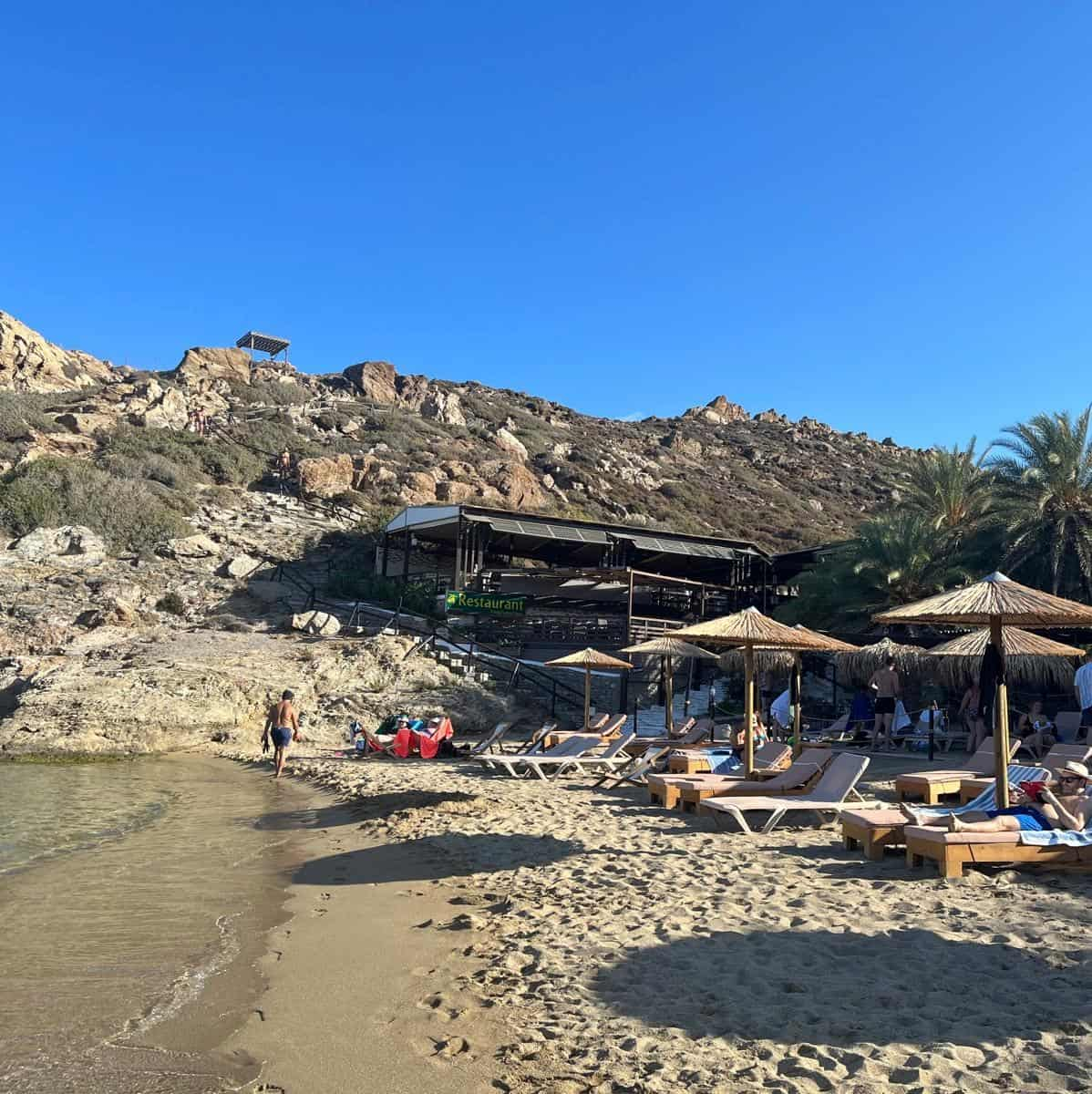
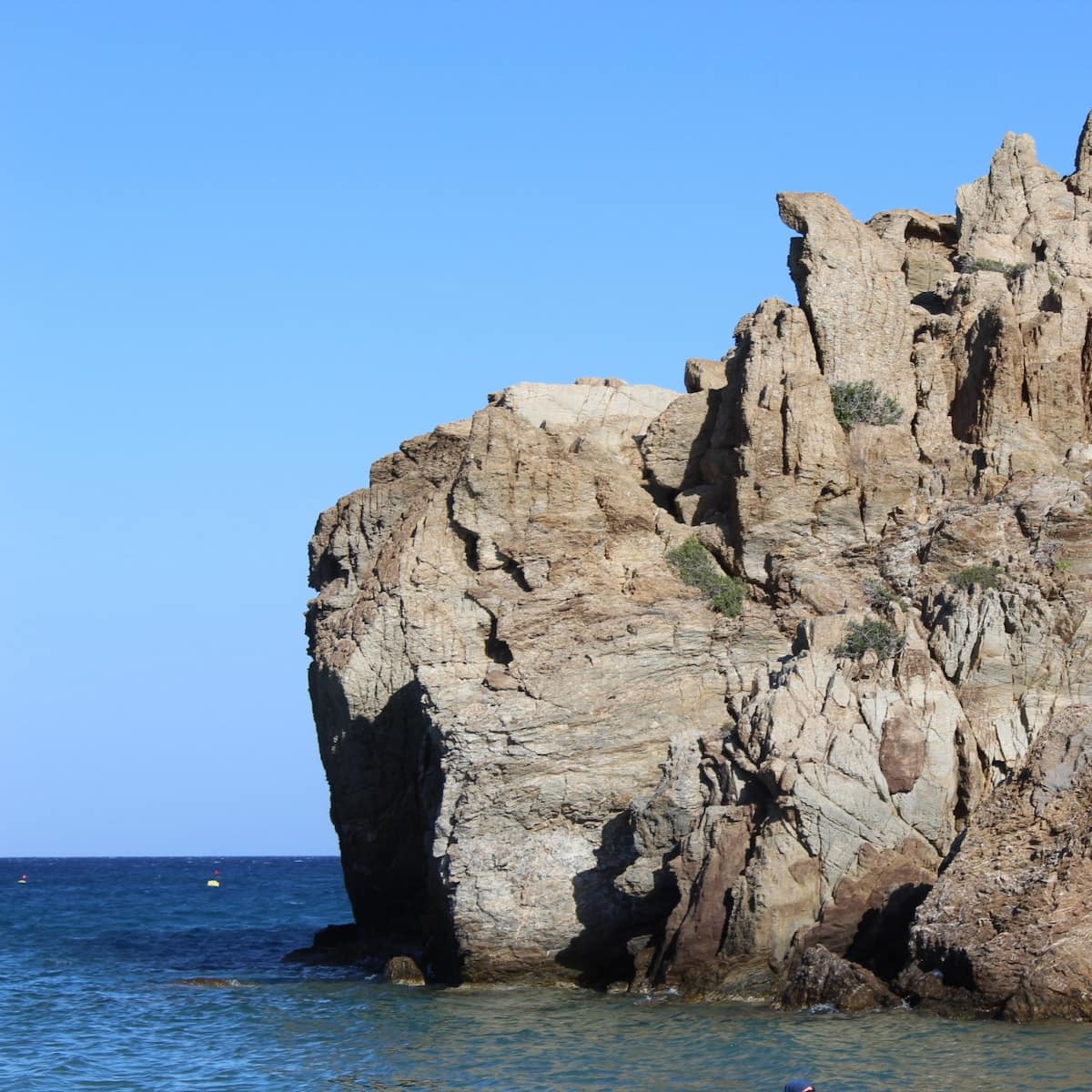
Beyond swimming. My niece and nephew never got bored thanks to the variety of activities available. They built sandcastles using the free buckets and spades provided at the beach library kiosk, played on the volleyball courts, and explored tide pools teeming with marine life.
Comfort amenities. I appreciated the thoughtful touches that made our beach day comfortable – shaded picnic areas, freshwater showers, and affordable beach chair rentals (€3/$3.30 for the day).
Family tip: Playa de Vao is slightly less crowded than Samil but equally family-friendly. It has a fantastic playground right on the promenade and several ice cream kiosks selling homemade Galician flavors for €2/$2.20 per scoop.
Free Things to Do in Vigo
1. Alameda Park
Green heart. Alameda Park sits at the center of Vigo’s urban life, offering a refreshing escape from the city bustle. I spent a delightful afternoon under the shade of century-old trees, watching locals play chess and families enjoying picnics on the manicured lawns.
Historical significance. The park dates back to the 19th century and features several monuments that tell Vigo’s story. The central statue honors the heroes who defended the city during the 1809 French invasion – a proud moment in local history.
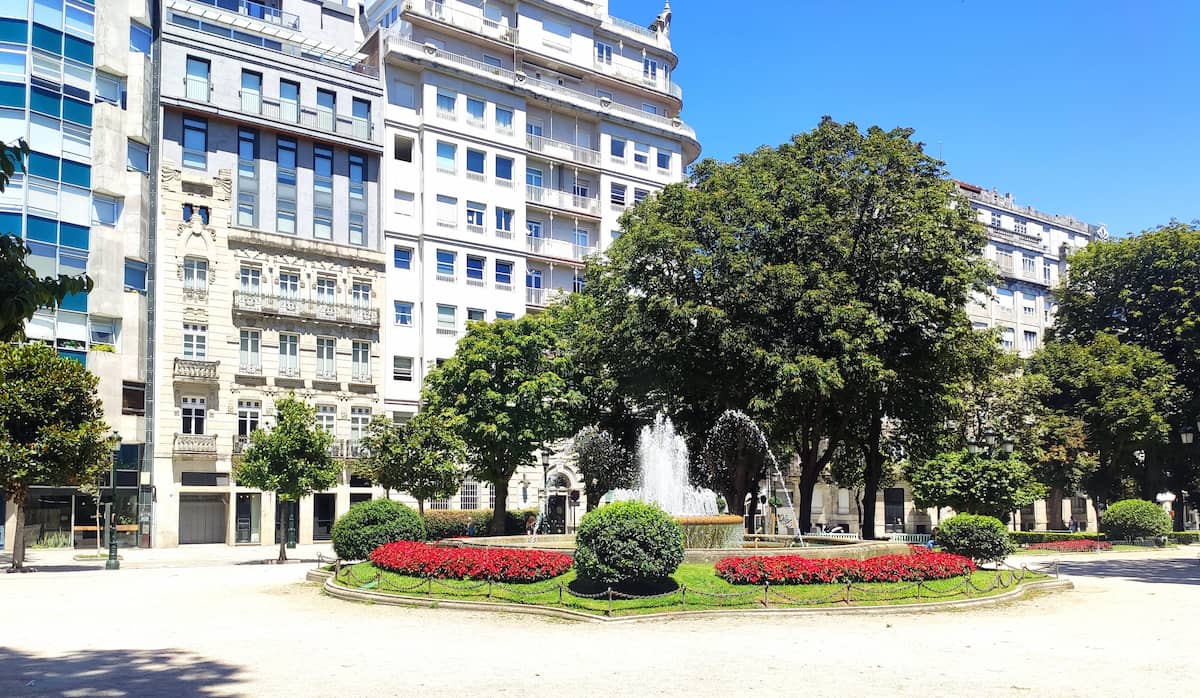
Floral displays. Seasonal flower beds create vibrant color patterns throughout the year. During my spring visit, the camellia collection was in full bloom, showcasing Galicia’s emblematic flower in dozens of varieties.
Cultural hub. The park hosts numerous events:
- Free open-air concerts on summer weekends
- Traditional dance performances on Sunday mornings
- Book fairs and artisan markets during festivals
- Outdoor photography exhibitions
Visitor essentials: Located between Policarpo Sanz Street and Puerta del Sol, Alameda Park is easily accessible from anywhere in the city center. The park is open 24/7 and features clean public restrooms, several drinking fountains, and ample seating areas.
Additional info: The park’s bandstand (kiosko) is a protected historical structure dating from 1923, featuring beautiful ironwork and stained glass. The park is home to several notable trees, including a magnificent magnolia planted in 1876 and a collection of palm trees brought from Cuba during colonial times.
2. Cathedral of Santa María
Religious centerpiece. The Co-Cathedral of Santa María (officially Santa María Collegiate Church) stands as Vigo’s most important religious building. Despite its modest exterior, I was amazed by the richness of the interior with its impressive baroque altarpiece.
Historical layers. Built on the site of a previous Gothic church destroyed by Francis Drake’s attack in 1589, the current neoclassical structure dates from the 16th-19th centuries. Each chapel tells a different chapter of Vigo’s religious history.
Artistic treasures. Inside, I discovered:
- A stunning 18th-century baroque altarpiece by Castro Canseco
- The venerated Cristo de la Victoria statue, carried through the streets during annual processions
- Beautiful stained glass windows depicting maritime scenes
- Intricate stone carvings showing Galician mythological figures
Visitor information: The cathedral is open daily from 9am-1pm and 5pm-8pm. Entry is free, though donations are appreciated. Masses are held daily at 8am and 7pm, with additional services on Sundays. Photography is permitted except during services.
Local insight: Look for the small stone carving of a scallop shell near the entrance – it marks the cathedral as a stop on the Portuguese Coastal Way of the Camino de Santiago pilgrimage route. Many pilgrims receive stamps for their credential booklets here.
Additional info: The cathedral is located in the heart of the Old Town (Casco Vello), making it an excellent starting point for exploring the historic district. The square in front (Praza da Igrexa) hosts a small market on Saturday mornings where local farmers sell organic produce and homemade bread.
3. Marina
Nautical playground. Vigo’s marina captivated me with its blend of luxury yachts, traditional fishing boats, and sailing vessels. The waterfront promenade offers a fascinating glimpse into the city’s maritime character, from working fishermen to leisure sailors.
Sunset strolls. My evening walks along the marina were magical – the golden light reflecting off the water as fishing boats returned with their daily catch. The atmosphere transforms as restaurants and bars along the waterfront come alive with locals enjoying after-work drinks.
Maritime activities. The marina offers numerous experiences for visitors:
- Sailing lessons for beginners (from €40/$44 per hour)
- Fishing charters with local experts (€60/$66 per person)
- Sunset cruises around the bay (€25/$27.50)
- Kayak and paddleboard rentals (€12/$13.20 per hour)
Culinary delights. The restaurants lining the marina serve the freshest seafood in Vigo. I tried the “mariscada” (seafood platter) at Restaurante Marítimo – at €35/$38.50 for two people, it was excellent value for the incredible quality and variety.
Practical information: The marina is located at the end of Montero Ríos Avenue, a pleasant 10-minute walk from the city center. It’s open to visitors 24/7, though most services operate from 9am-8pm. The Real Club Náutico de Vigo (Yacht Club) offers visitor memberships for those interested in using their facilities.
Additional info: Vigo’s marina is one of the largest in northern Spain, with berths for over 350 vessels. The area hosts the annual Vigo Seafest in July, where you can sample seafood prepared by the city’s top chefs at affordable prices.
4. Ensanche district
Architectural showcase. Vigo’s Ensanche district surprised me with its elegant boulevards and impressive buildings. This planned urban expansion from the early 20th century features some of Galicia’s finest modernist and art deco architecture.
Shopping paradise. Centered around Príncipe Street and Urzáiz Street, the Ensanche offers the city’s premier shopping experience:
- El Corte Inglés department store for one-stop shopping
- Boutique fashion stores featuring Galician designers
- Specialized shops selling traditional ceramics and textiles
- Gourmet food stores with local delicacies
Café culture. I loved starting my mornings at the historic Café Alameda, where intellectuals and artists have gathered since 1925. Their churros con chocolate (€3.50/$3.85) and views of bustling Gran Vía make for a perfect people-watching spot.
Cultural venues. The district houses several important cultural institutions:
- Teatro García Barbón, an architectural masterpiece hosting performances
- Fundación Barrié with rotating art exhibitions (free entry)
- Centro Cultural Novacaixagalicia with music and dance events
- Several independent art galleries and bookshops
Local tip: The side streets between Gran Vía and Urzáiz hide some of Vigo’s best tapas bars. Try El Mosquito on Venezuela Street, where each drink comes with a complimentary tapa – their tortilla española is legendary among locals.
Seasonal Activities in Vigo
1. La Reconquista (March 28-30)
Historical celebration. La Reconquista is Vigo’s most important festival, taking place this weekend! This celebration commemorates March 28, 1809, when Vigo became the first European town to successfully expel Napoleon’s army through a popular uprising.
Time travel experience. The Casco Vello (Old Town) transforms into a massive 19th-century outdoor market. I was amazed by hundreds of locals in period costumes – soldiers, fishermen, farmers, and artisans – recreating the historical events throughout the streets.
Battle reenactments. The highlight is definitely the theatrical performances of the battle. About 500 participants (including 50 French soldiers, 70 militia members, and 400 civilians) stage skirmishes throughout the old quarter, culminating in the dramatic scene at Gamboa Street where they recreate the demolition of the villa’s door.
Gastronomic delights. Food stalls line the streets offering traditional Galician specialties:
- Fresh seafood (crabs, mussels)
- Empanadas (meat and seafood pies)
- Churrasco (grilled meat)
- Local wines and traditional liquors
Festival extension. If you’re staying in Vigo next weekend, don’t miss the Festival of A Brincadeira in Bouzas, which continues the celebrations. This former independent fishing village also played a crucial role in expelling Napoleon’s forces.
2. Summer festivals and events
Vigo’s Great Week. The city’s biggest traditional festival takes place during the first week of August. The highlight is the procession of the Christ of Victory, where thousands accompany the sacred figure through the streets to Santa Maria Church. The festival features numerous free concerts throughout the city.
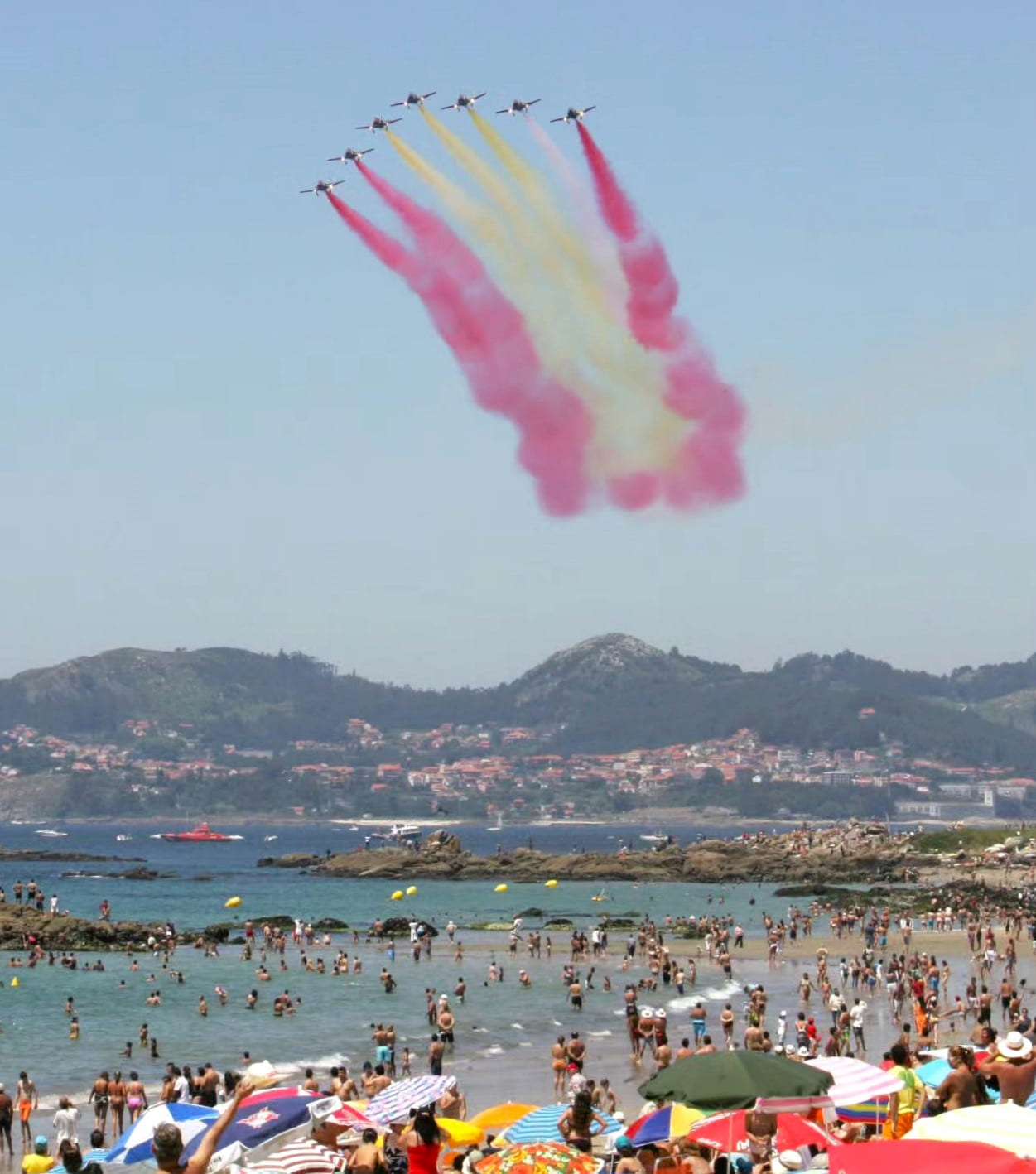

Festival Aéreo Vigo. This international airshow runs from July to August, creating a spectacular atmosphere over Samil Beach. With the Cíes Islands as backdrop, this event attracts over 200,000 spectators annually, making it one of Spain’s largest airshows.
Vigofolcelta Fiesta. From July 13-19, this Celtic festival transforms parts of the city into a medieval wonderland. I loved exploring the themed markets and stalls that celebrate Galicia’s Celtic heritage through music, crafts, and food.
Imaxinasons Jazz Festival. Held every June, this two-week celebration features indoor and outdoor jazz performances throughout Vigo. Most concerts are either free or very affordable. The festival also includes workshops, seminars, and street parades.
3. Carnival (Entroido) celebrations (February/March)
Unique tradition. O Entroido (Carnival) in Vigo offers a distinctive Galician take on pre-Lenten celebrations. Unlike other carnivals focused just on parades, Vigo’s celebration blends Catholic traditions with ancient pagan rituals that once marked the transition from winter to spring.
The reign of Meco. The festival begins with the enthronement of “Meco,” a puppet representing the god of Carnival. During Meco’s reign, normal social rules are suspended, and the city embraces a spirit of satire and revelry.
Colorful parades. The streets come alive with vibrant processions featuring elaborate costumes, music, and dance. Local comparsas (carnival groups) perform satirical pieces that poke fun at current events and political figures.
Burial of the Sardine. On Ash Wednesday, Vigo stages the sarcastic “Burial of the Sardine” ceremony. After Meco is symbolically killed, a mock funeral procession winds through the city center, marking the end of the carnival period and the beginning of Lent.
Traditional treats. Don’t miss sampling the seasonal delicacies:
- Orellas de Carnival (ear-shaped fried pastries)
- Filloas (Galician crepes)
4. Autumn wine harvest festivities
Vendimia celebrations. Autumn in Galicia marks the grape harvest season, celebrated through vendimia festivals throughout the region. These events blend viticulture traditions with cultural celebrations, marking the transition from summer to fall.
Albariño connection. While the famous Albariño Festival takes place in nearby Cambados (Pontevedra), Vigo and its surrounding areas participate in the regional celebration of the grape harvest, particularly focusing on the local Albariño grape variety that thrives in Galicia’s unique climate.
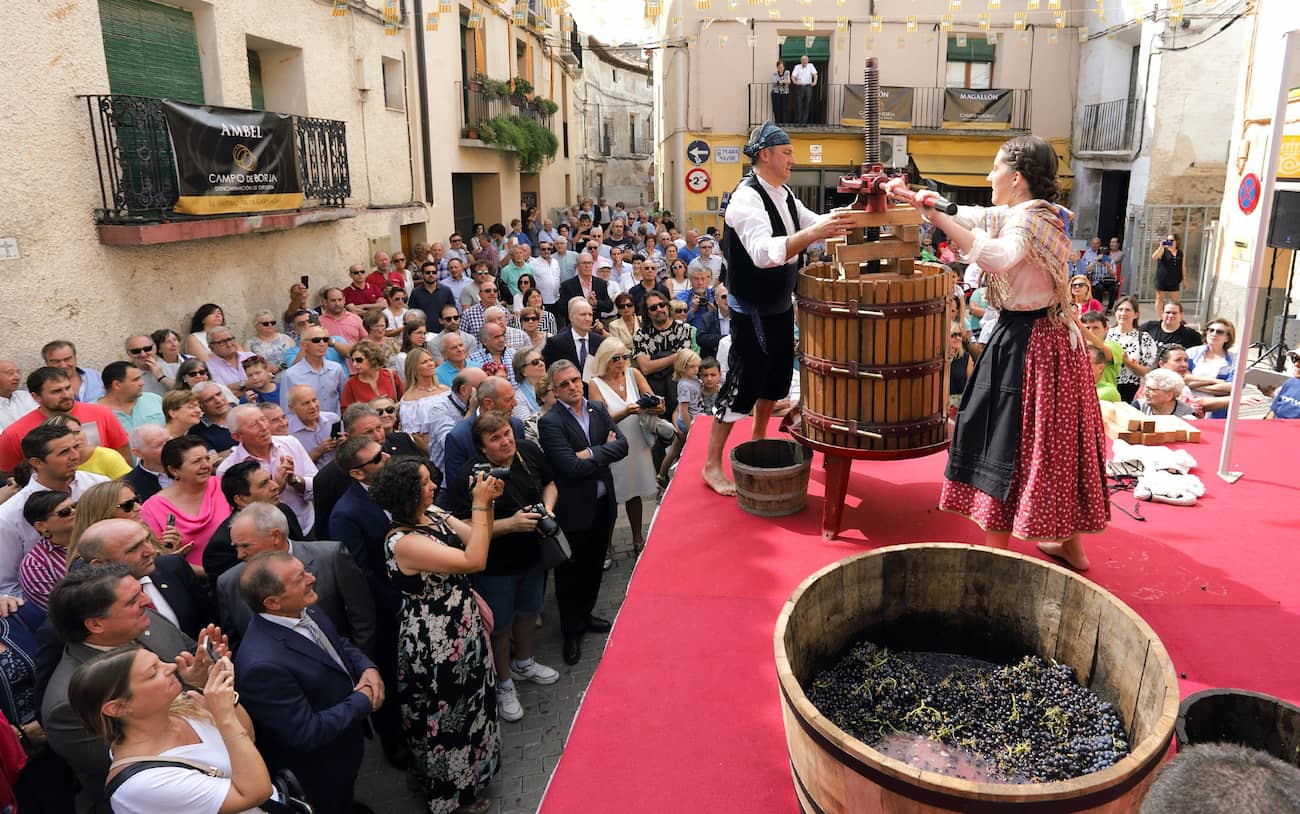
Traditional activities. Harvest festivals typically include:
- Grape treading demonstrations
- Wine tastings from local producers
- Folk music and traditional dance performances
- Gastronomic fairs featuring seasonal products
Cultural significance. These autumn celebrations connect modern Vigo with its agricultural heritage. Even in this urban center, the rhythms of rural life and the importance of wine production to the regional economy are honored through these festivities.
Local insight: For the most authentic experience, venture to the smaller towns surrounding Vigo in September and October. Many family-owned vineyards open their doors to visitors during this season, offering tastings and tours that showcase traditional winemaking methods passed down through generations.
Day Trips from Vigo
1. Pontevedra
Historic charm. Just 30 minutes from Vigo, Pontevedra captivated me with its pedestrian-friendly Old Town. The maze of granite streets and plazas creates one of Galicia’s most beautiful urban spaces, perfect for wandering without a set plan.
Plaza life. The city is famous for its numerous plazas, each with its own character. I spent a delightful afternoon moving between them:
- Praza da Leña with its stone cruceiros
- Praza de Verduras with its central fountain
- Praza do Teucro surrounded by cafés and restaurants
Architectural gems. The Basilica of Santa María la Mayor impressed me with its Gothic-Renaissance façade. For a small fee, I climbed the bell tower for spectacular views of the city and Lérez River.
Cultural immersion. The Provincial Museum of Pontevedra offers free entry and houses an impressive collection of Galician art and artifacts. I spent about two hours exploring its different sections, including fascinating exhibits on Celtic tribes who inhabited the region before the Romans.
Day trip bonus. If you have extra time, the fishing village of Combarro is just 8km away. This magical place features over 30 hórreos (traditional granaries) built right along the shoreline – a truly unique sight when they appear to float above the water during high tide.
⭐ Best activities
- Pontevedra Private Walking Tour – Discover the charming city of Pontevedra on this private walking tour with a knowledgeable local guide who will show you the historic center’s highlights while sharing fascinating stories about the city’s rich history and culture.
2. Santiago de Compostela
Pilgrimage destination. The journey to Santiago de Compostela takes about an hour from Vigo, but it’s absolutely worth it. This UNESCO World Heritage city is the culmination point of the famous Camino de Santiago pilgrimage routes.
Cathedral magnificence. The Santiago Cathedral left me speechless with its Romanesque, Gothic and Baroque elements. Time your visit for the Pilgrim’s Mass at noon when they sometimes swing the massive Botafumeiro incense burner across the transept – a truly spectacular sight.
Old Town exploration. The historic center features gorgeous granite buildings, atmospheric squares, and hidden corners. I lost myself for hours in the narrow medieval streets, discovering charming cafés and artisan shops.
Cultural stops. Beyond the cathedral, Santiago offers several excellent museums:
- Museo das Peregrinacións dedicated to the pilgrimage
- CGAC (Galician Contemporary Art Centre)
- Museum of the Galician People in a former convent
Gastronomic delights. The Mercado de Abastos (food market) showcases Galicia’s incredible produce. Many stalls will cook your seafood purchases on the spot for a small fee – I enjoyed the freshest octopus I’ve ever tasted for just €15.
⭐ Best Activities
-
Full-Day Excursion to Santiago from Vigo (Cruisers Only) – Experience a comprehensive day trip from Vigo to the historic city of Santiago de Compostela, designed specifically for cruise ship passengers. Explore the famous cathedral, wander through charming streets, and learn about the city’s rich pilgrimage history.
3. Baiona
Maritime history. Just 20 minutes south of Vigo, Baiona holds a special place in history as the first European port to receive news of America’s discovery. The replica of Columbus’s ship La Pinta in the harbor makes for a fascinating visit.
Medieval fortress. Monte Boi and Castelo de Monterreal dominate the town. I spent a wonderful morning walking the 2km path around the fortress walls, enjoying spectacular views of the estuary and Cíes Islands. The castle now houses the Parador hotel, but the grounds are open to visitors.

Charming old quarter. Baiona’s medieval center is filled with granite houses, seafood restaurants, and small shops. The cobblestone streets lead to hidden plazas where I found locals enjoying tapas and Albariño wine at outdoor terraces.
Coastal beauty. The seaside promenade offers lovely views back to the fortress. I continued walking to Ladeira Beach, a beautiful stretch of sand protected by dunes where families and couples were relaxing away from the more touristy center.
Unique monument. Don’t miss the impressive Virgen de la Roca statue standing 15 meters tall on a hillside west of town. For €2, I climbed the internal spiral staircase to stand on the boat in the Virgin’s hand, enjoying incredible panoramic views of the coastline.
⭐ Best activities
- Baiona Galicia Walking Tour with a Local Guide – Discover the charming coastal town of Baiona on this guided walking tour. Explore the historic streets and learn about the rich maritime history of this Galician gem with an expert local guide who will share fascinating stories and insights about the town’s culture and heritage.
4. Tui
Border town charm. Located on the Spanish side of the Miño River just 25 minutes from Vigo, Tui faces its Portuguese twin Valença across an iron bridge designed by Eiffel’s company. I loved being able to walk between two countries in just minutes!
Fortress cathedral. Tui’s Cathedral of Santa María dominates the hilltop with its imposing presence. Built between the 12th and 13th centuries, it features defensive walls and crenellated towers – a reminder of the historical tensions between Spain and Portugal.
Medieval streets. The old town is a delight to explore with its narrow lanes climbing up to the cathedral. I discovered beautiful squares, noble houses with coats of arms, and remnants of the old city walls offering spectacular views over the river.




Sweet traditions. The Poor Clares’ Convent (Las Encerradas) has housed cloistered nuns for over 500 years. They’re famous for making “pececitos de almendra” (almond fish) – I purchased a box of these delicious treats through the convent’s window for €8.
Natural escape. Just north of town, Monte Aloia Natural Park offers hiking trails through lush forests and spectacular viewpoints. On a clear day, I could see all the way to the Cíes Islands from the summit – a perfect complement to the historical exploration of Tui.
Getting there: Regular buses connect Vigo to Tui (25 minutes, €4) and Baiona (25 minutes, €4). For Pontevedra and Santiago de Compostela, trains are the best option, with journeys taking approximately 30 minutes and 1 hour respectively.
⭐ Best Activities
- Tuy and Baiona Private Tour: Two Essential Visits in Rias Baixas – Venture beyond Vigo on this private tour to the charming towns of Tuy and Baiona, exploring their medieval architecture, historical significance, and picturesque coastal settings in the Rias Baixas region.
5. Cíes Islands
Paradise found. The Cíes Islands are Vigo’s crown jewel – a protected marine-terrestrial national park just 45 minutes by ferry from the city. When I first saw Rodas Beach connecting Monte Agudo and O Faro islands, I understood why The Guardian named it “the best beach in the world.”
Getting there. Ferries depart from Vigo’s maritime station daily between March and October. Round-trip tickets cost €20 ($22) for adults, and you must request permission to visit in advance through the national park website.
Hiking paradise. I tackled the Monte Agudo trail (6km) which led me to Faro do Peito lighthouse. The panoramic views of the Vigo estuary were absolutely worth the moderate difficulty of the terrain.
Wildlife watching. The islands are a bird watcher’s dream. At the bird observatory, I spotted yellow-legged gulls, cormorants, and even the occasional dolphin (locally called “arroaces”) swimming in the crystal-clear waters below.
Practical advice: There are no garbage cans on the islands – everything you bring must leave with you. Pack light but bring water, sunscreen, and a picnic lunch. If you’re planning to stay overnight, camping is the only accommodation option (€15/$16.50 per night).
| Activity | Price (€) | Price ($) |
|---|---|---|
| Ferry ticket (round-trip) | €20 | $22 |
| Camping (per night) | €15 | $16.50 |
| Kayak rental (1 hour) | €12 | $13 |
| Snorkeling equipment rental | €8 | $8.75 |
FAQ❔
What are the must-see attractions in Vigo?
The Cíes Islands, Monte O Castro, and Casco Vello (Old Town) are absolute must-sees in Vigo. For a complete experience, also visit the MARCO art museum and take a boat tour of the Ría de Vigo estuary.
When is the best time to visit Vigo?
Late spring (May-June) and early autumn (September-October) offer ideal weather with fewer crowds and pleasant temperatures. July and August bring warmer temperatures perfect for beach activities, but expect more tourists and higher prices.
Where can I find the best seafood in Vigo?
Oyster Street (Rúa das Ostras) in the Old Town offers the freshest oysters served directly on the street. For a more comprehensive seafood experience, visit the restaurants around the fishing port or in Bouzas neighborhood, where the pulpo a feira (octopus with paprika) and percebes (goose barnacles) are exceptional.
Is Bouzas worth visiting while in Vigo?
Bouzas is absolutely worth visiting for its charming fishing village atmosphere and excellent seafood restaurants. This former independent town hosts the Festival of A Brincadeira right after La Reconquista celebrations, offering a glimpse into local traditions and maritime heritage.
